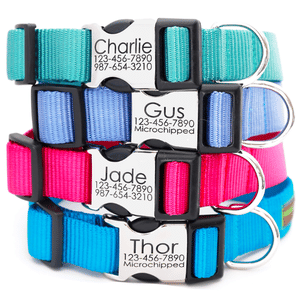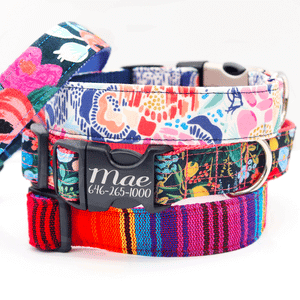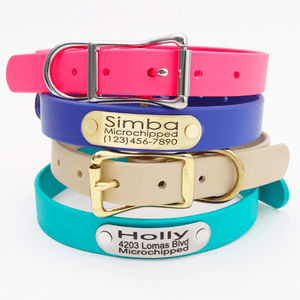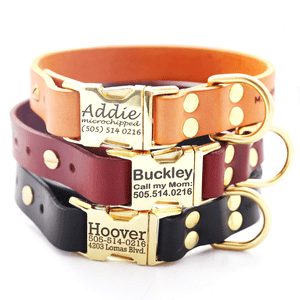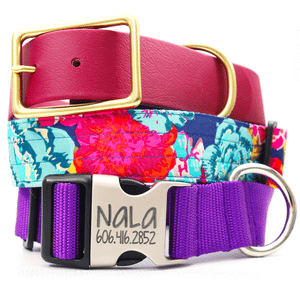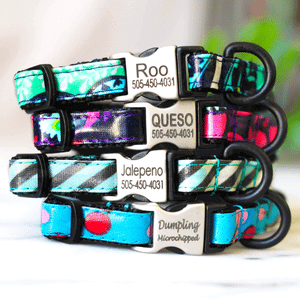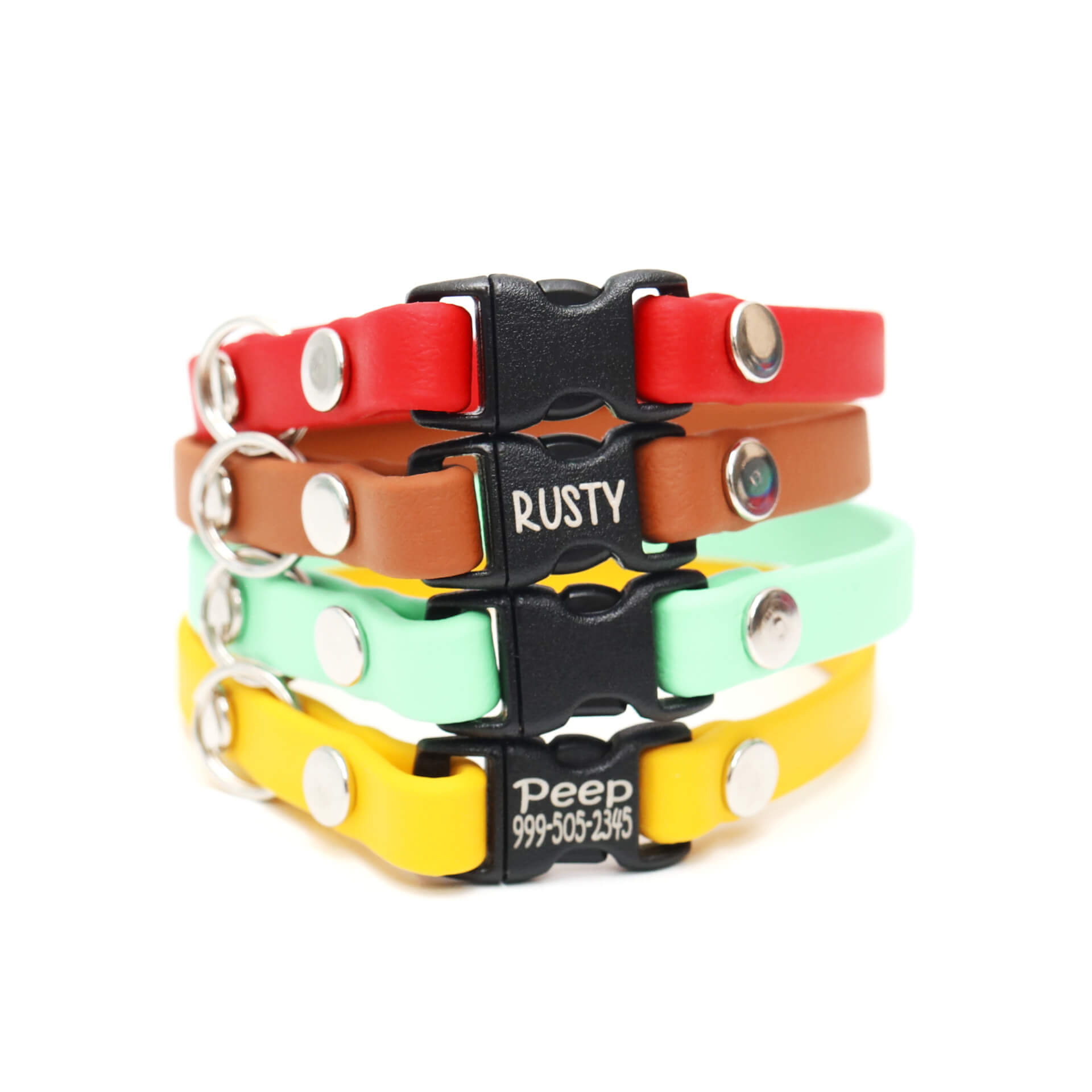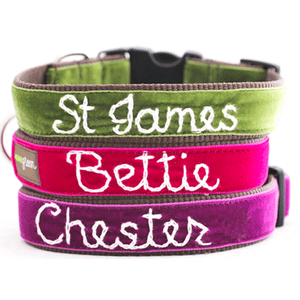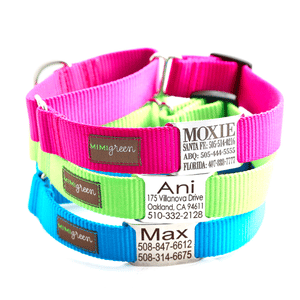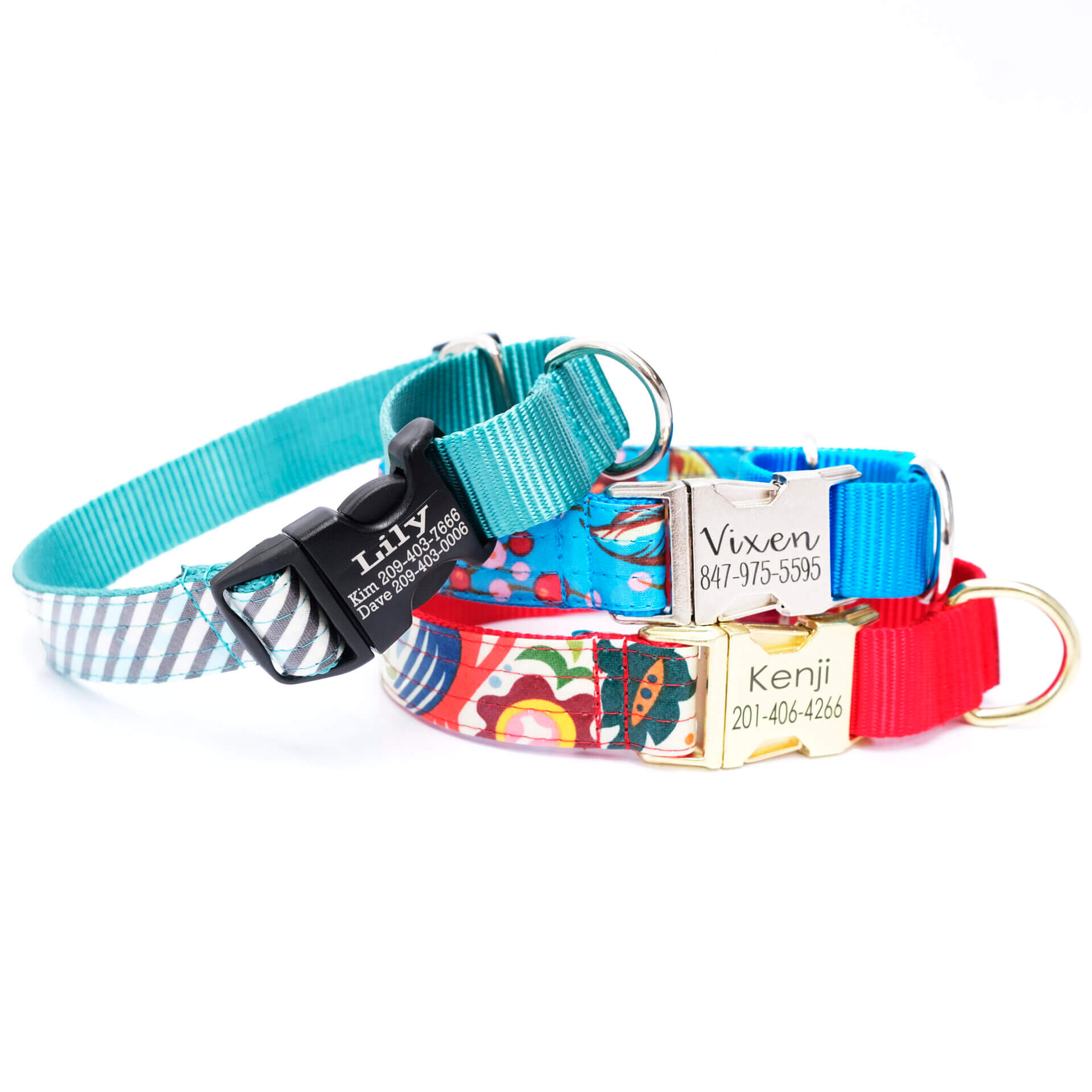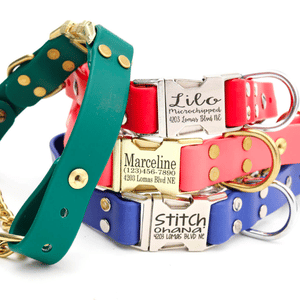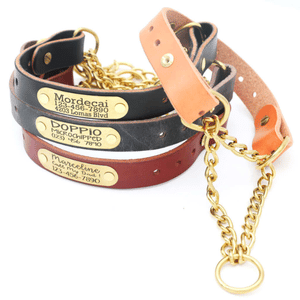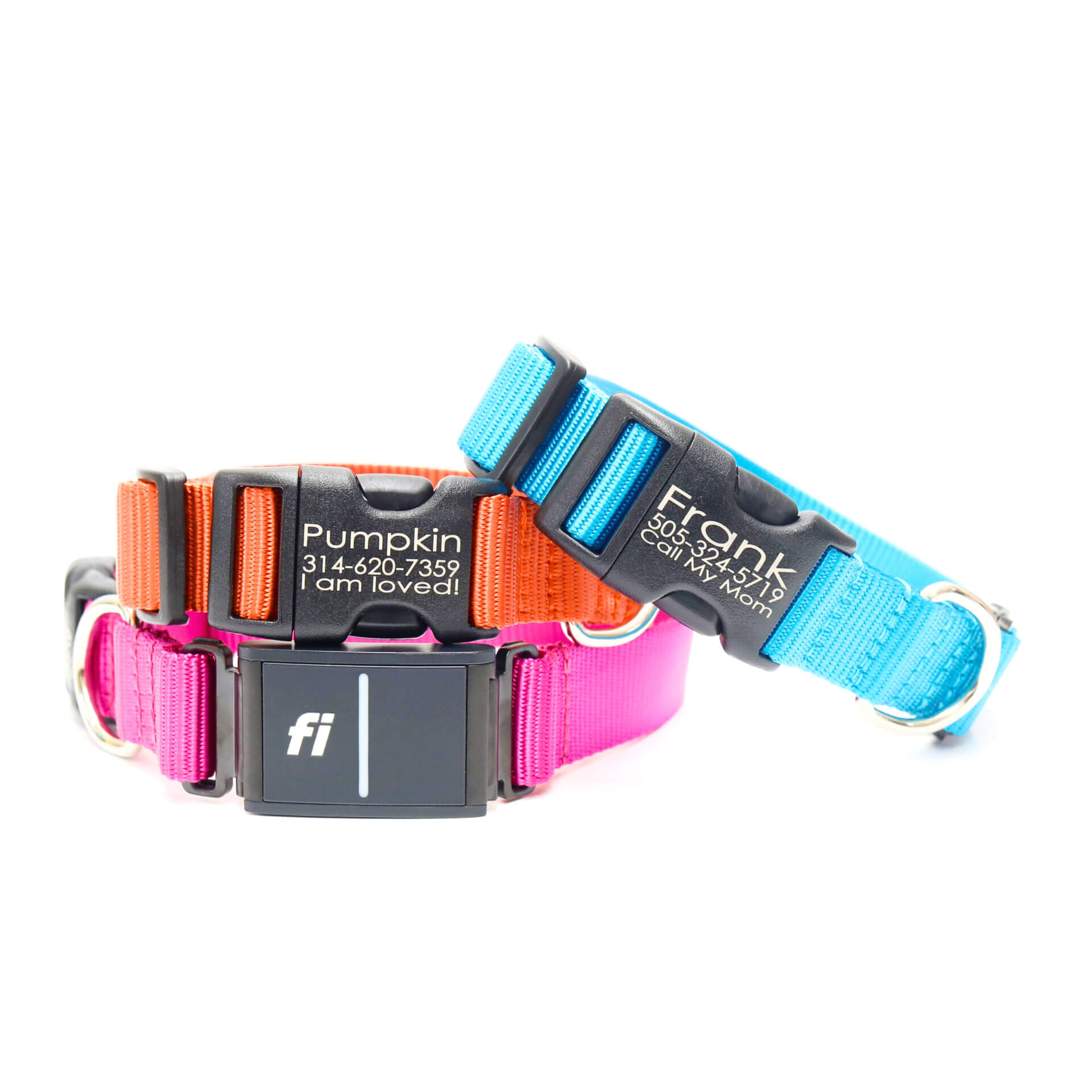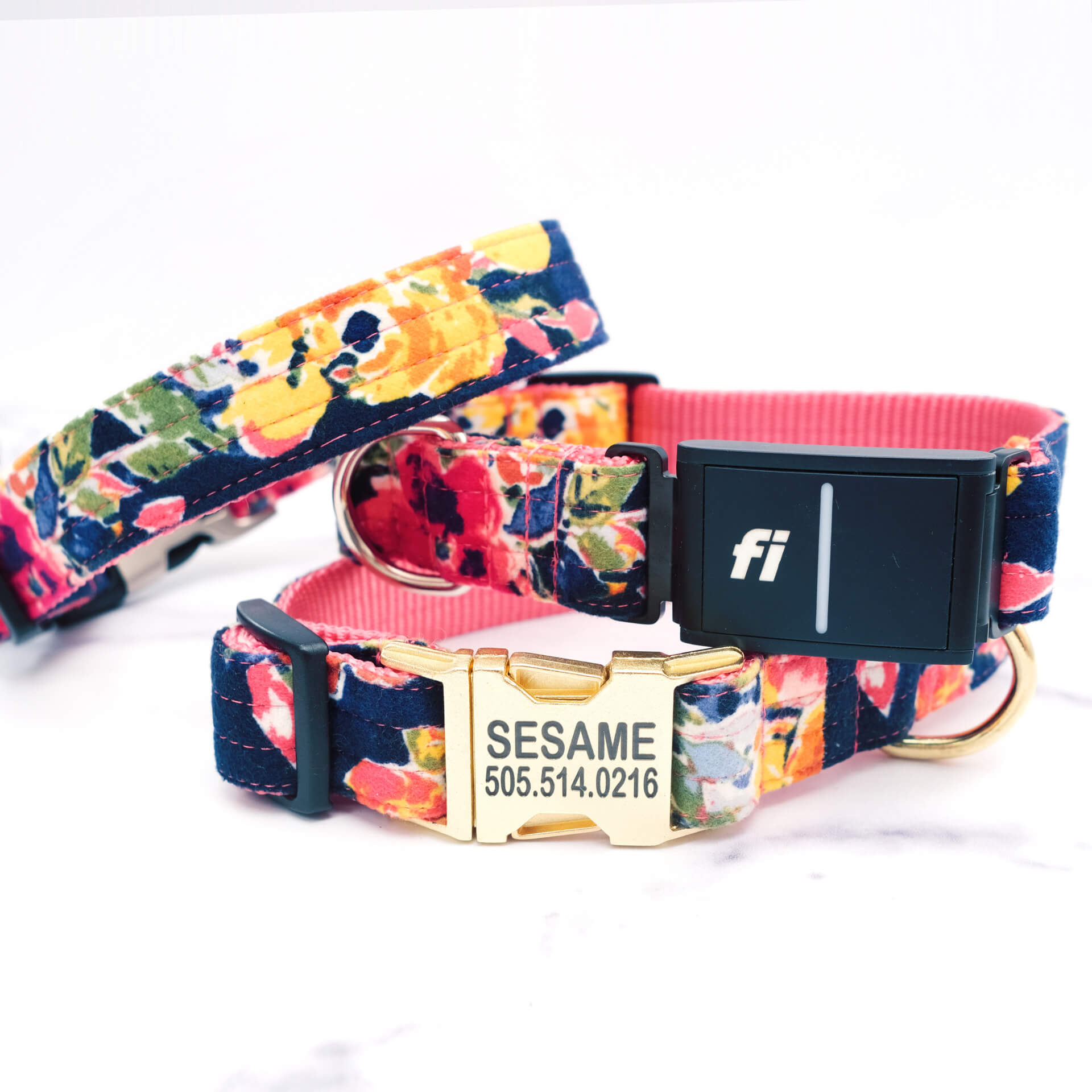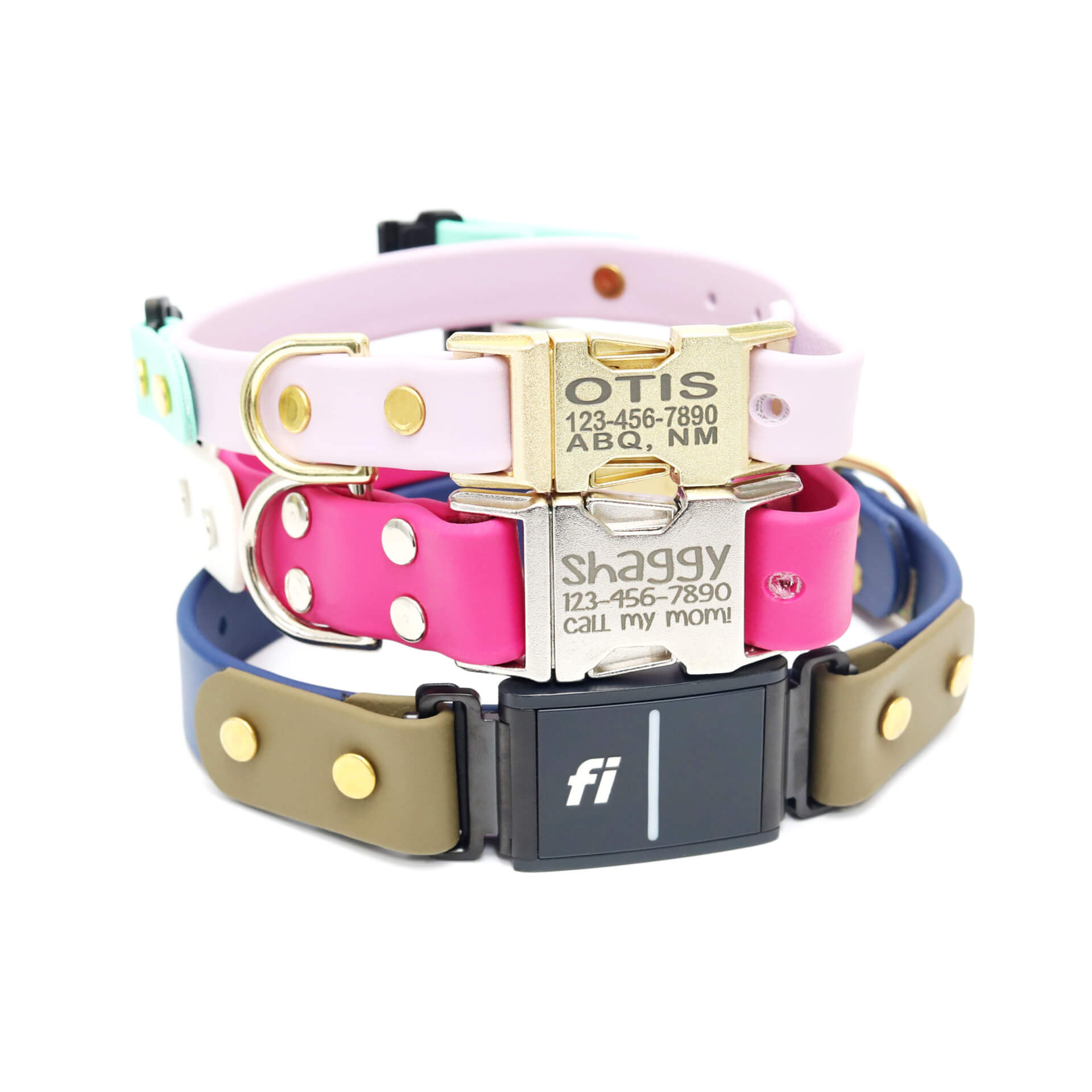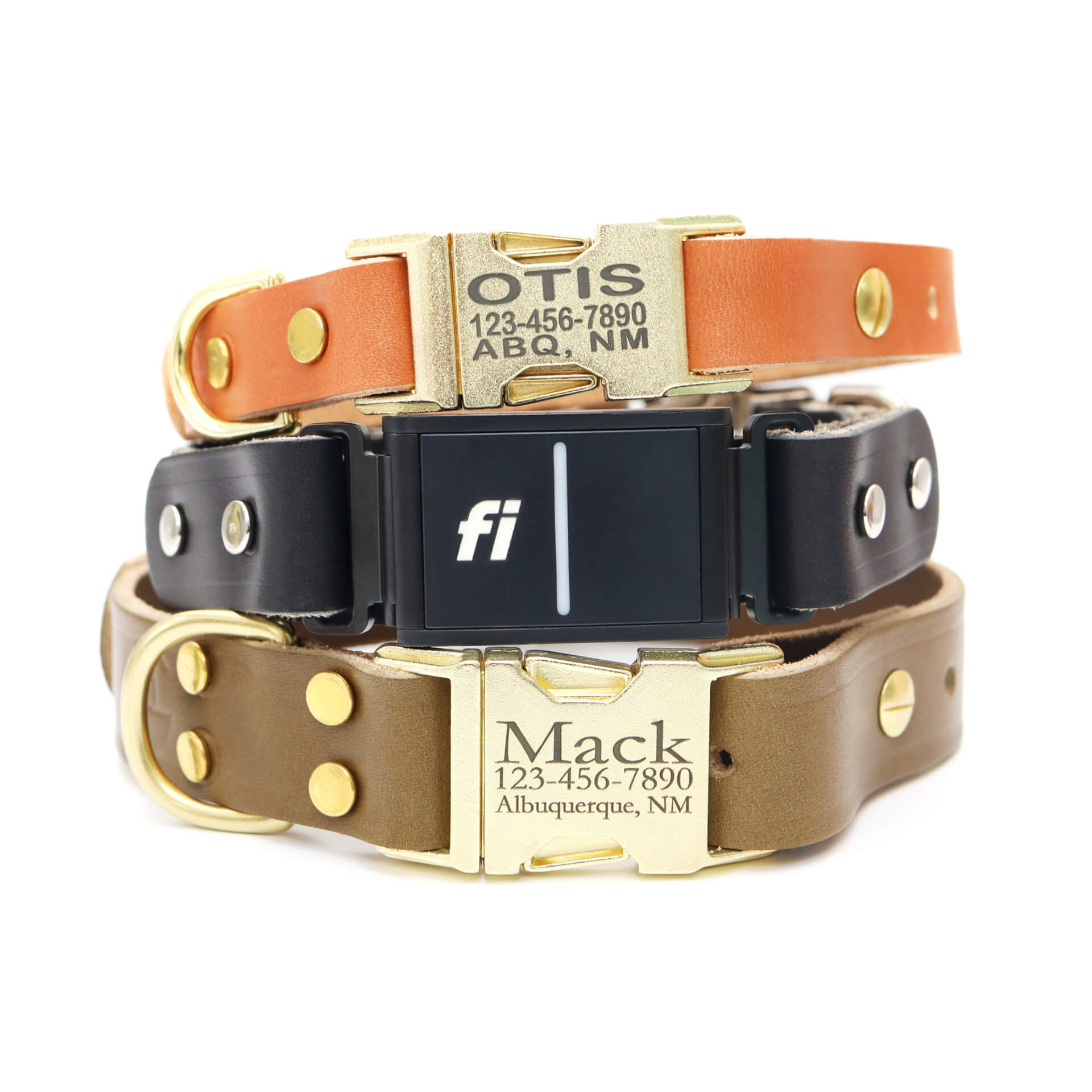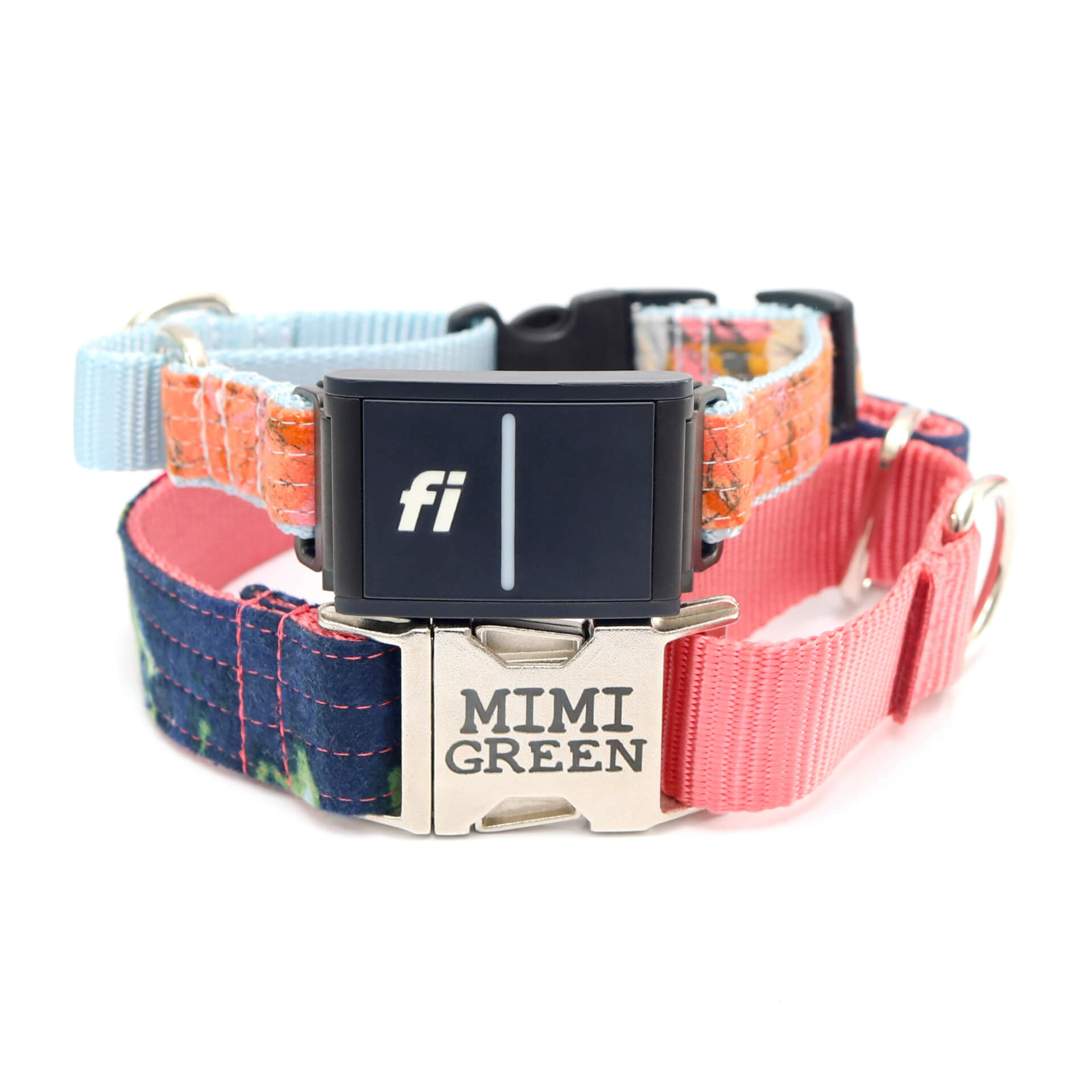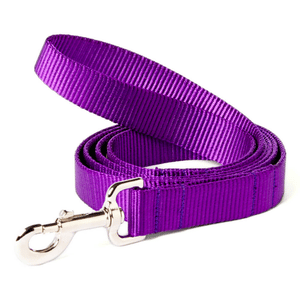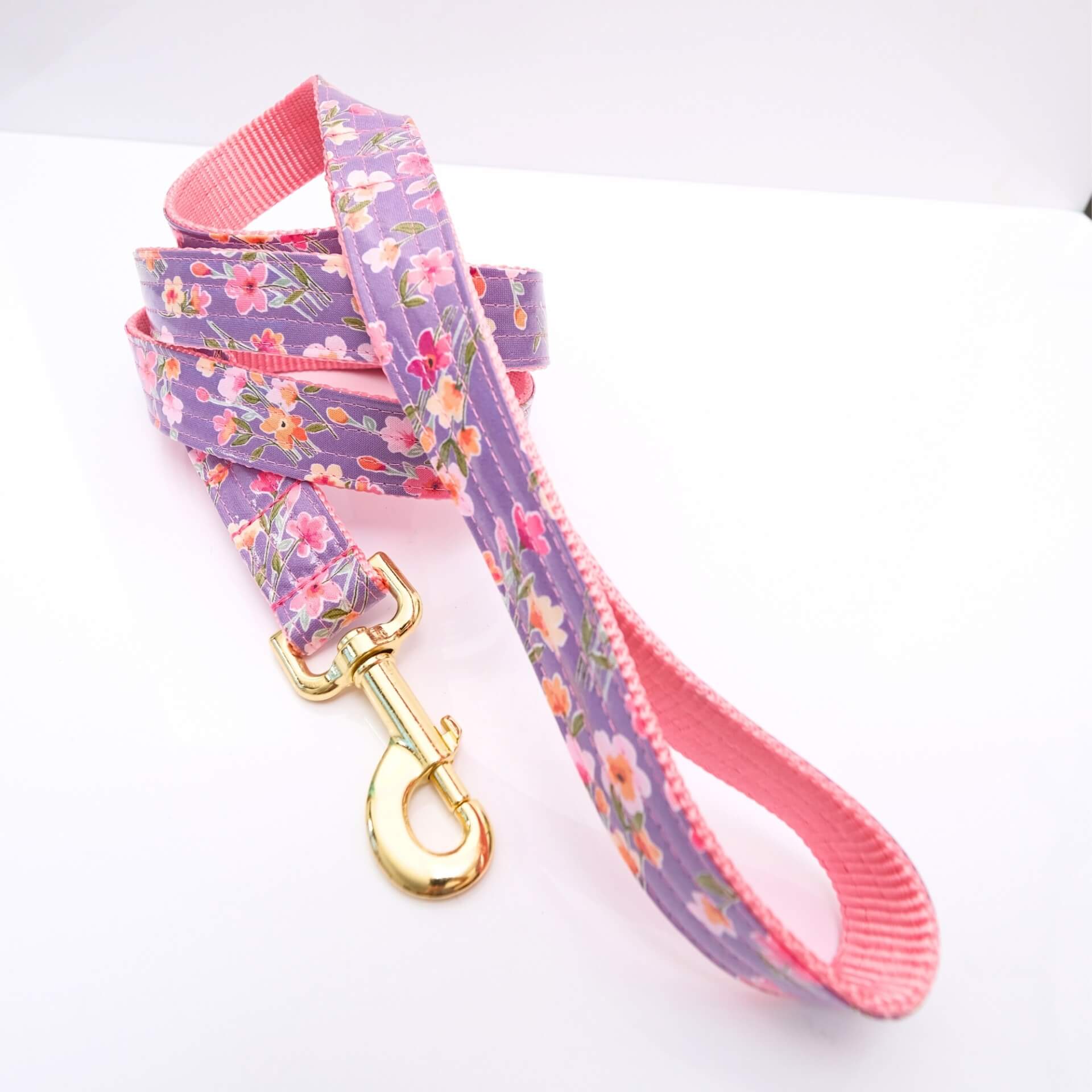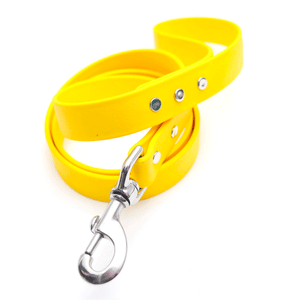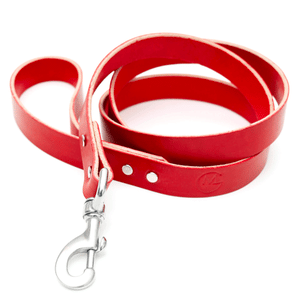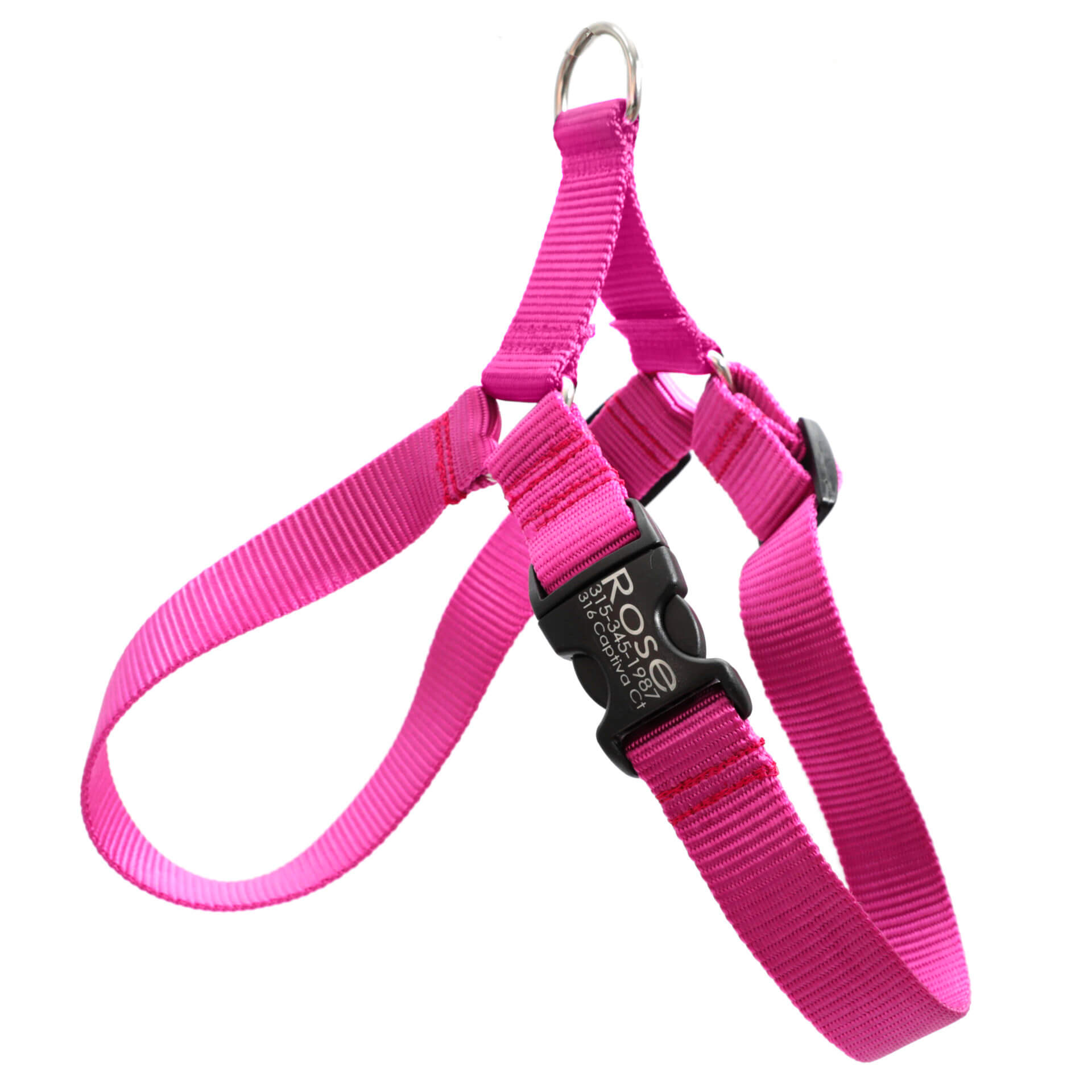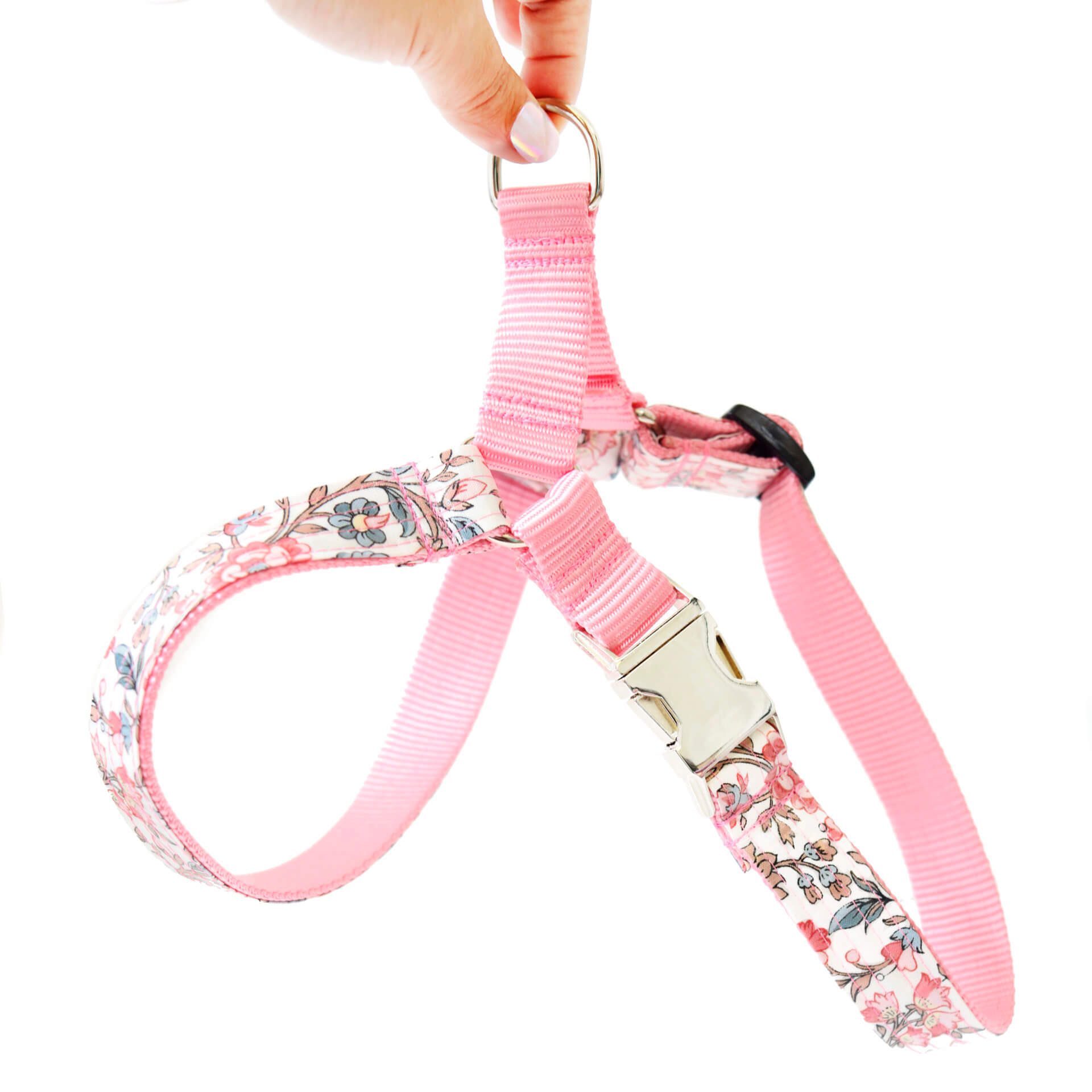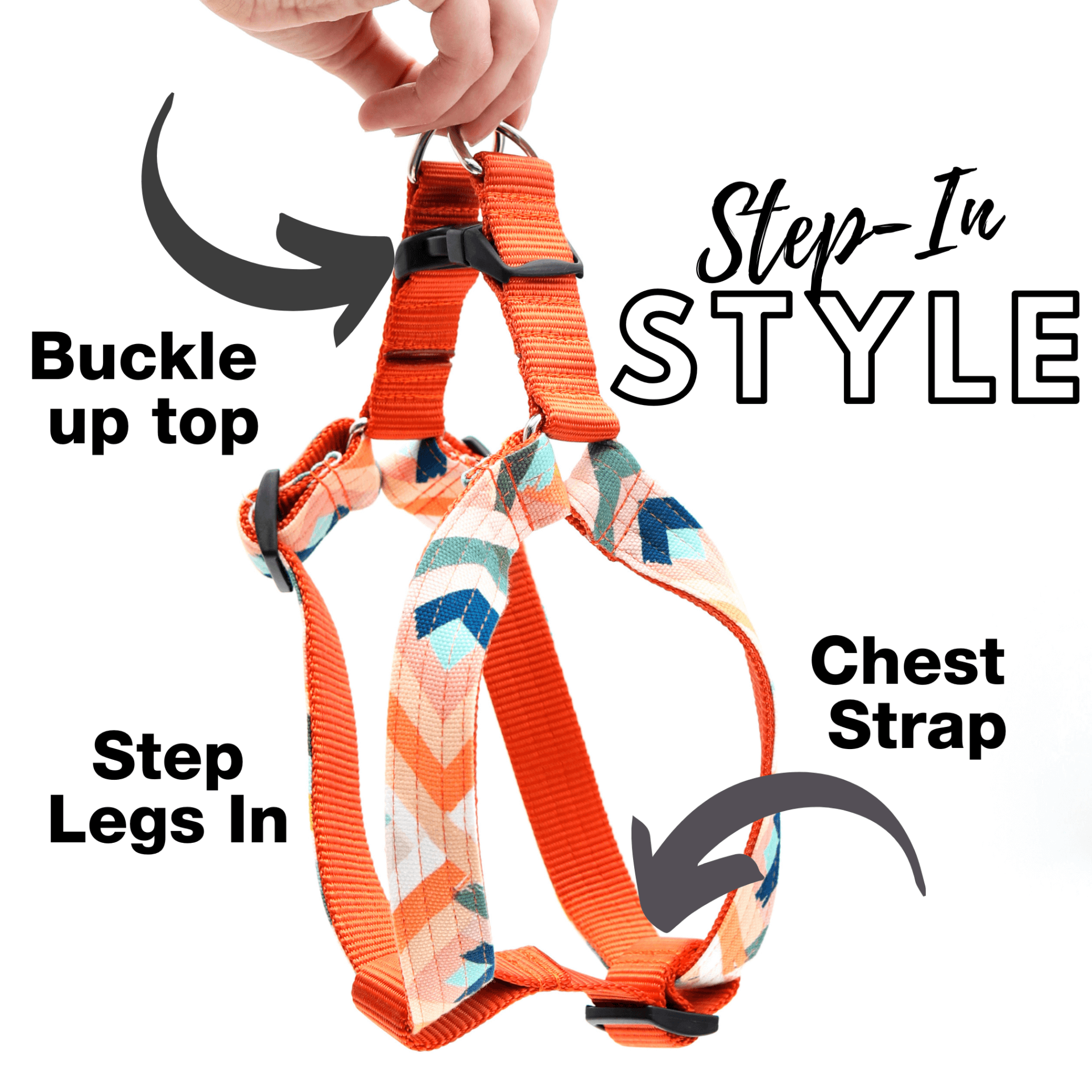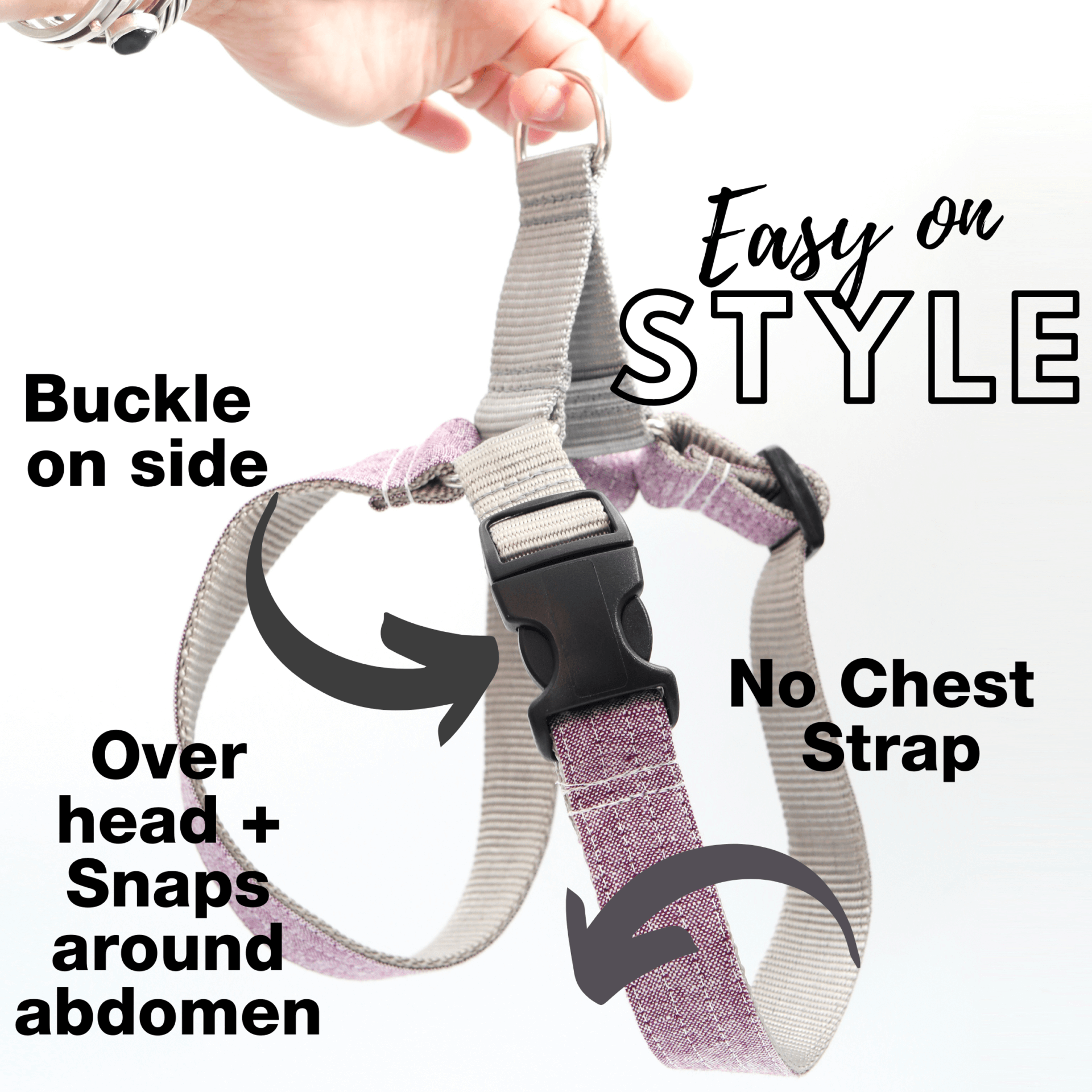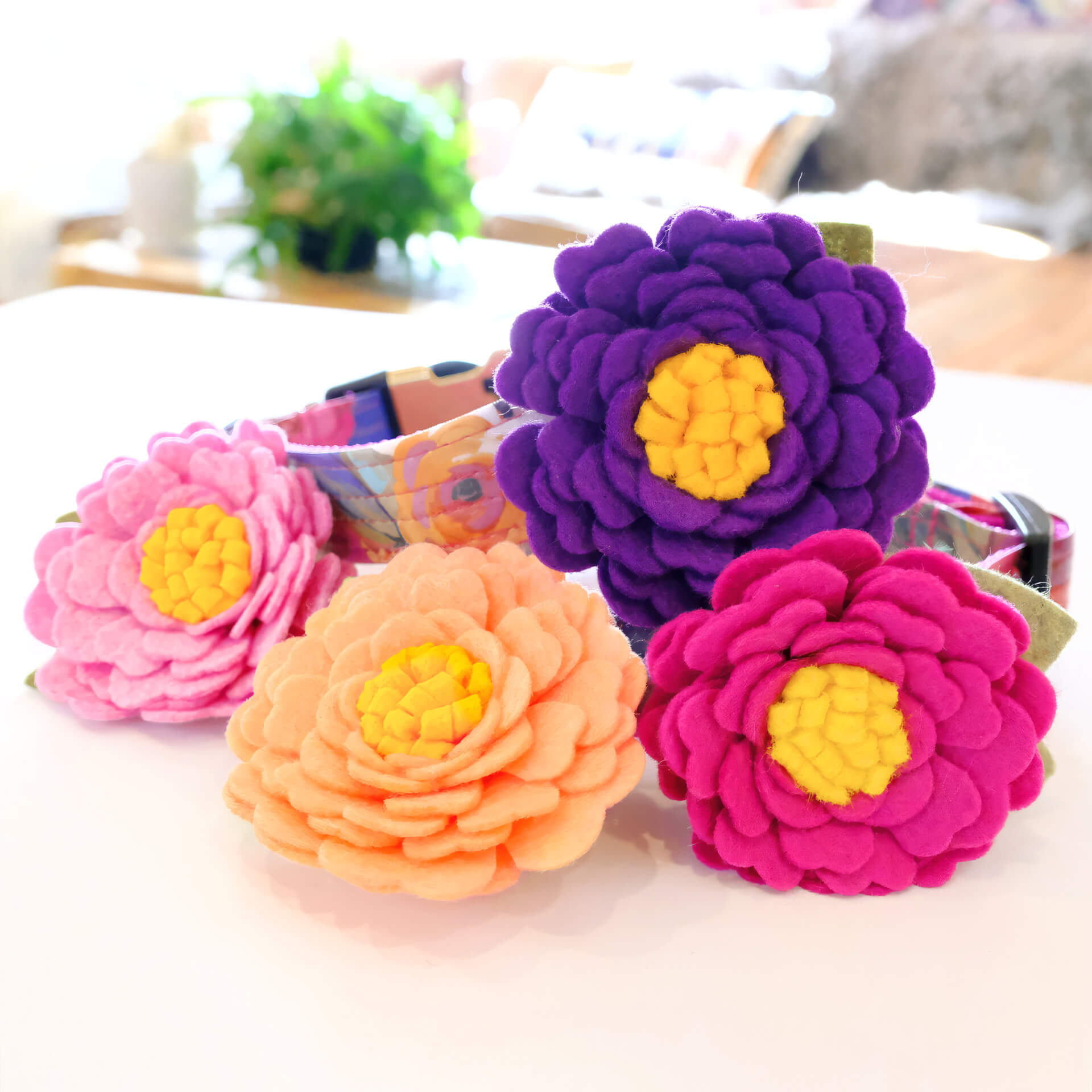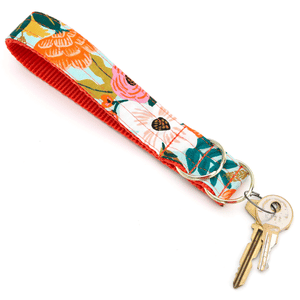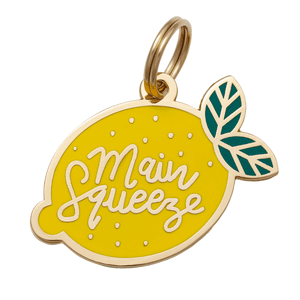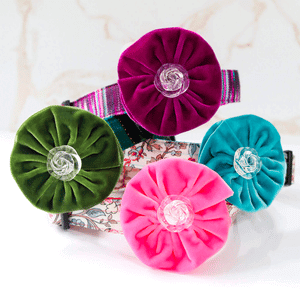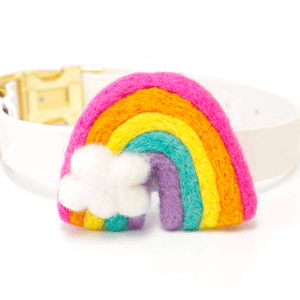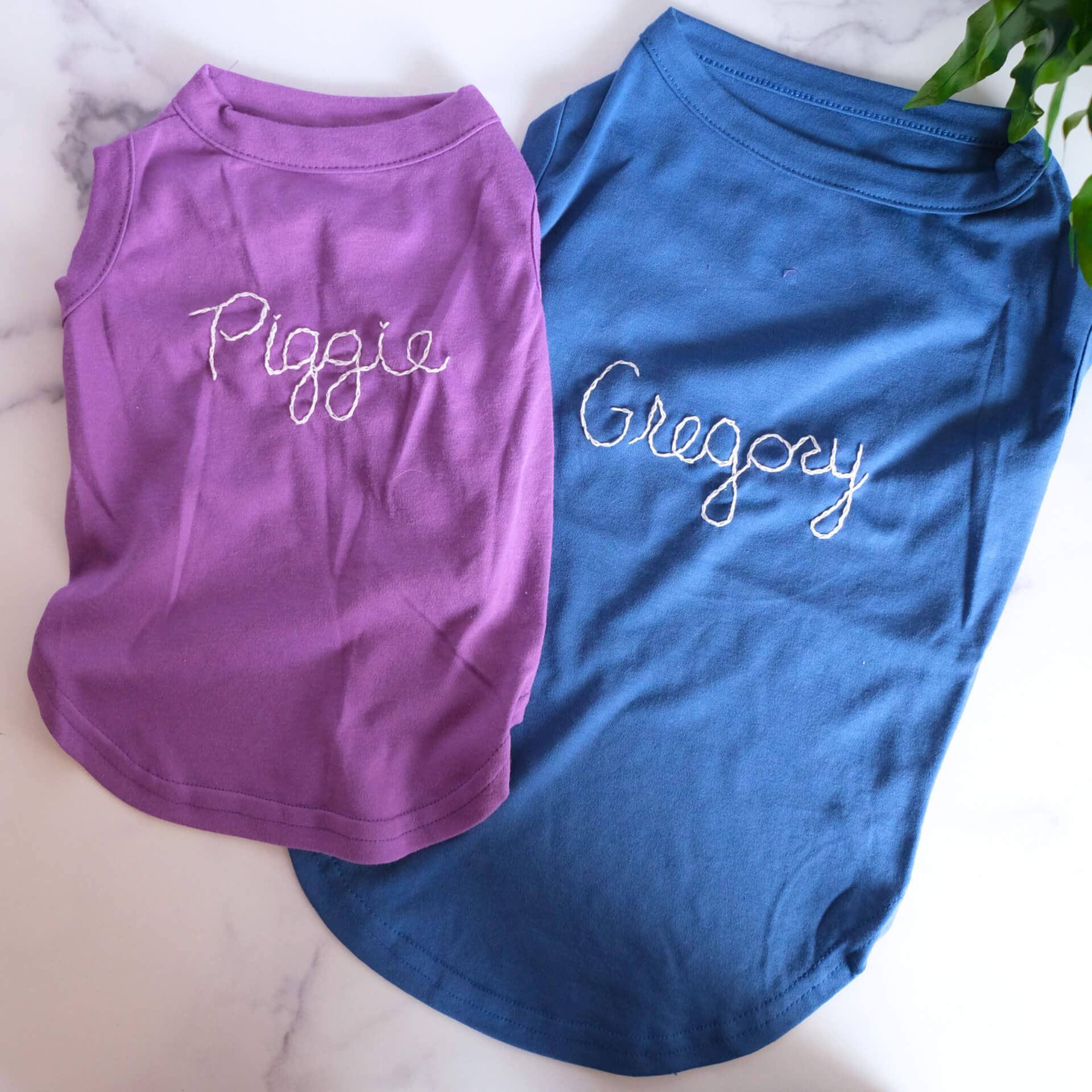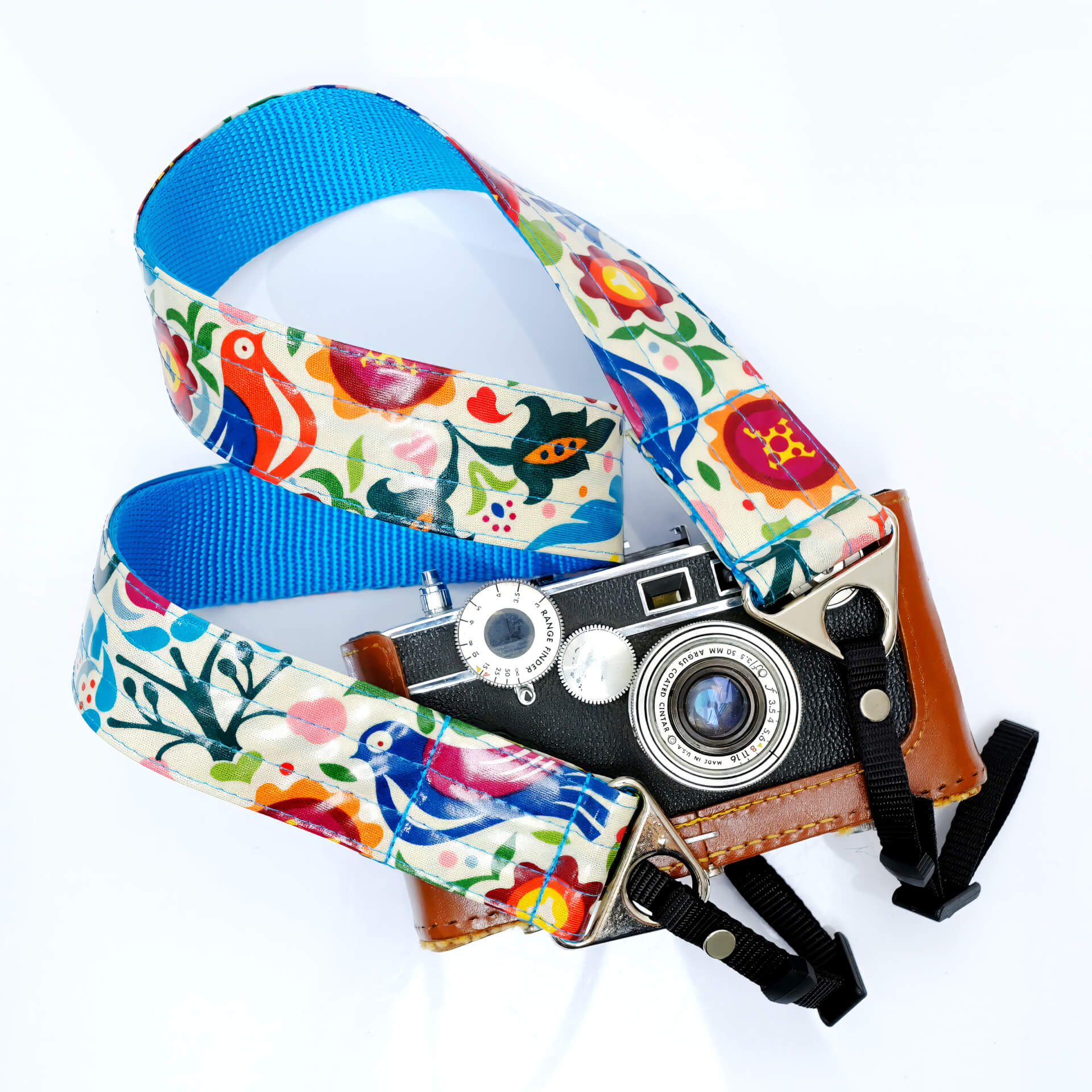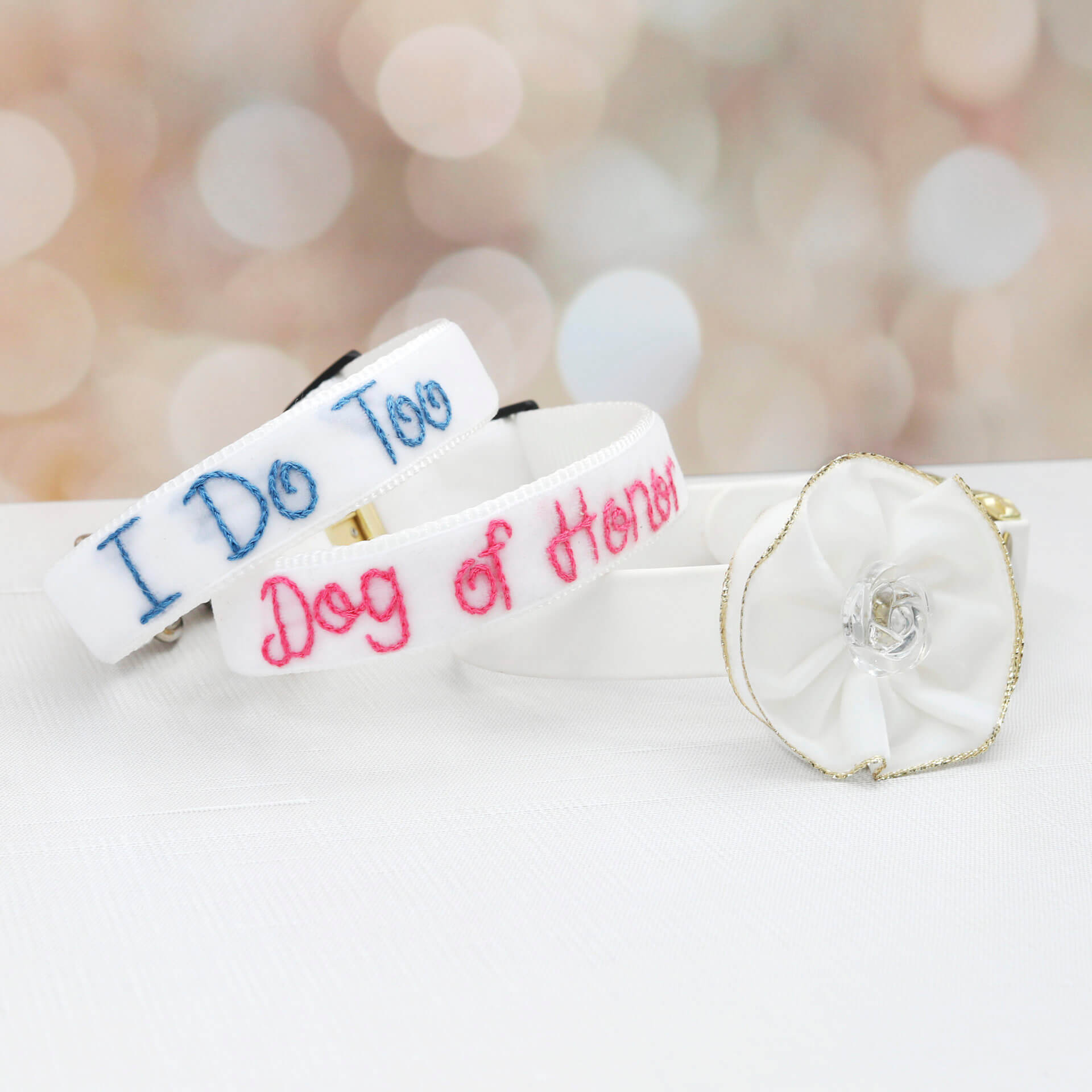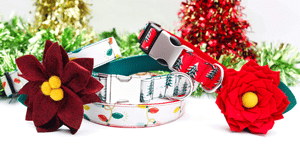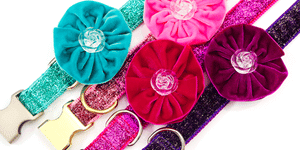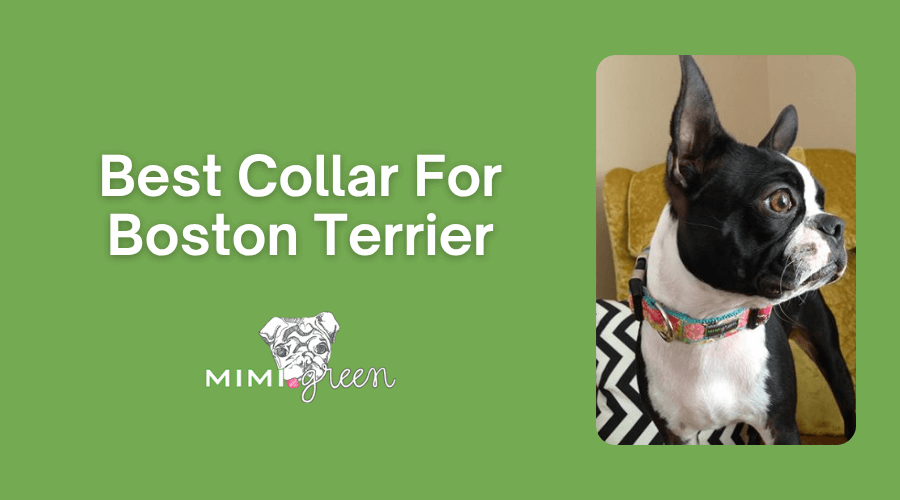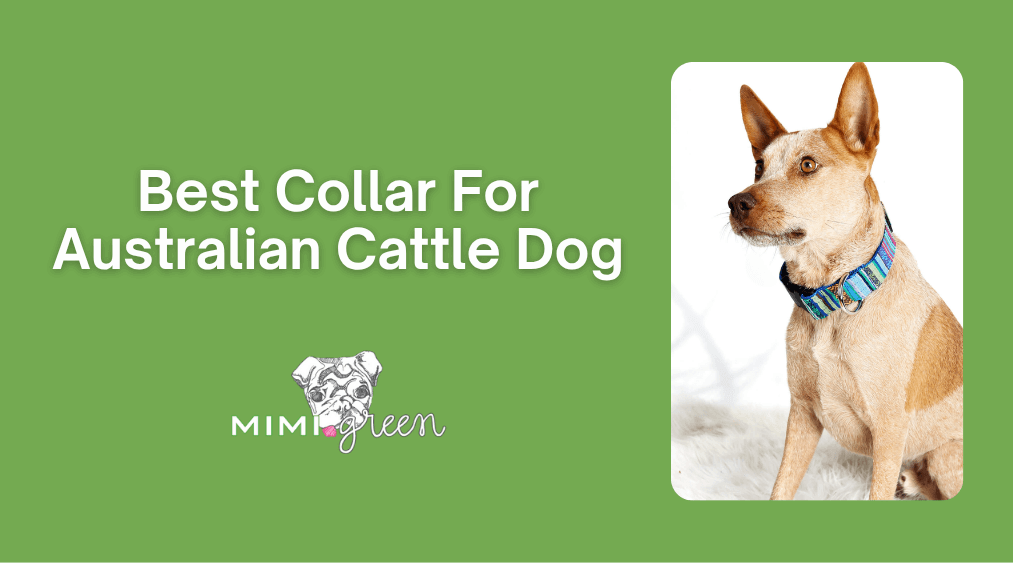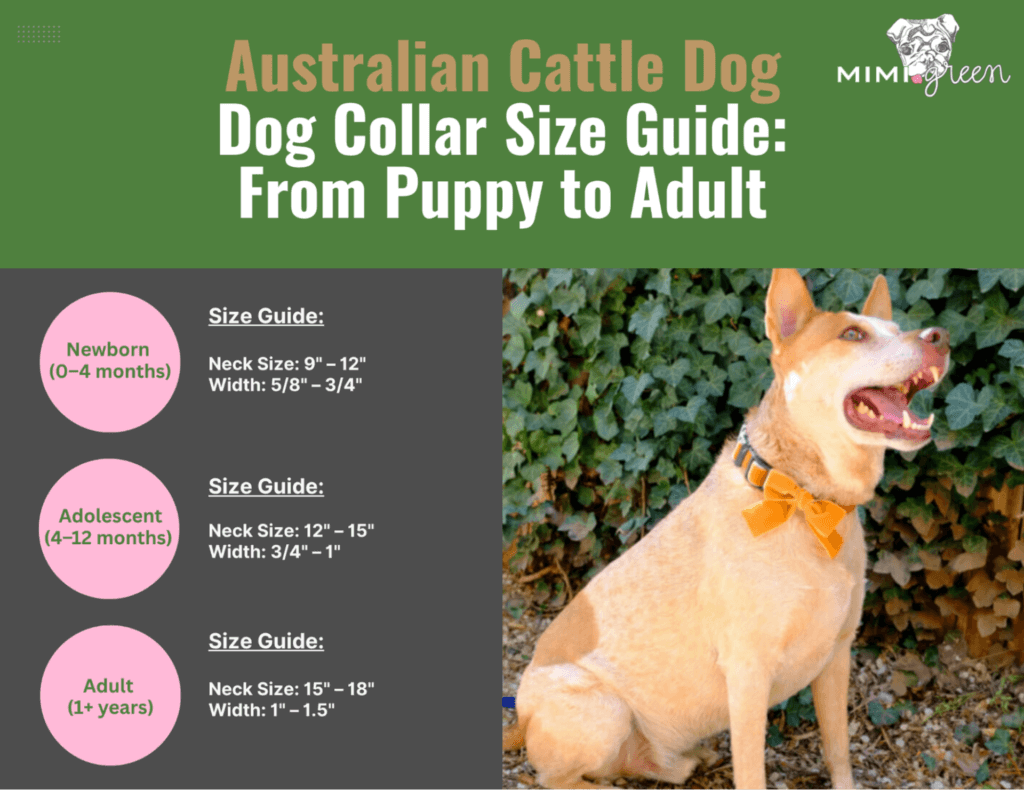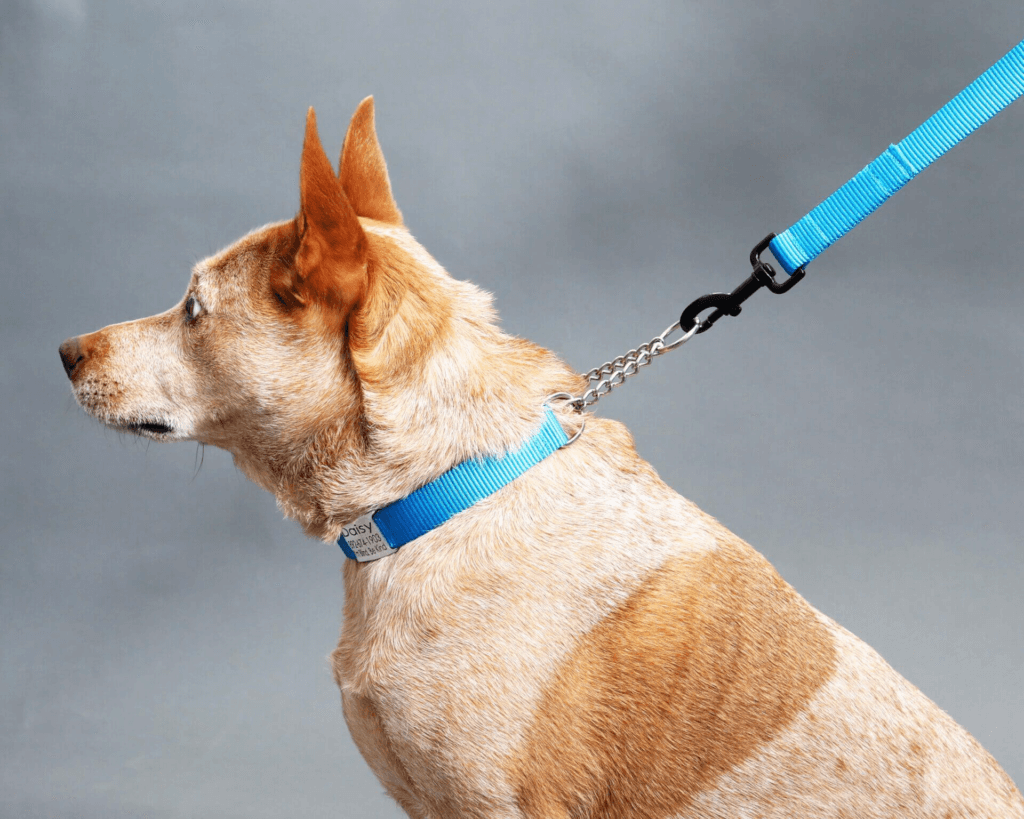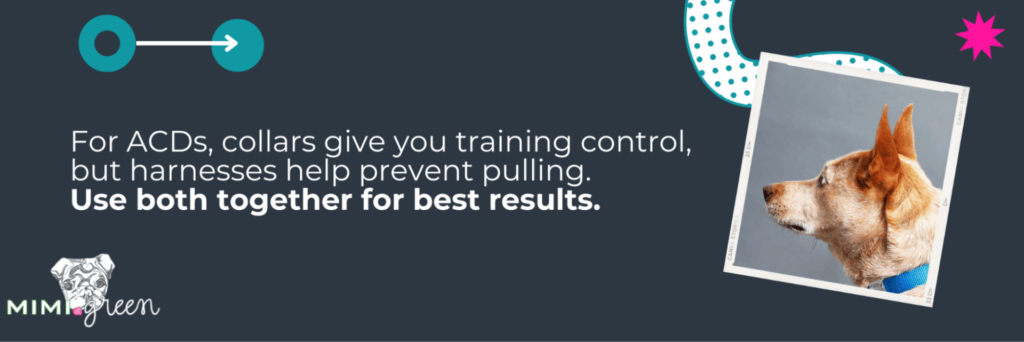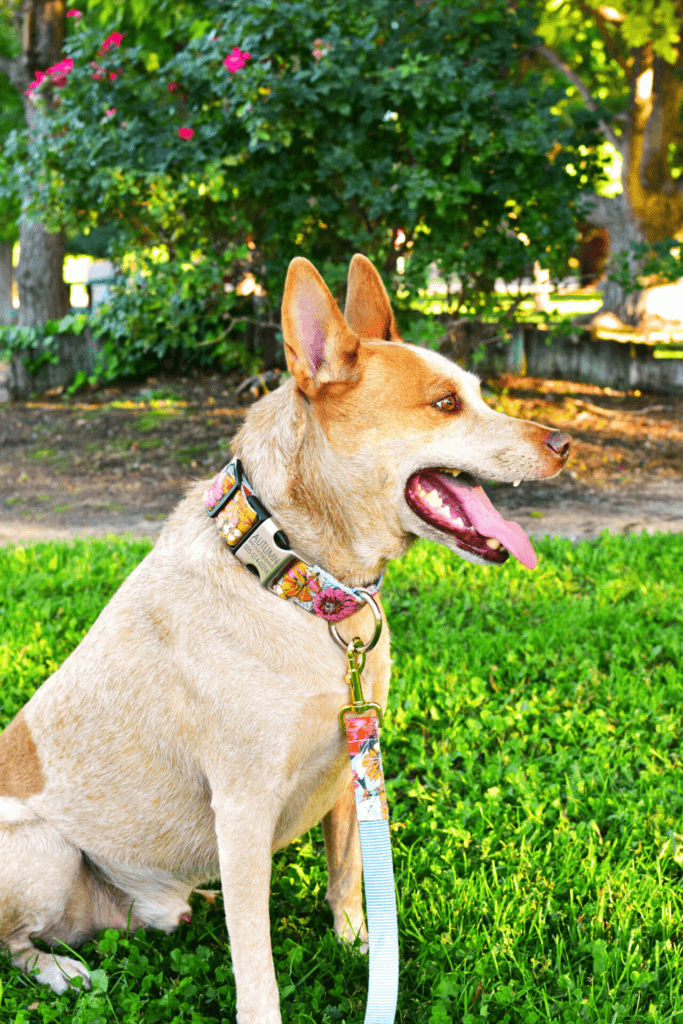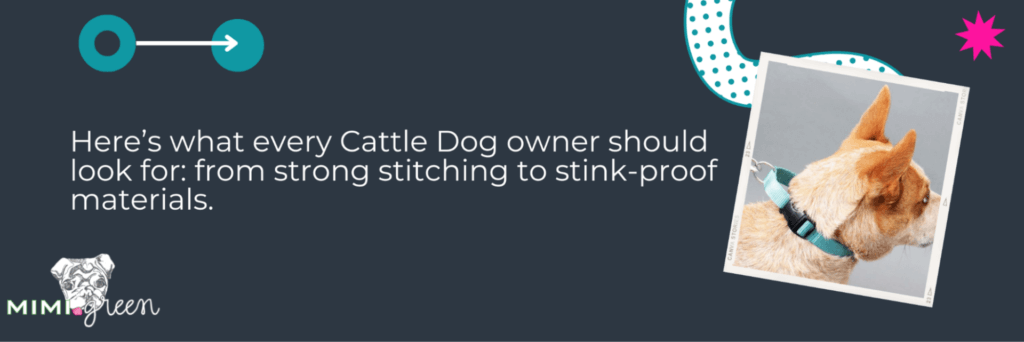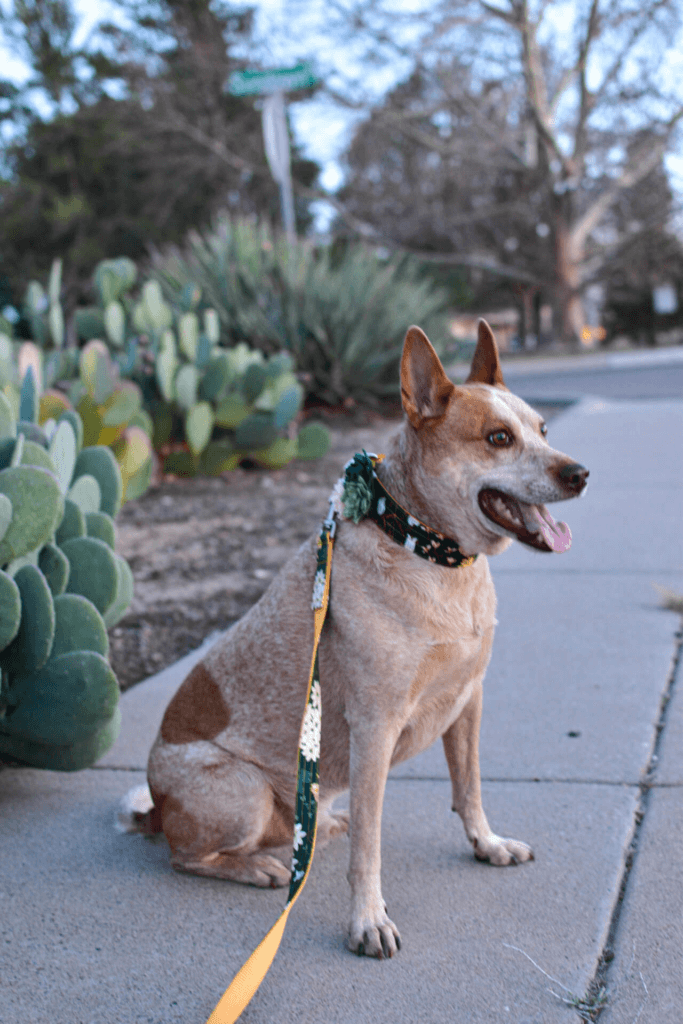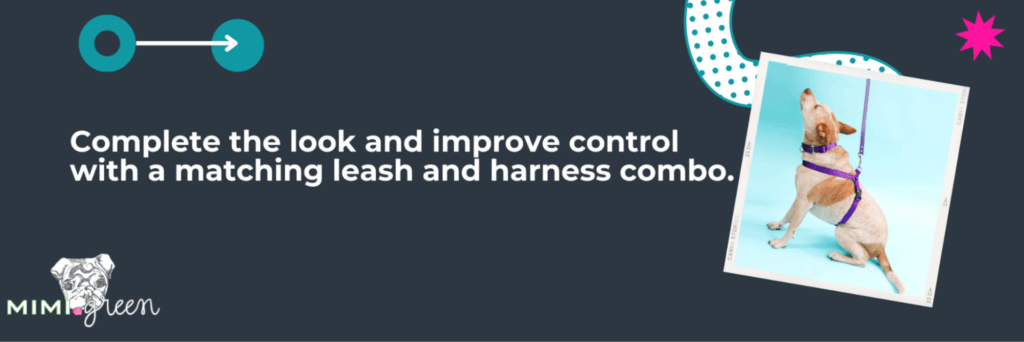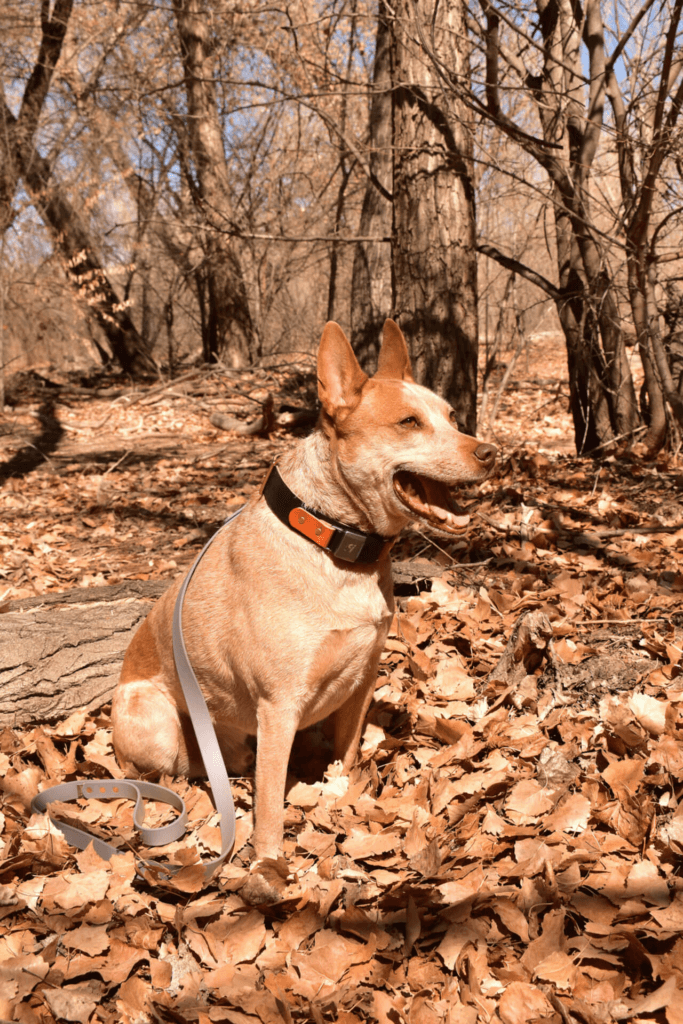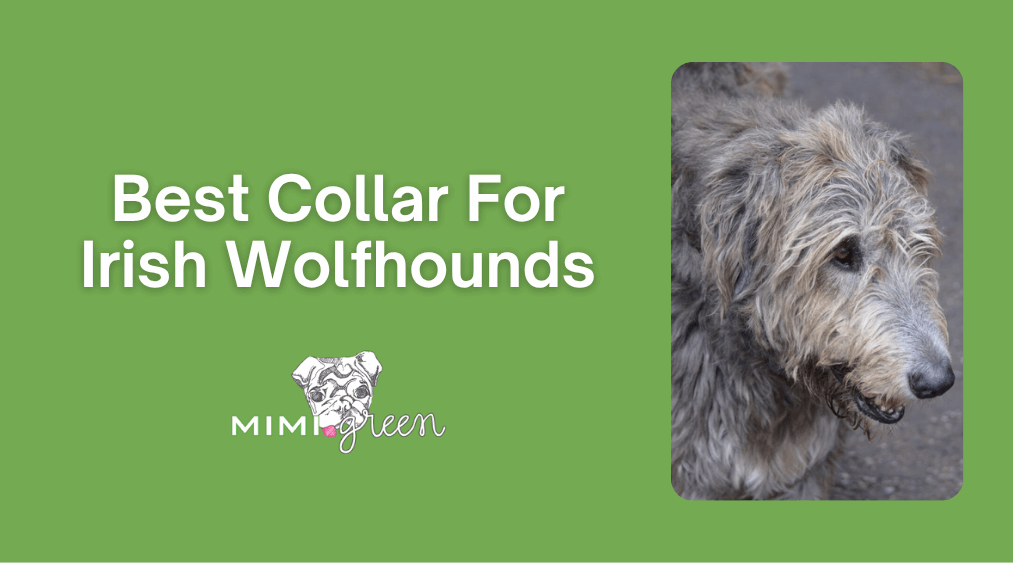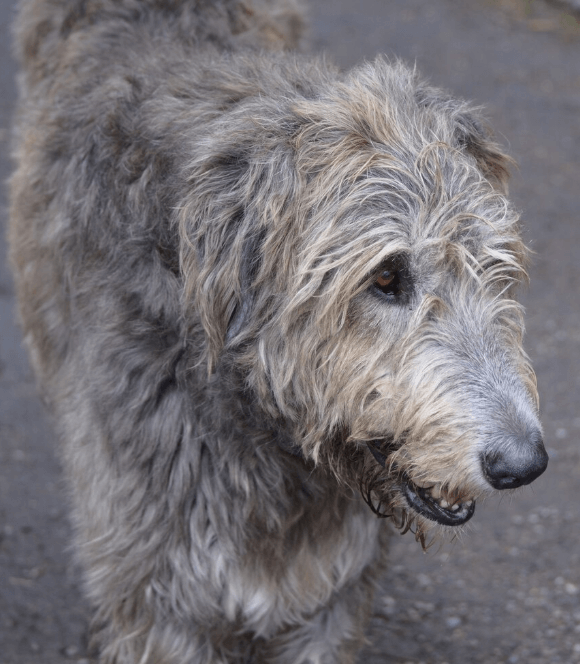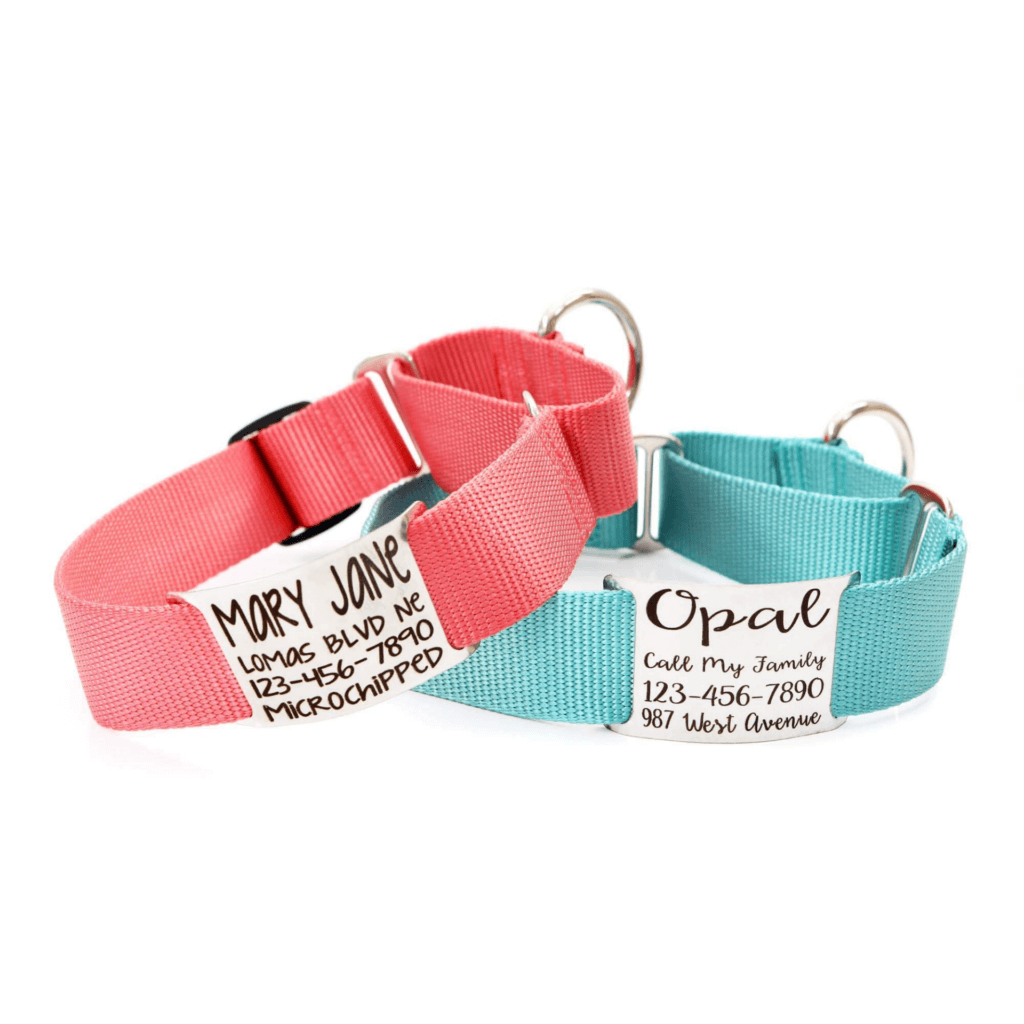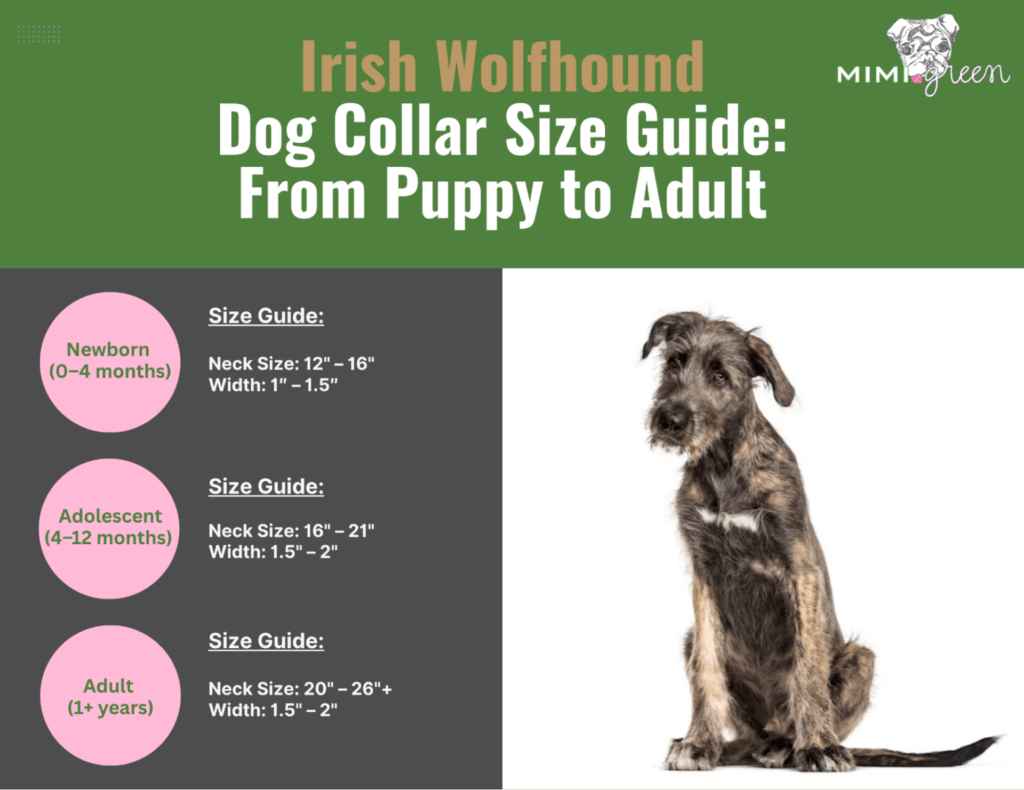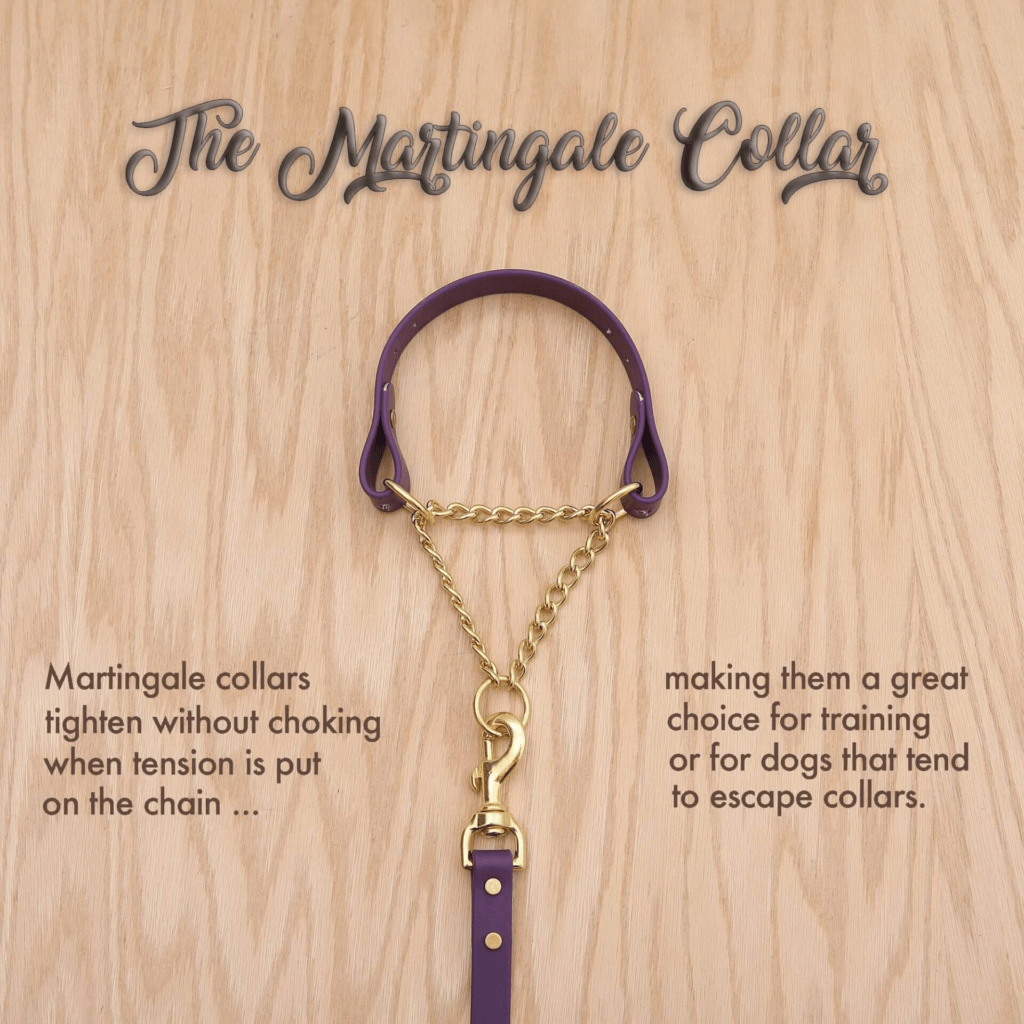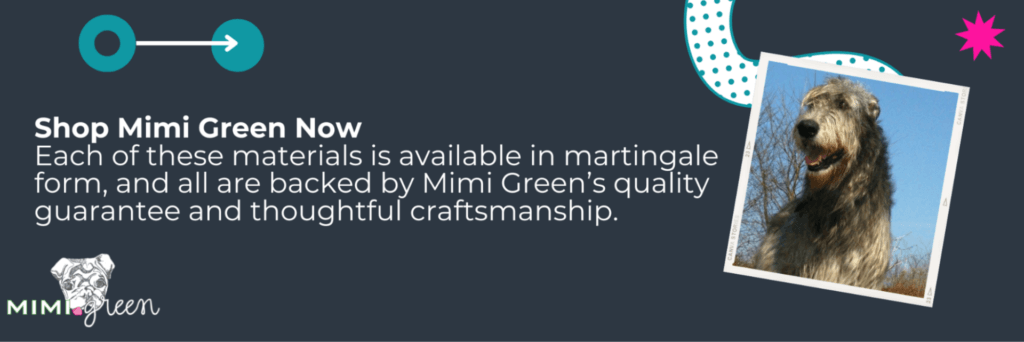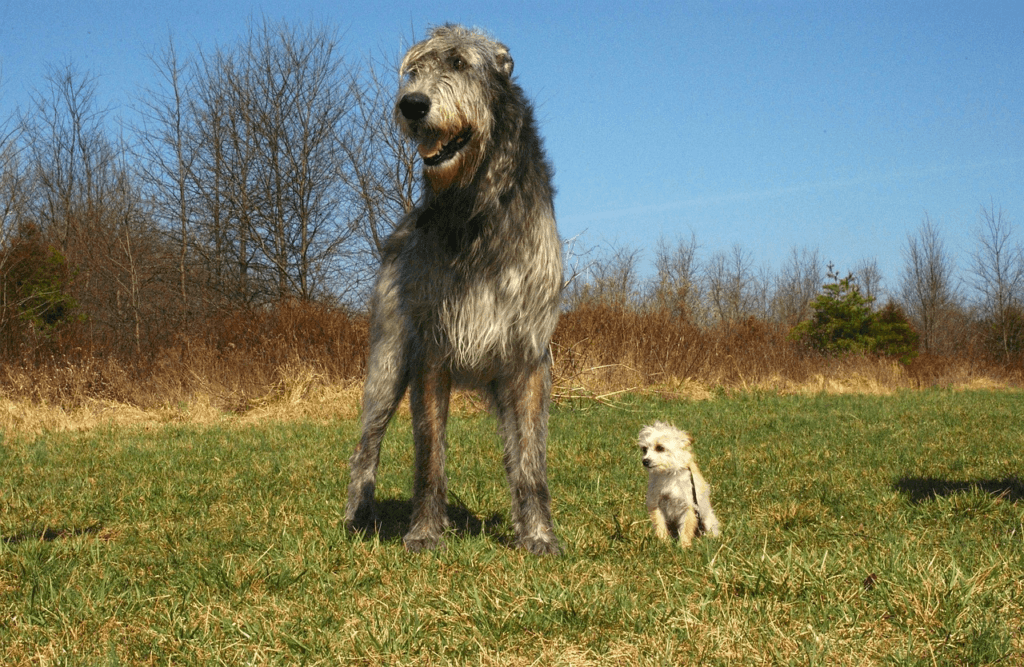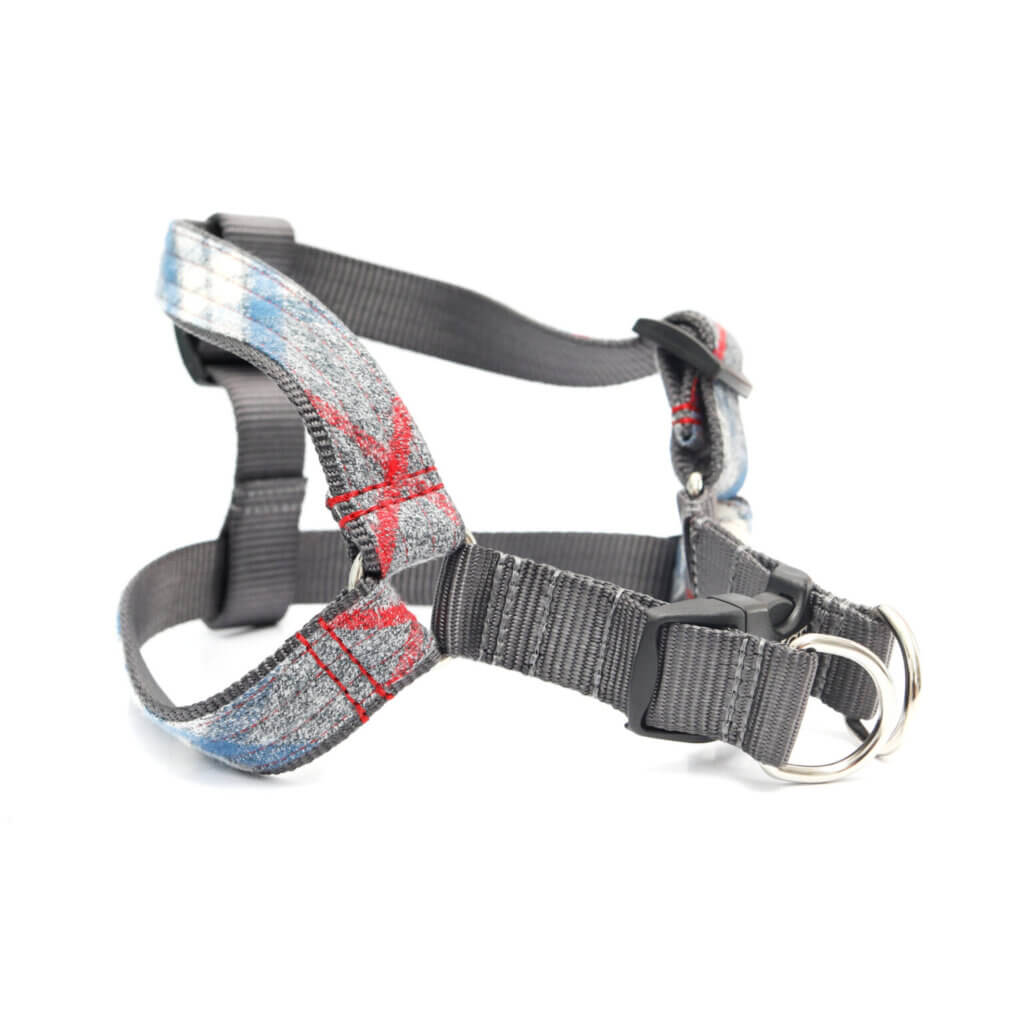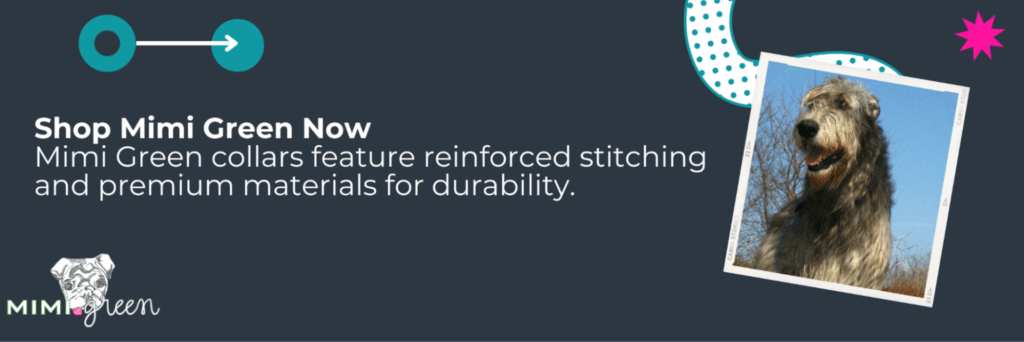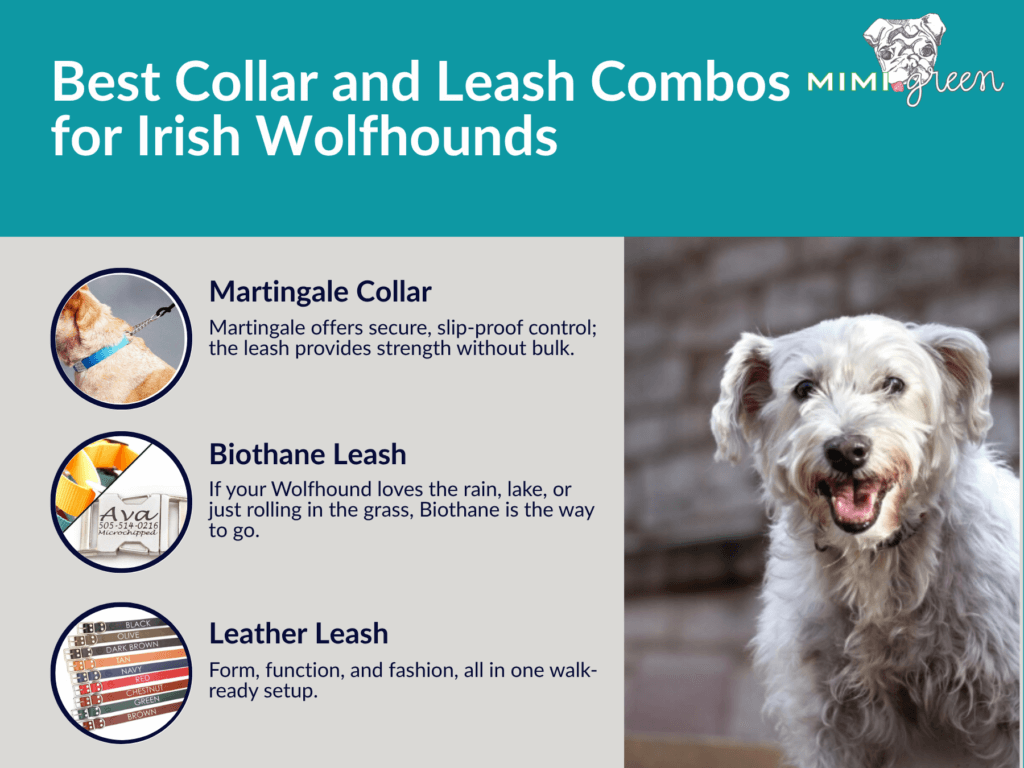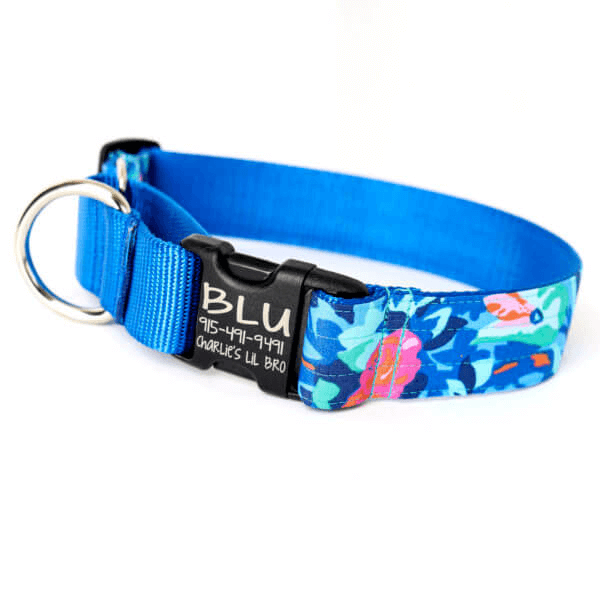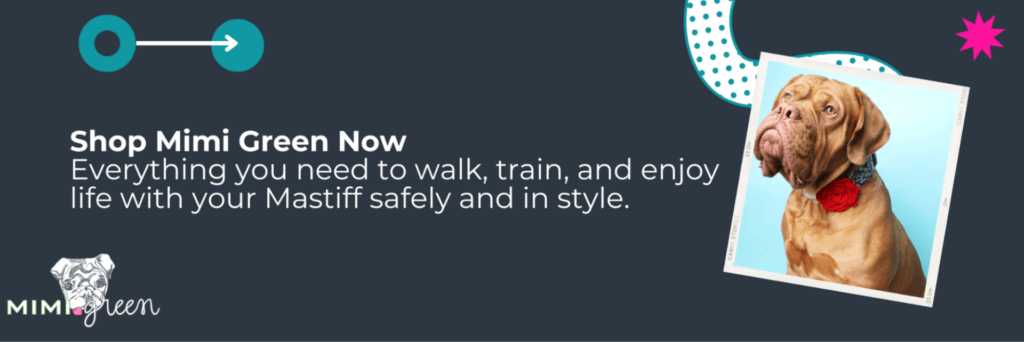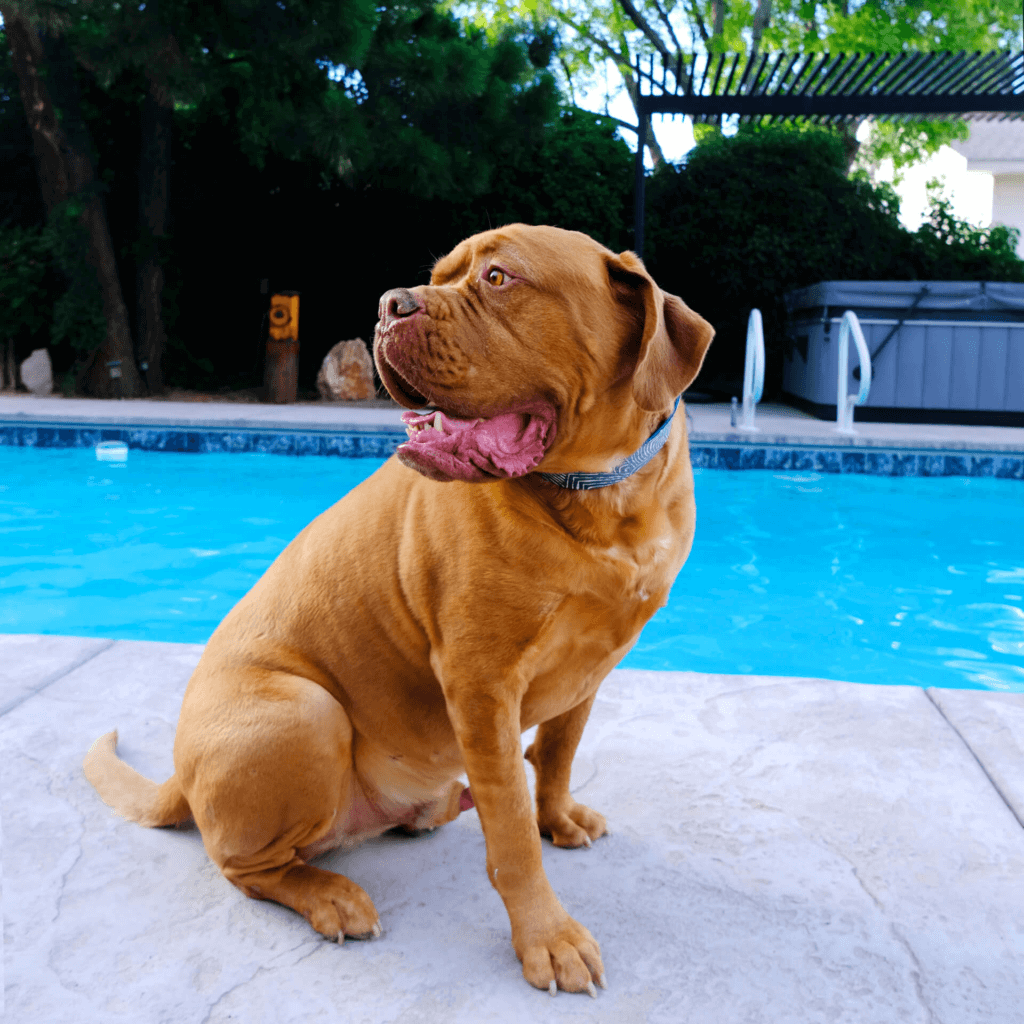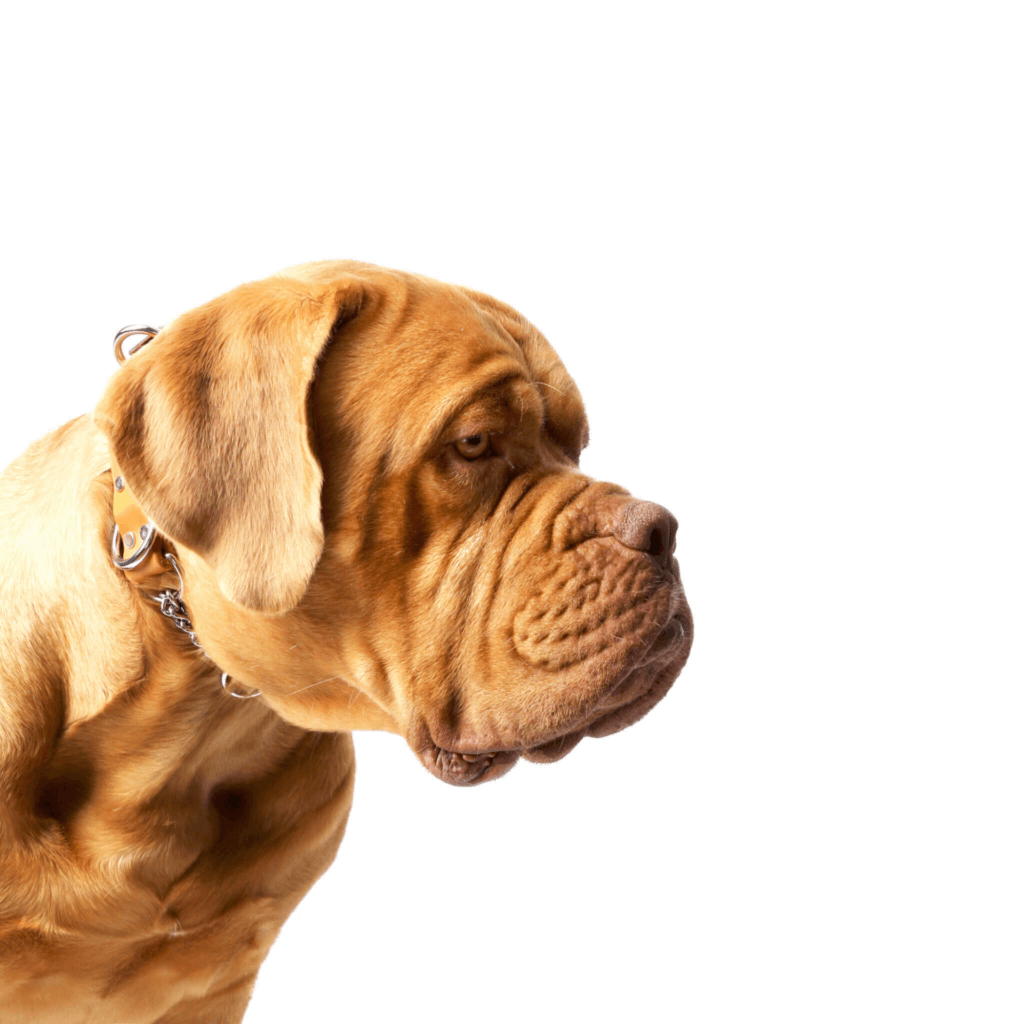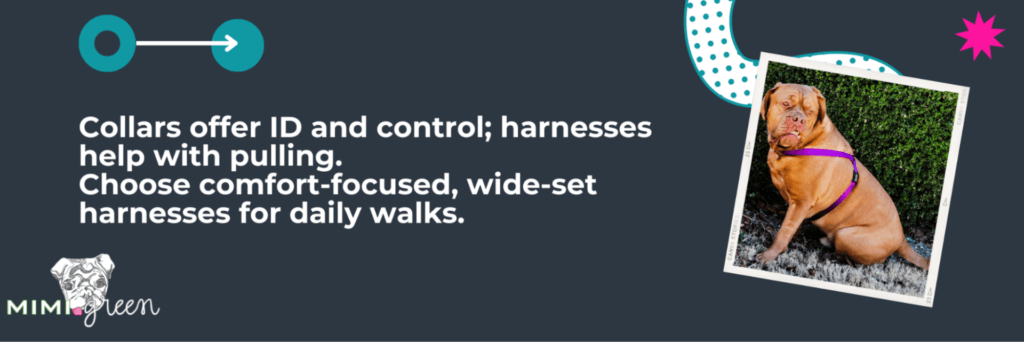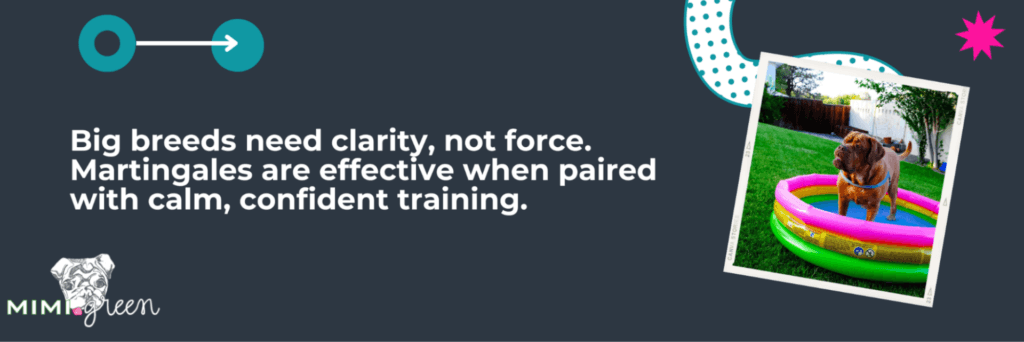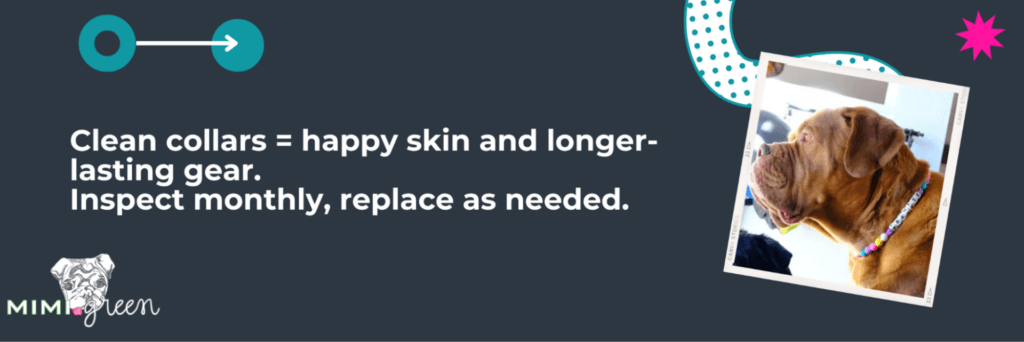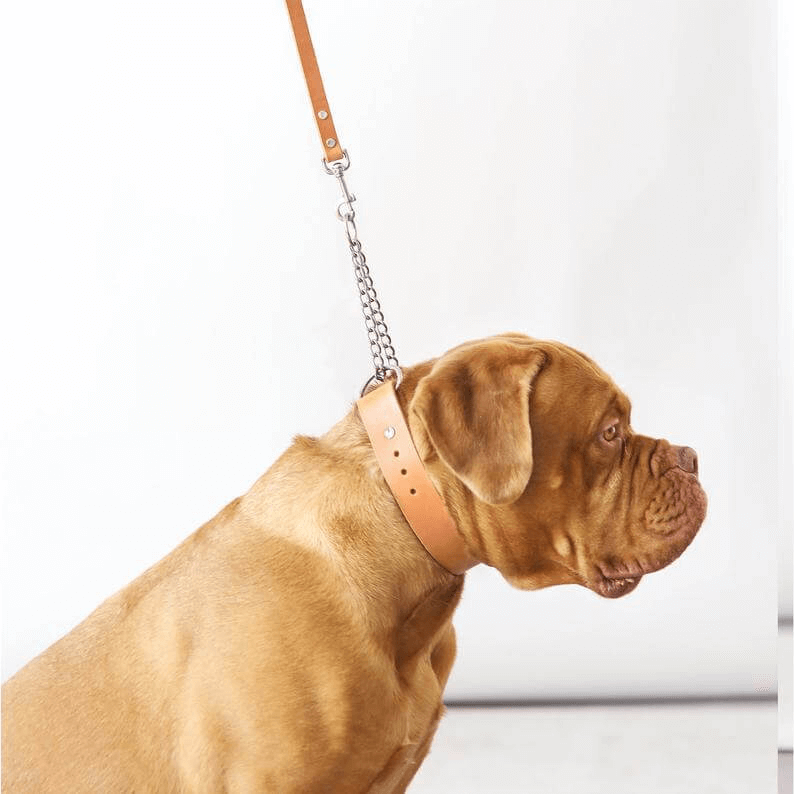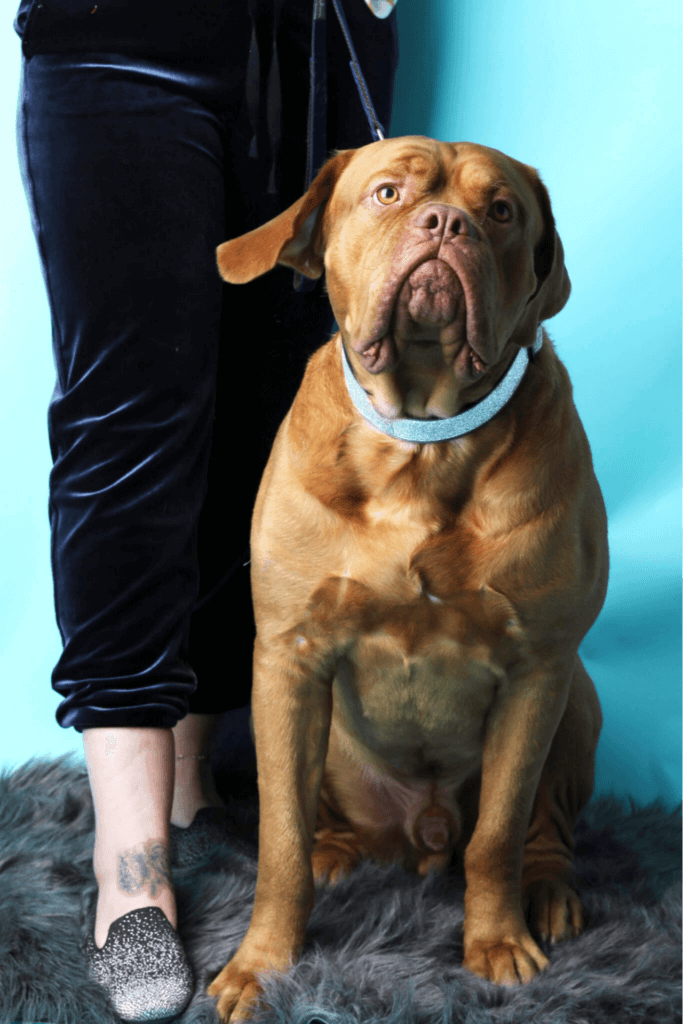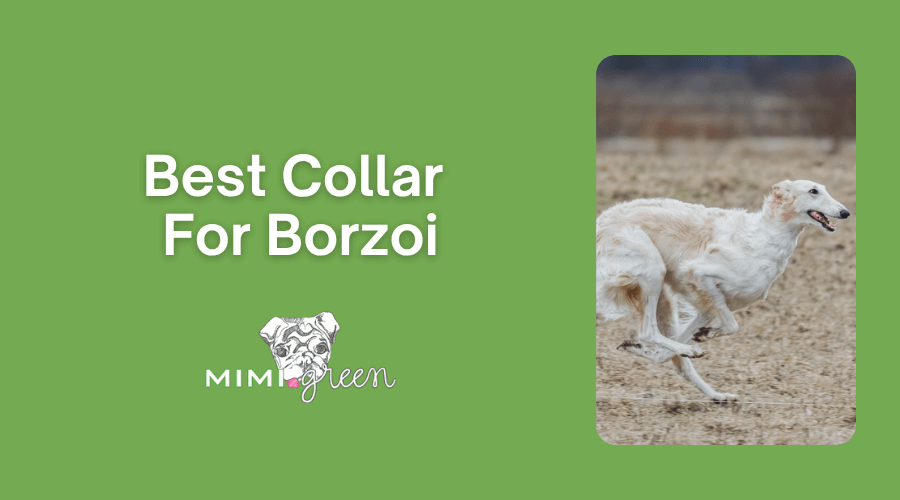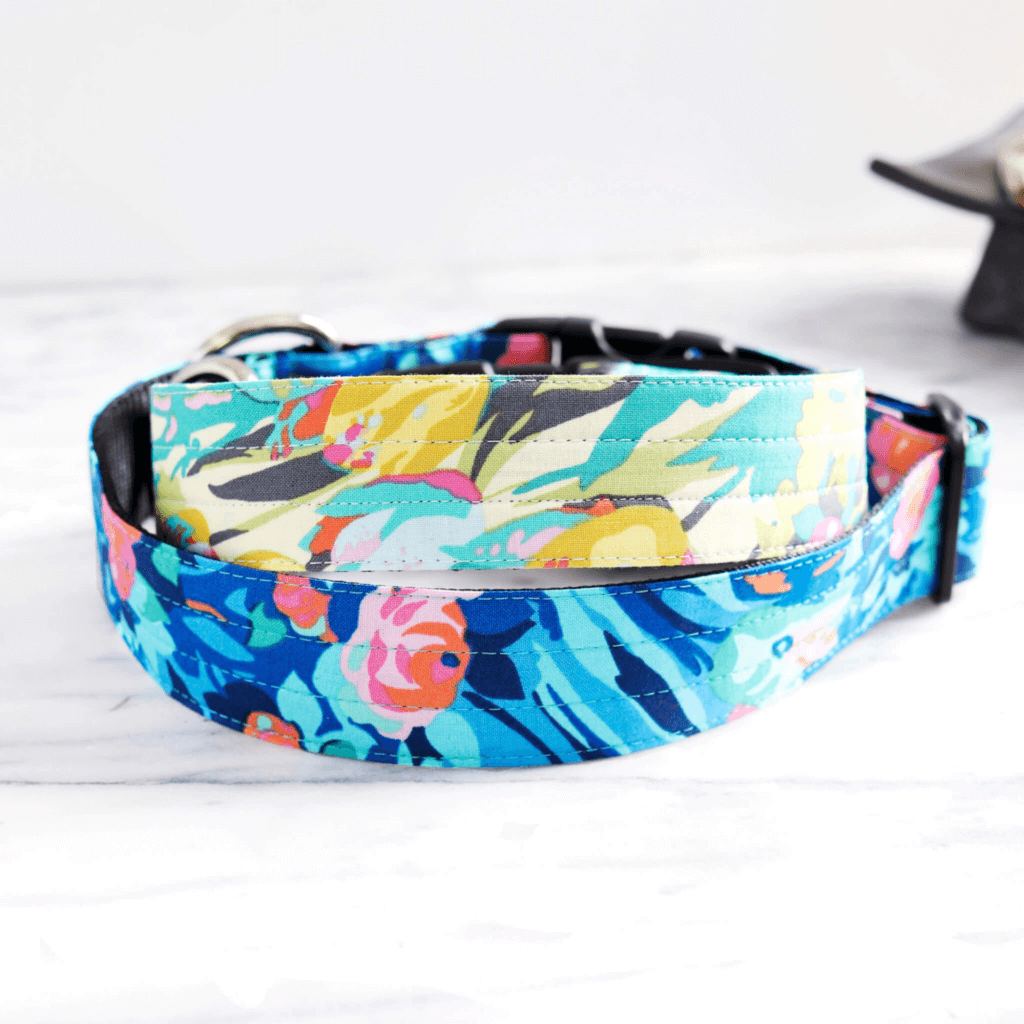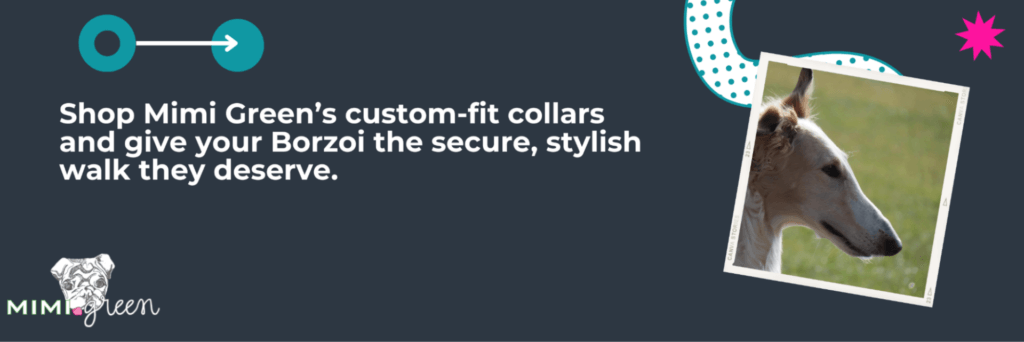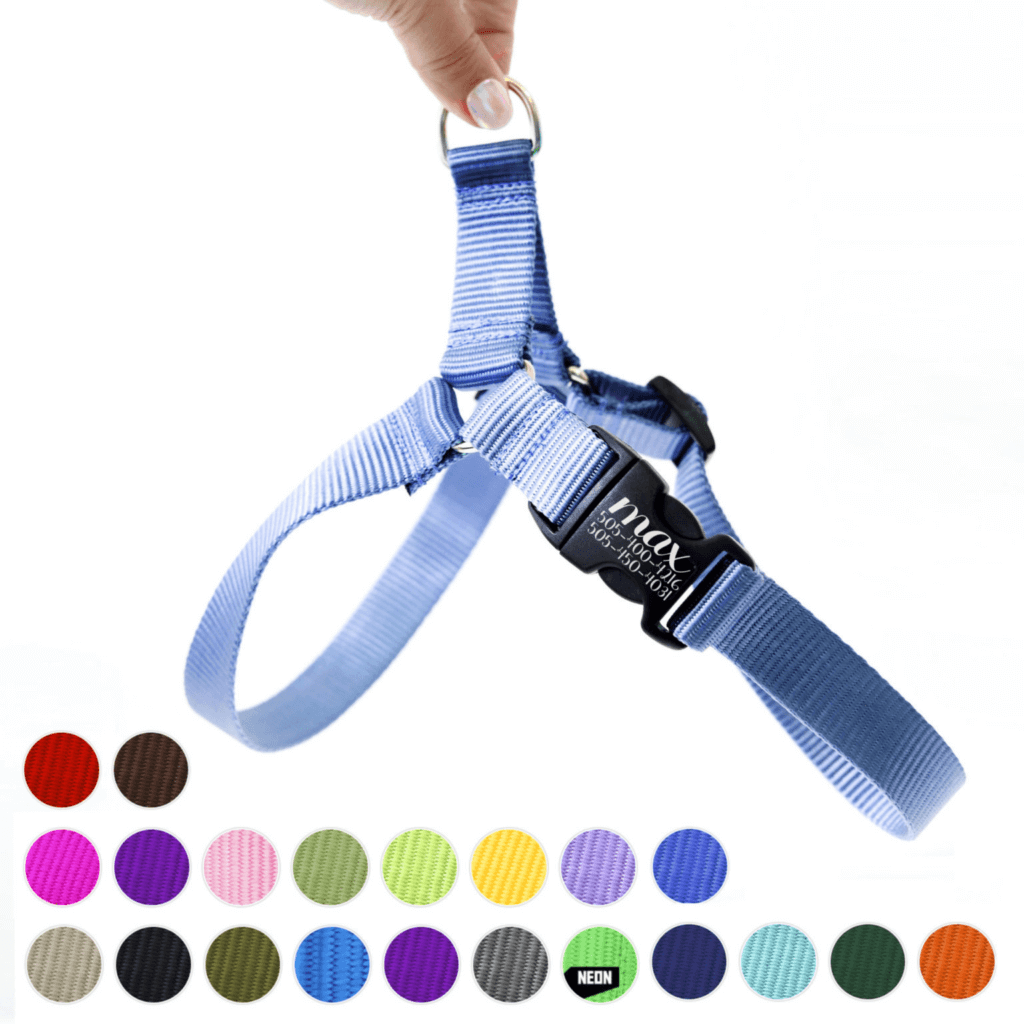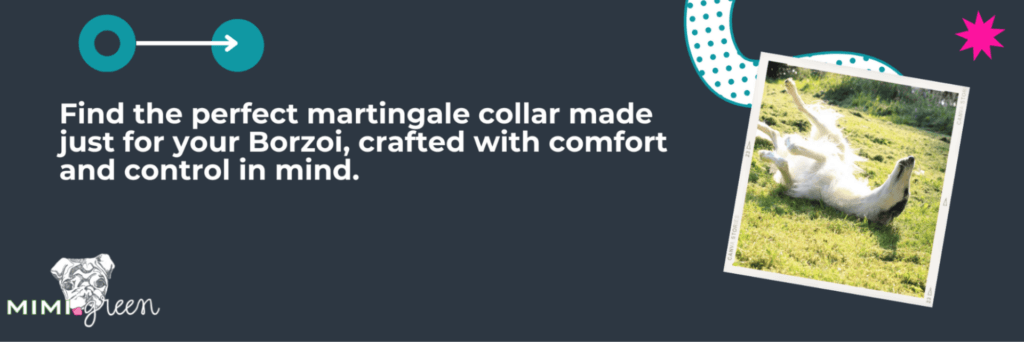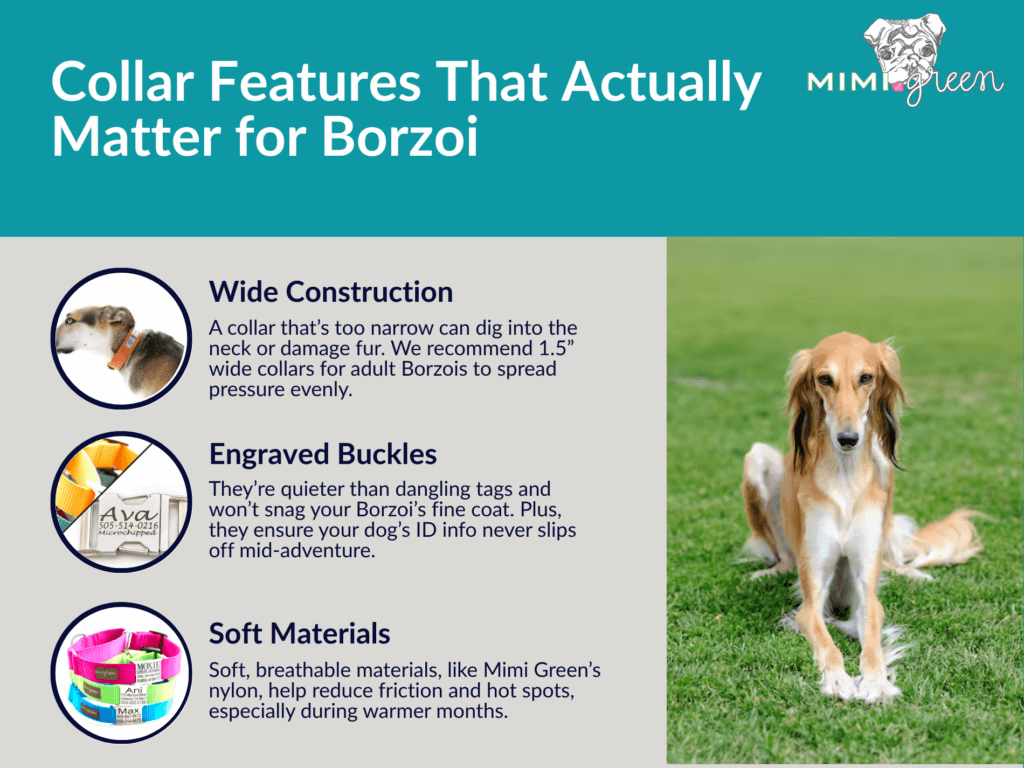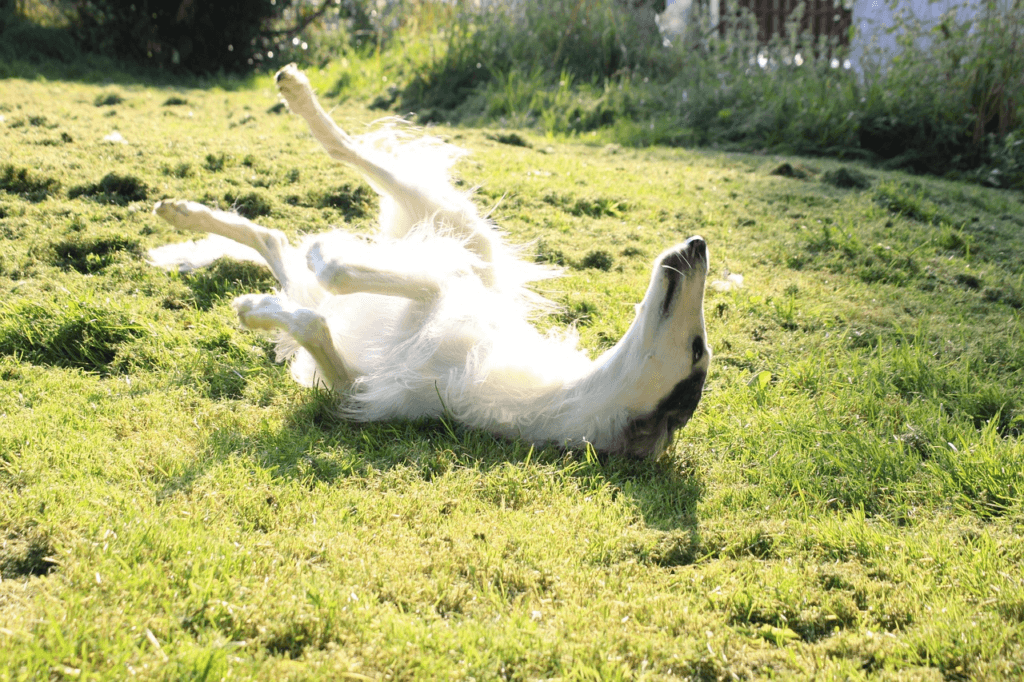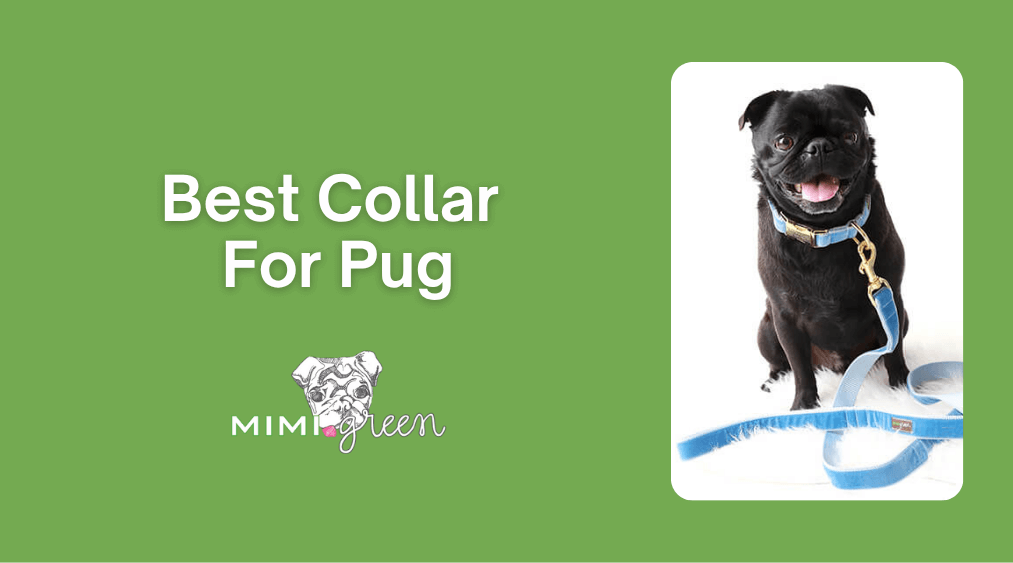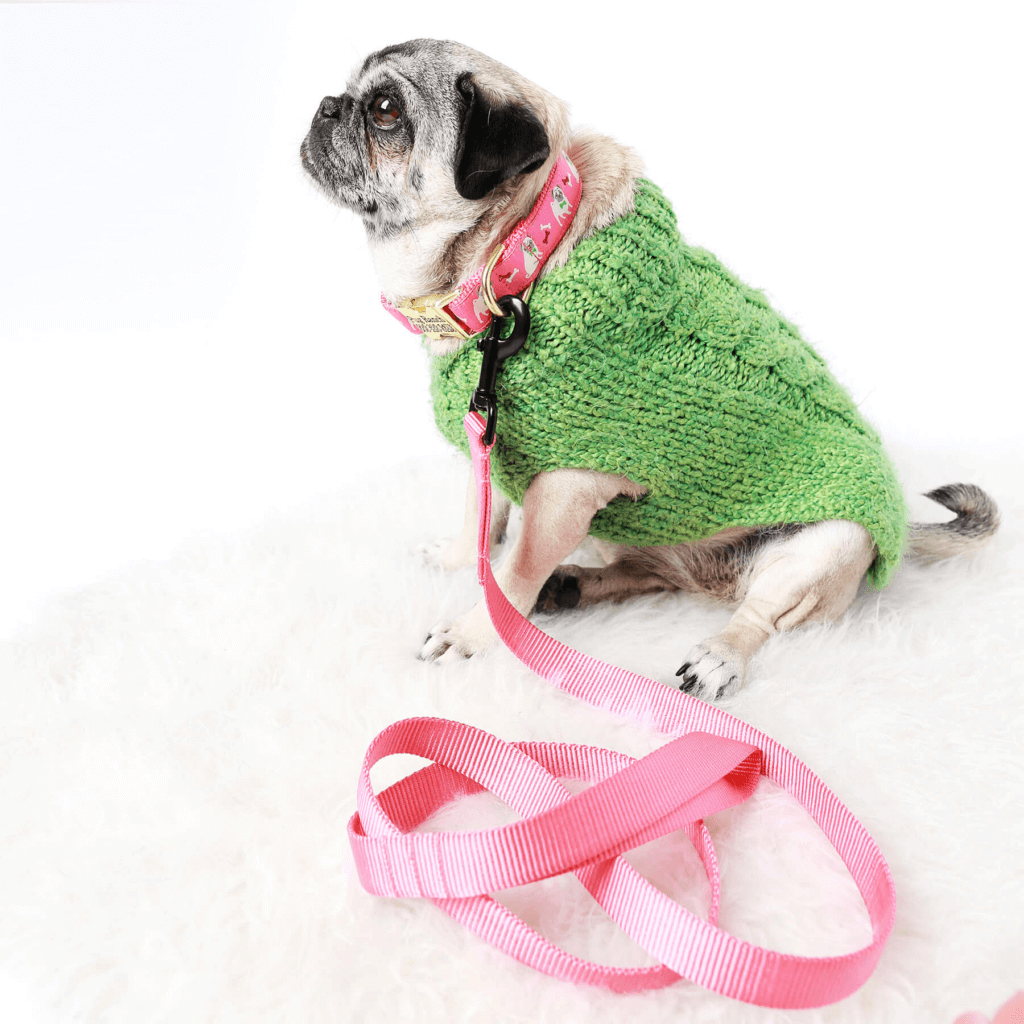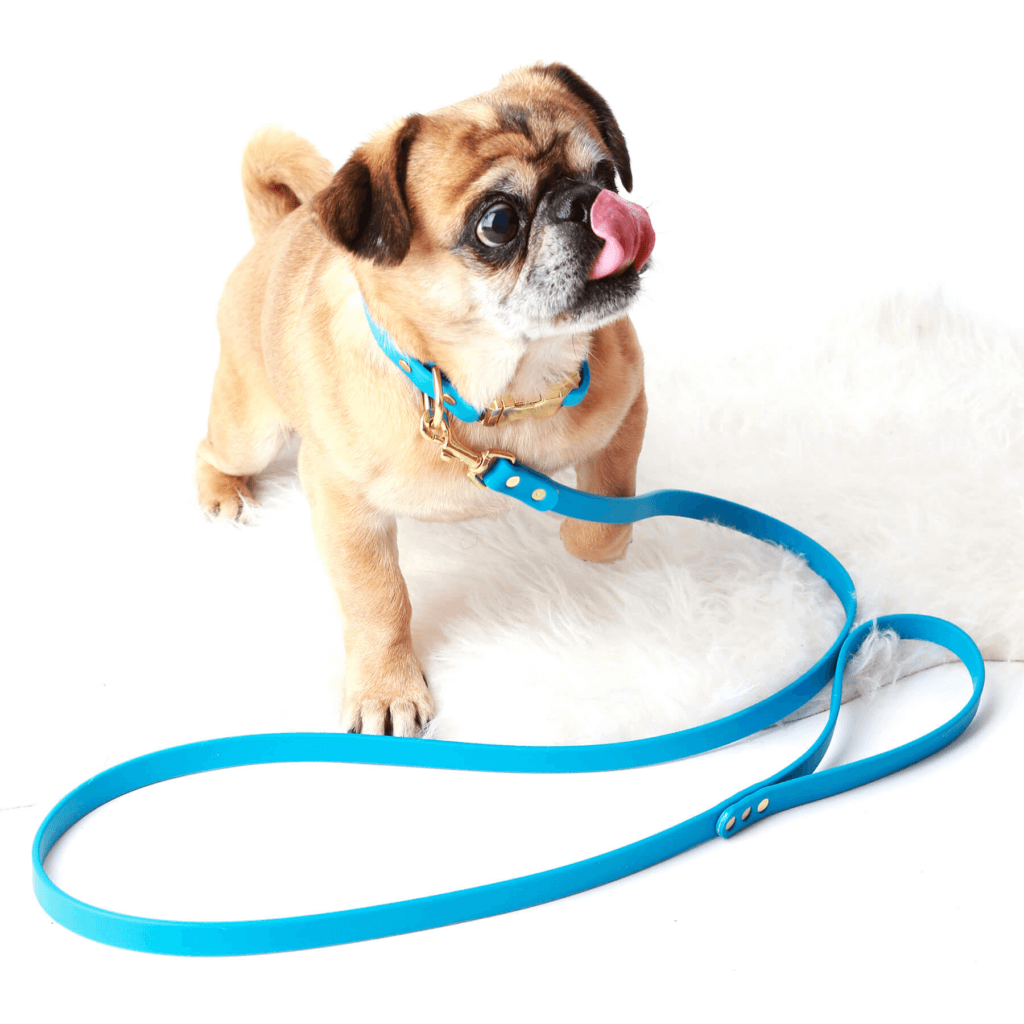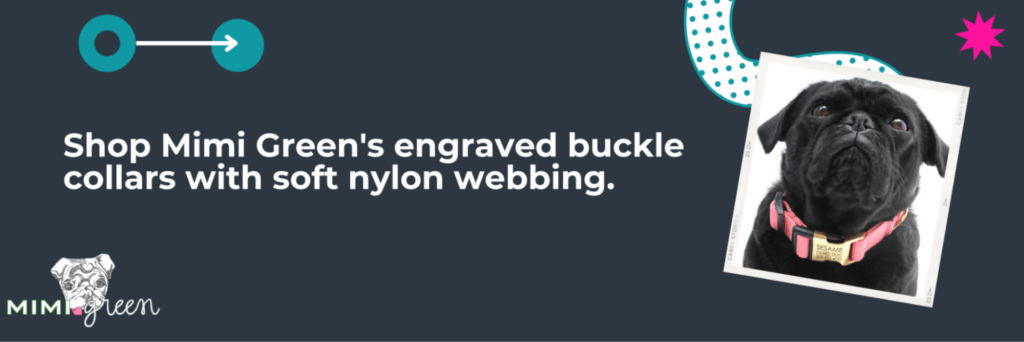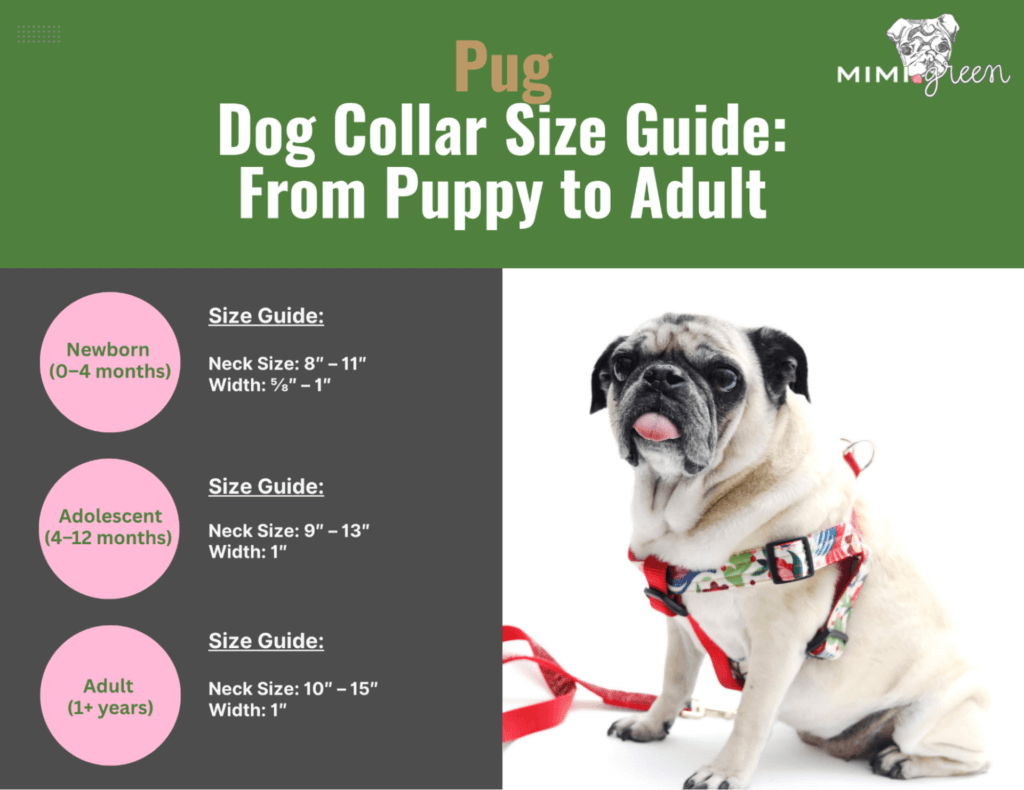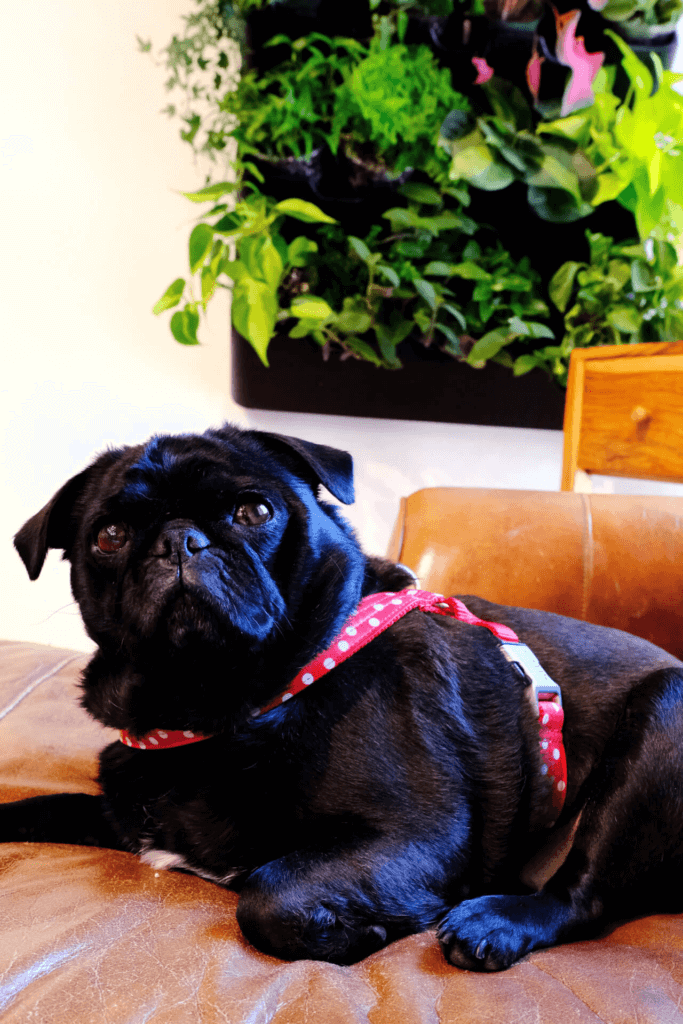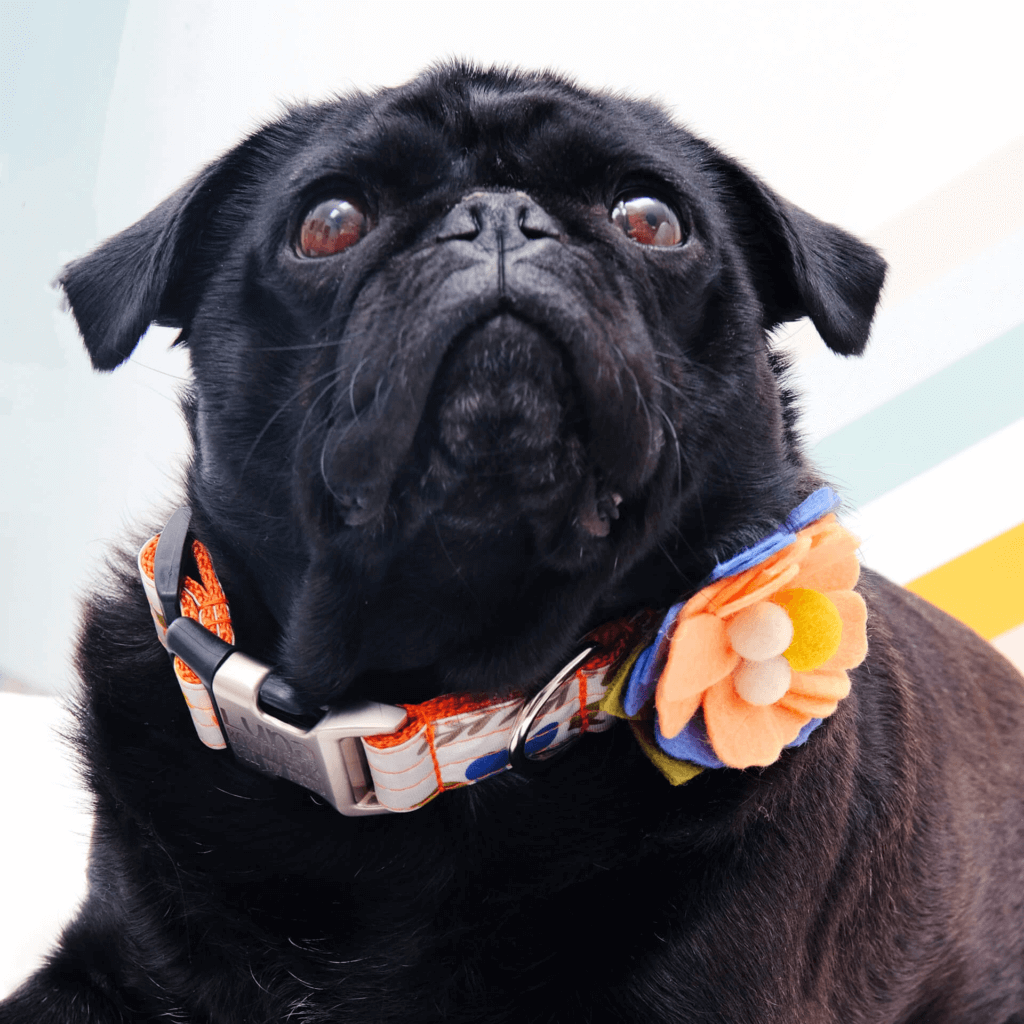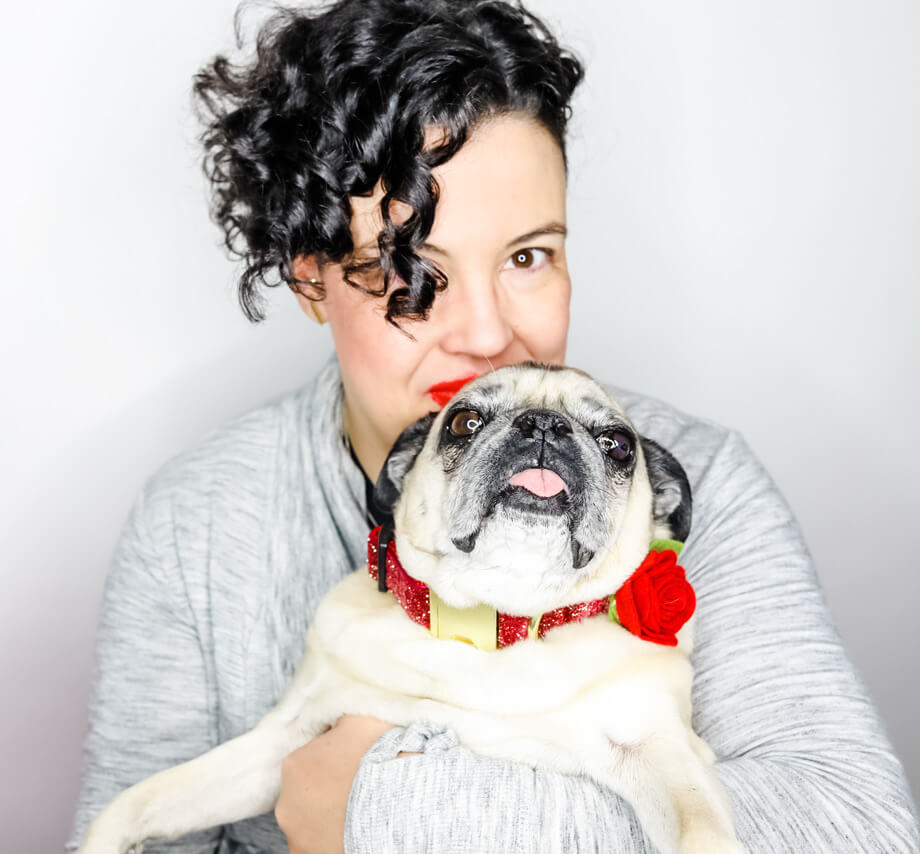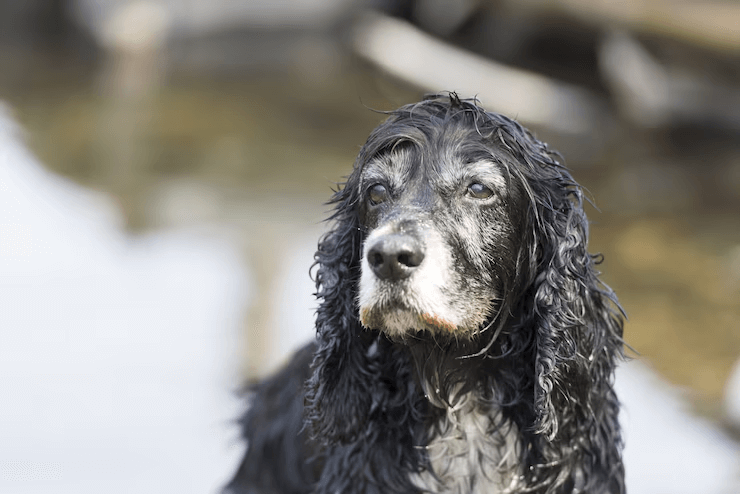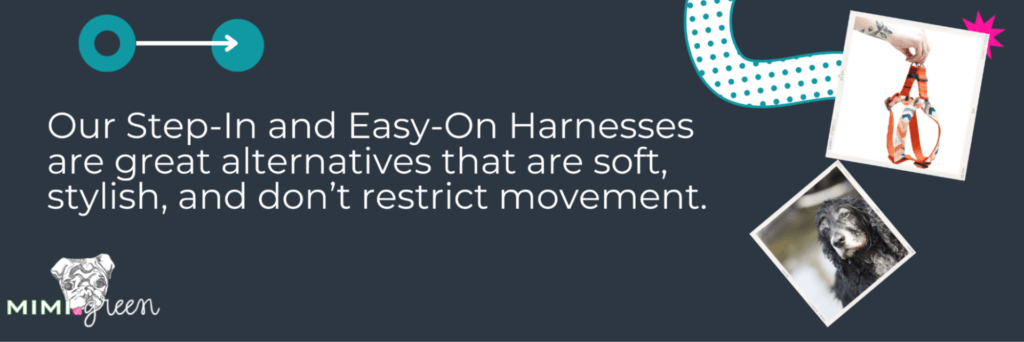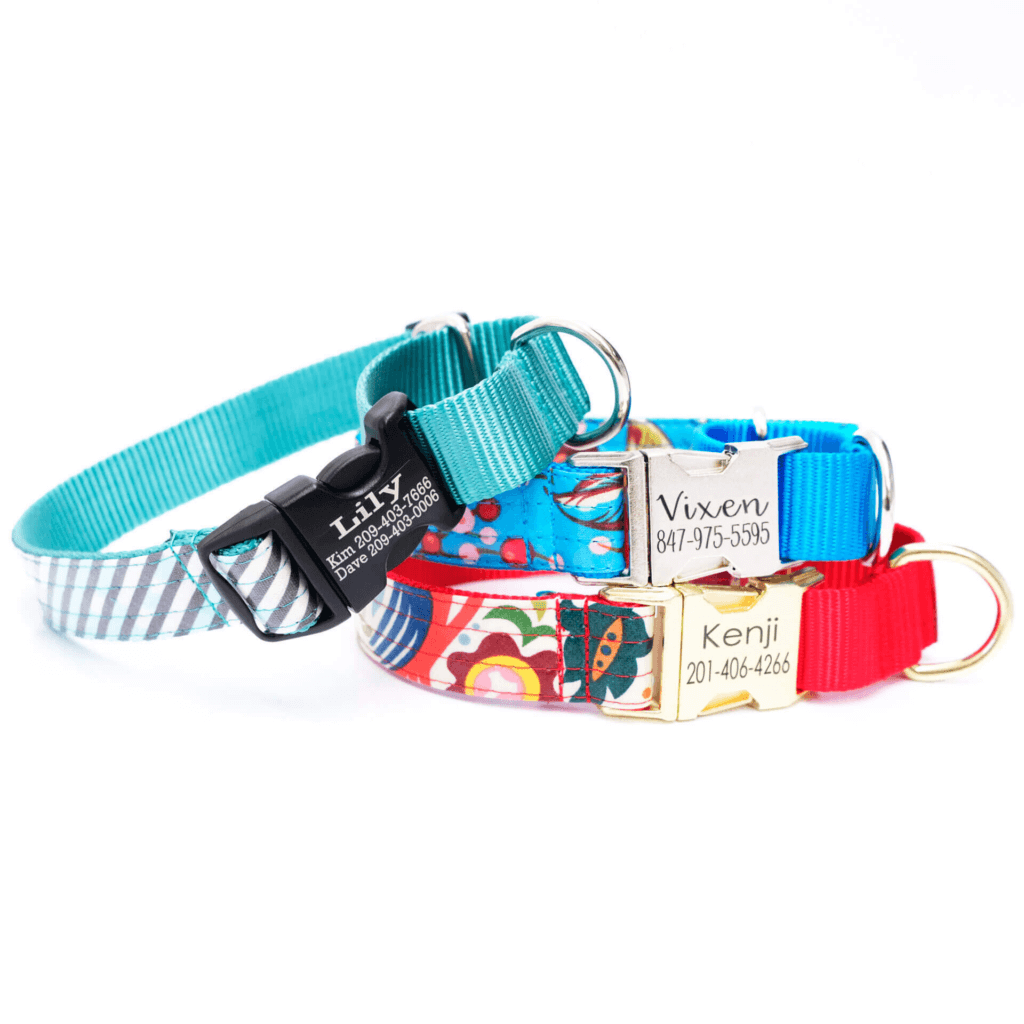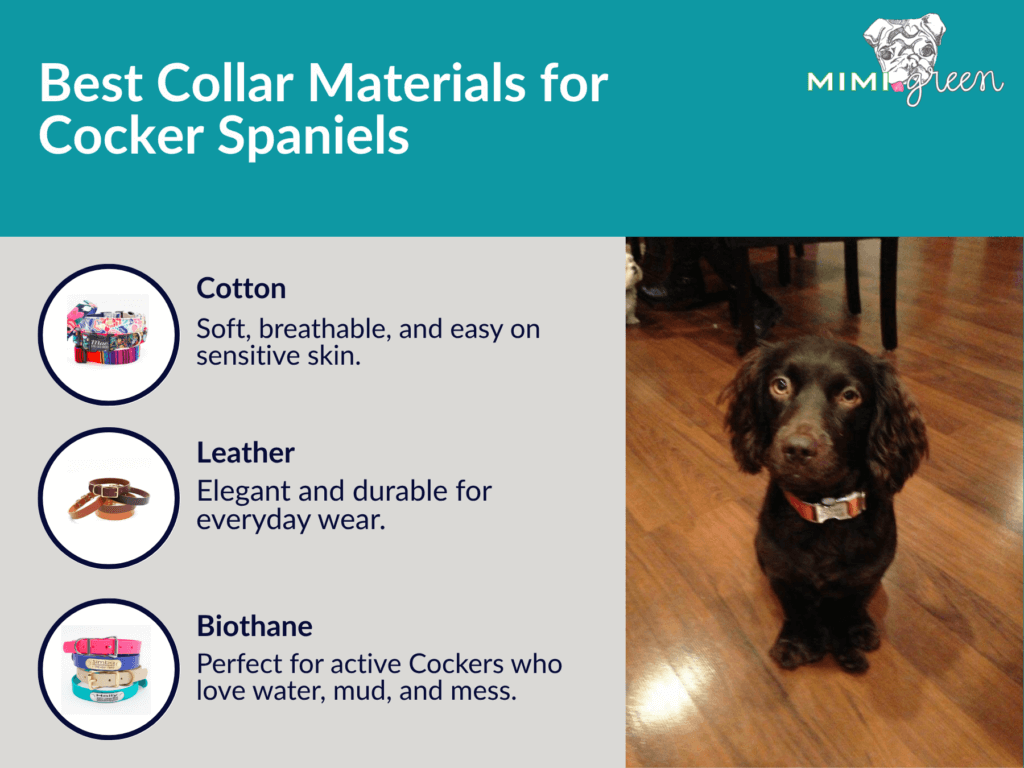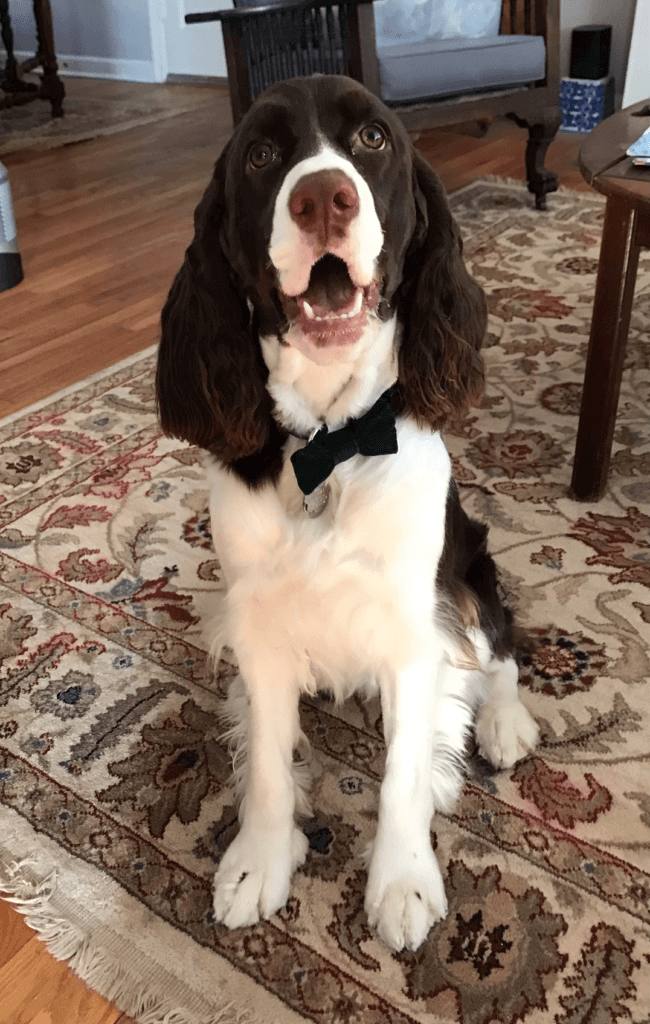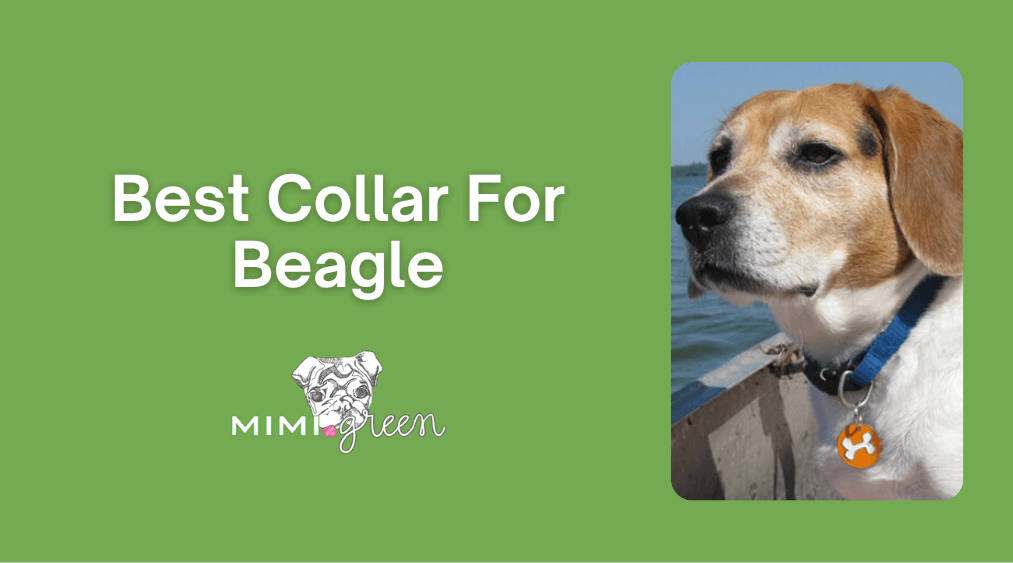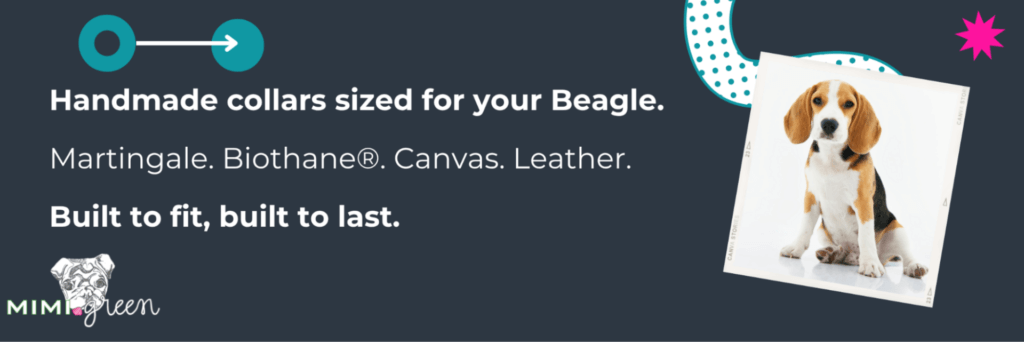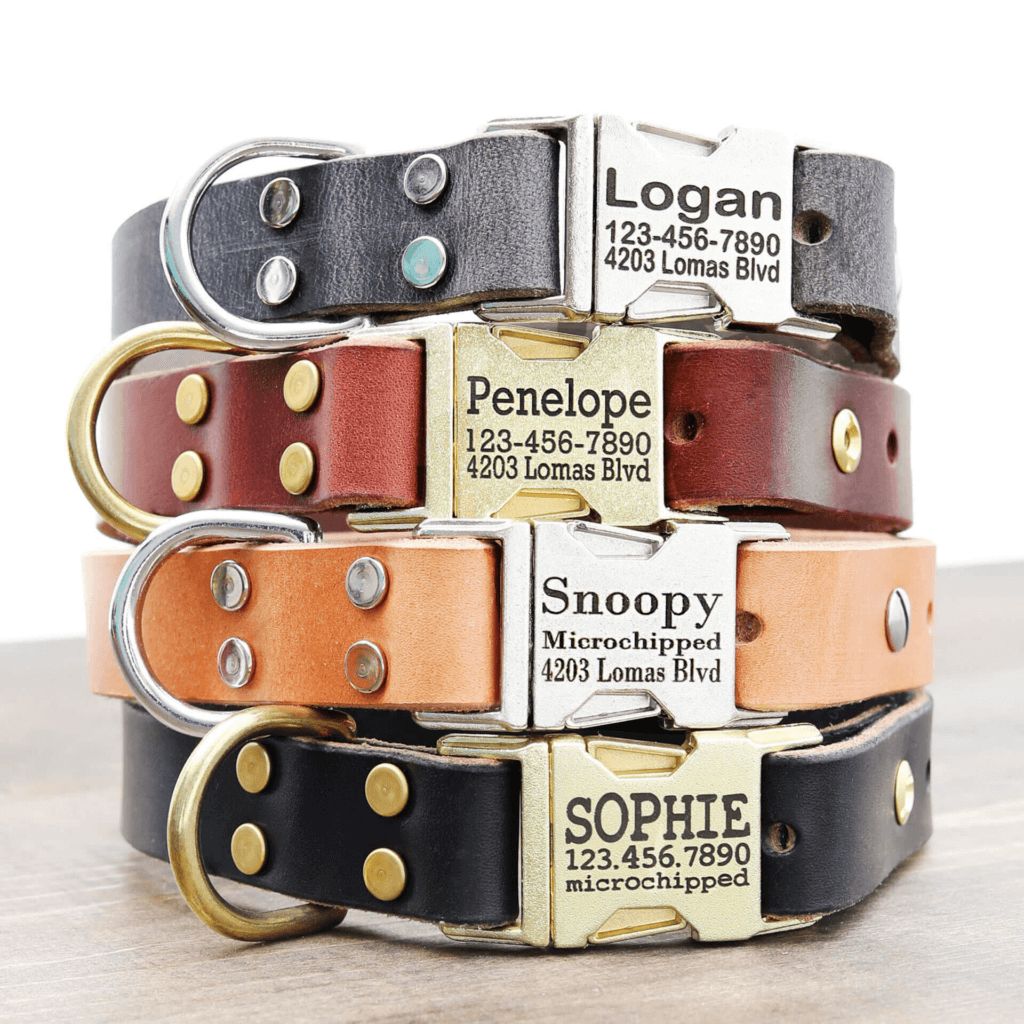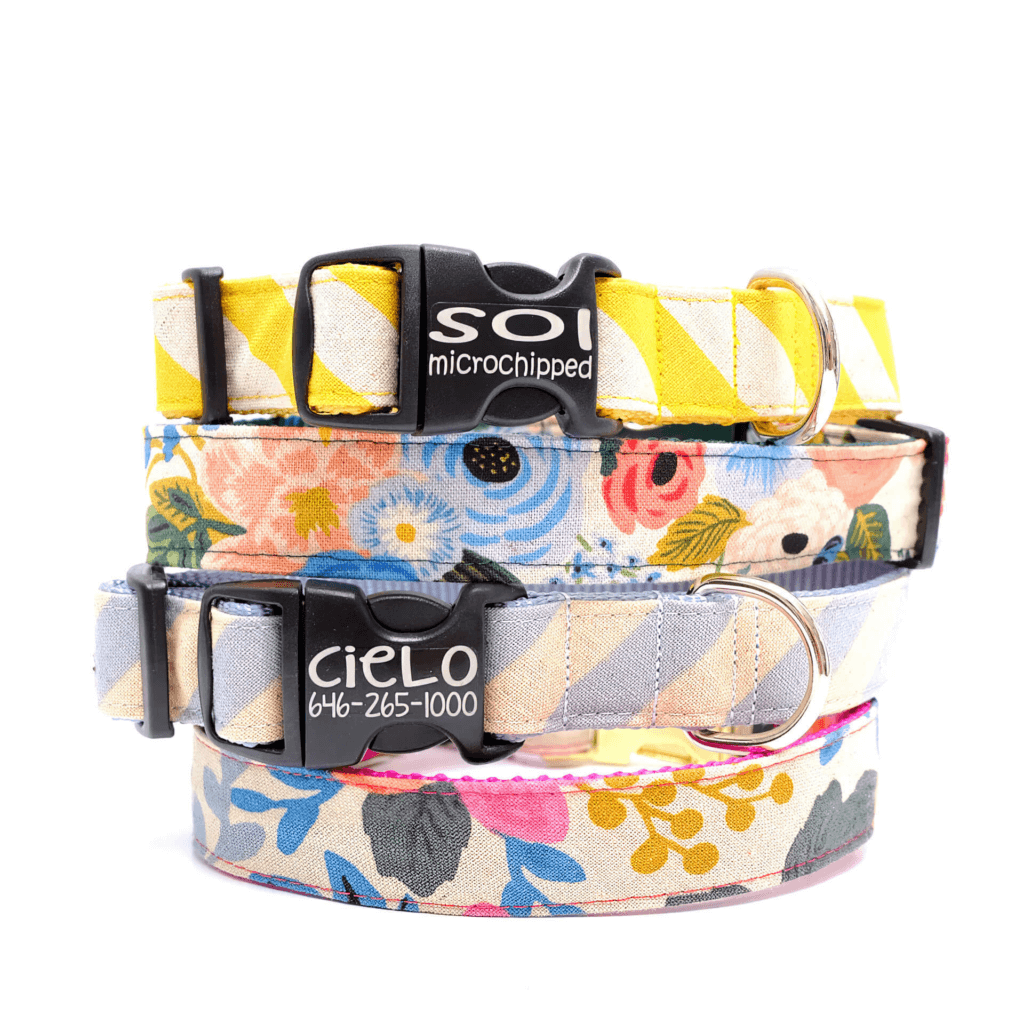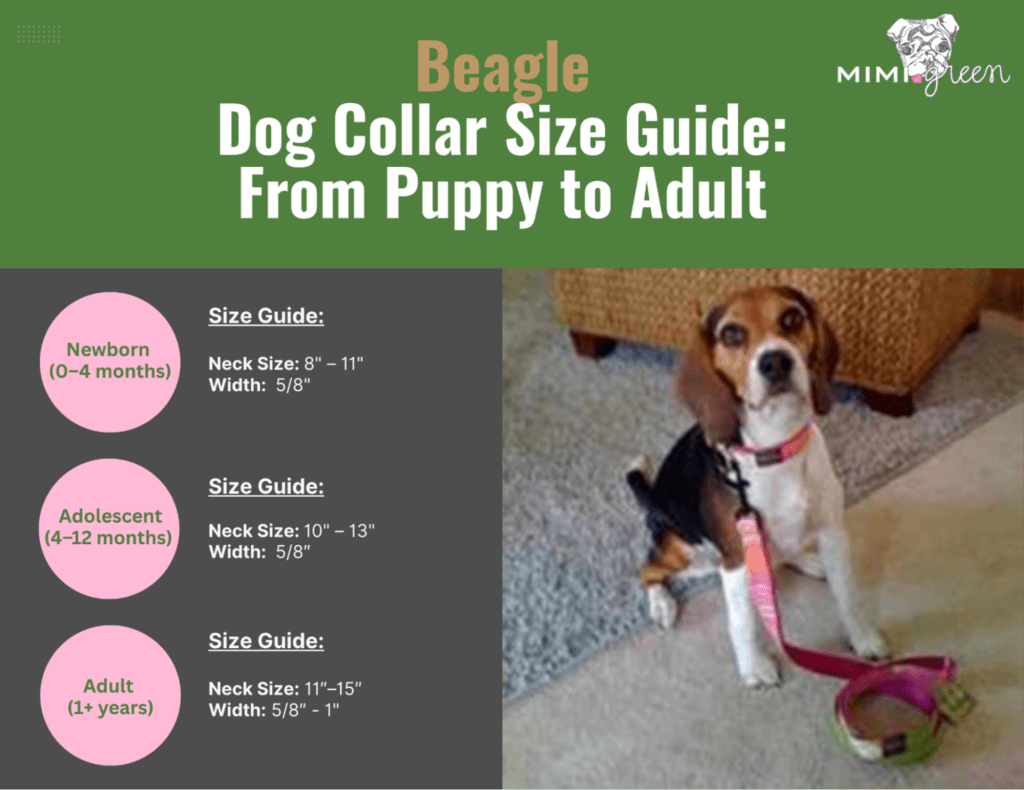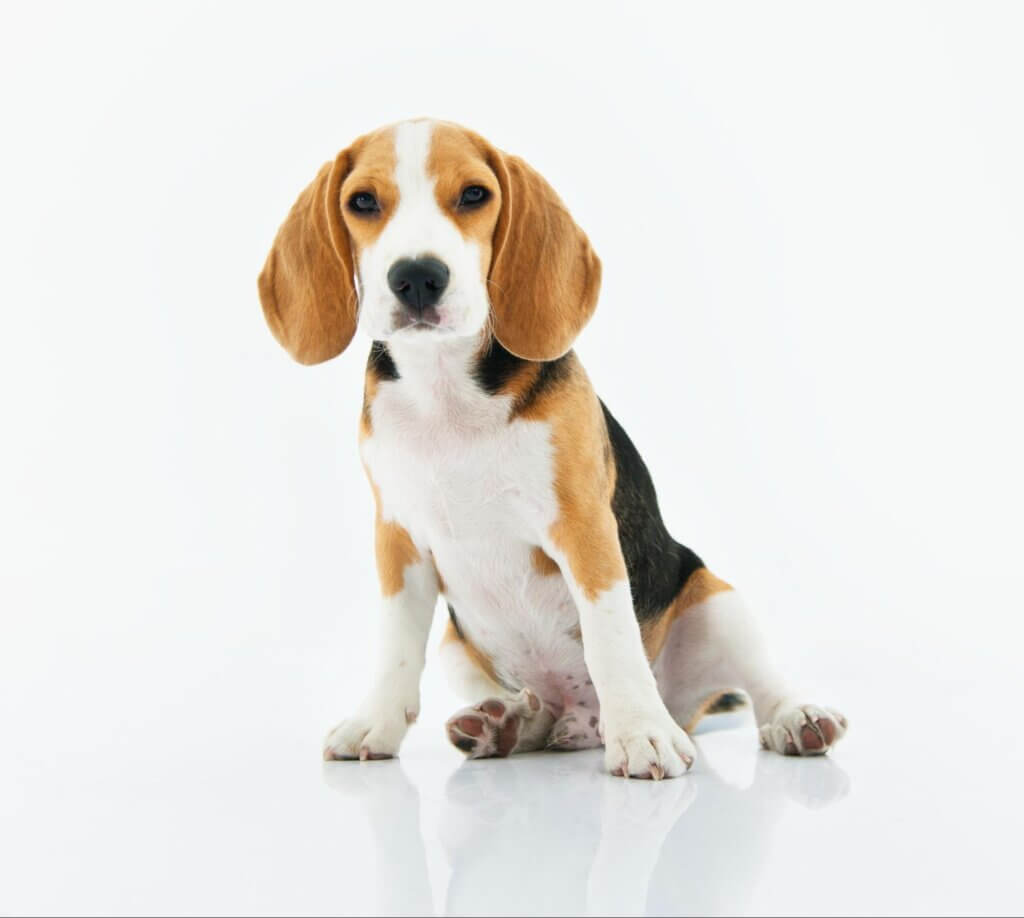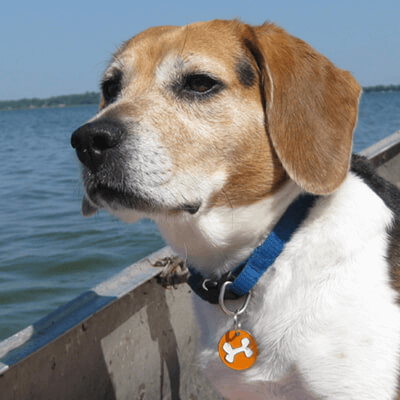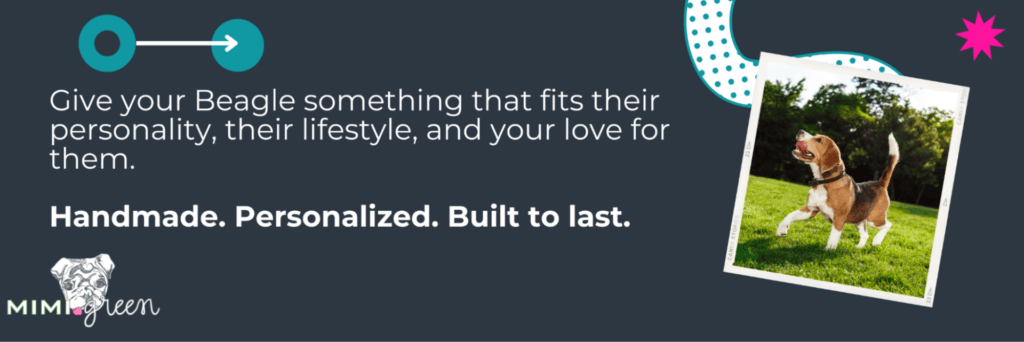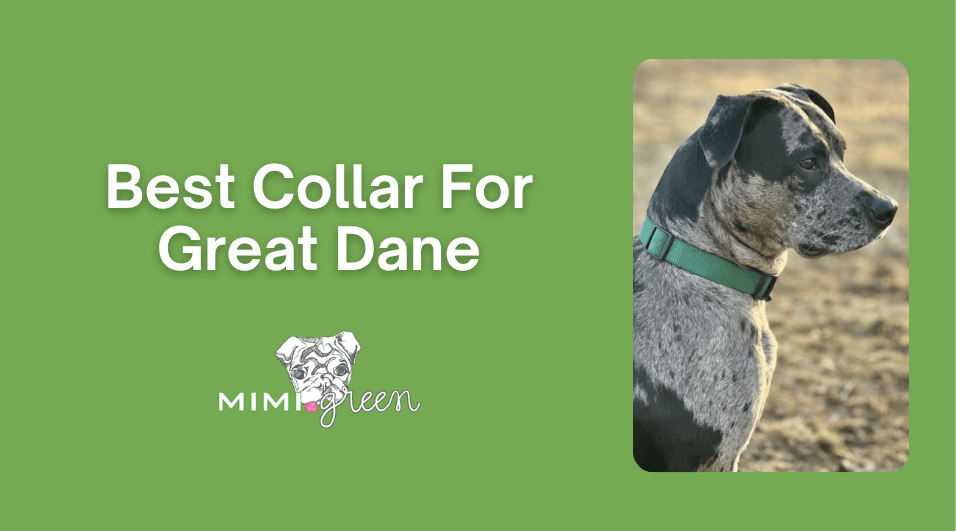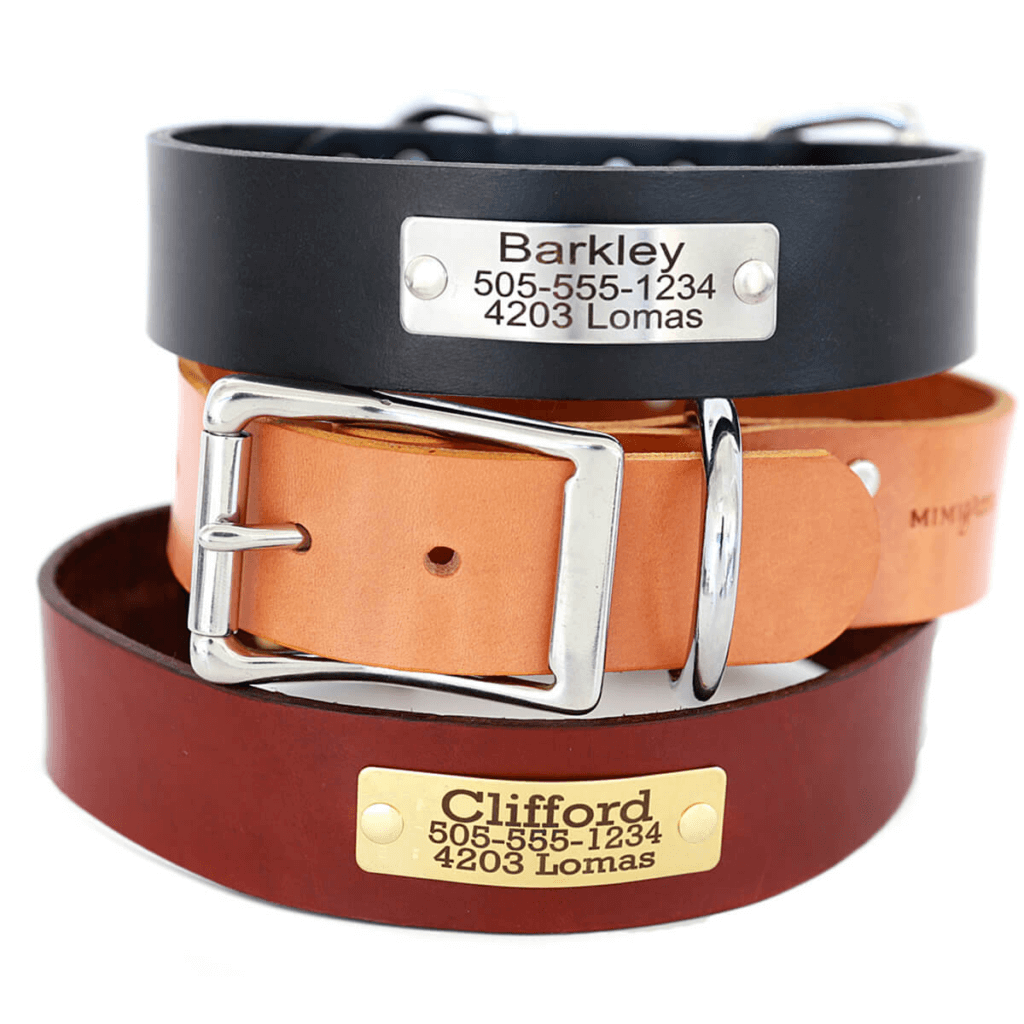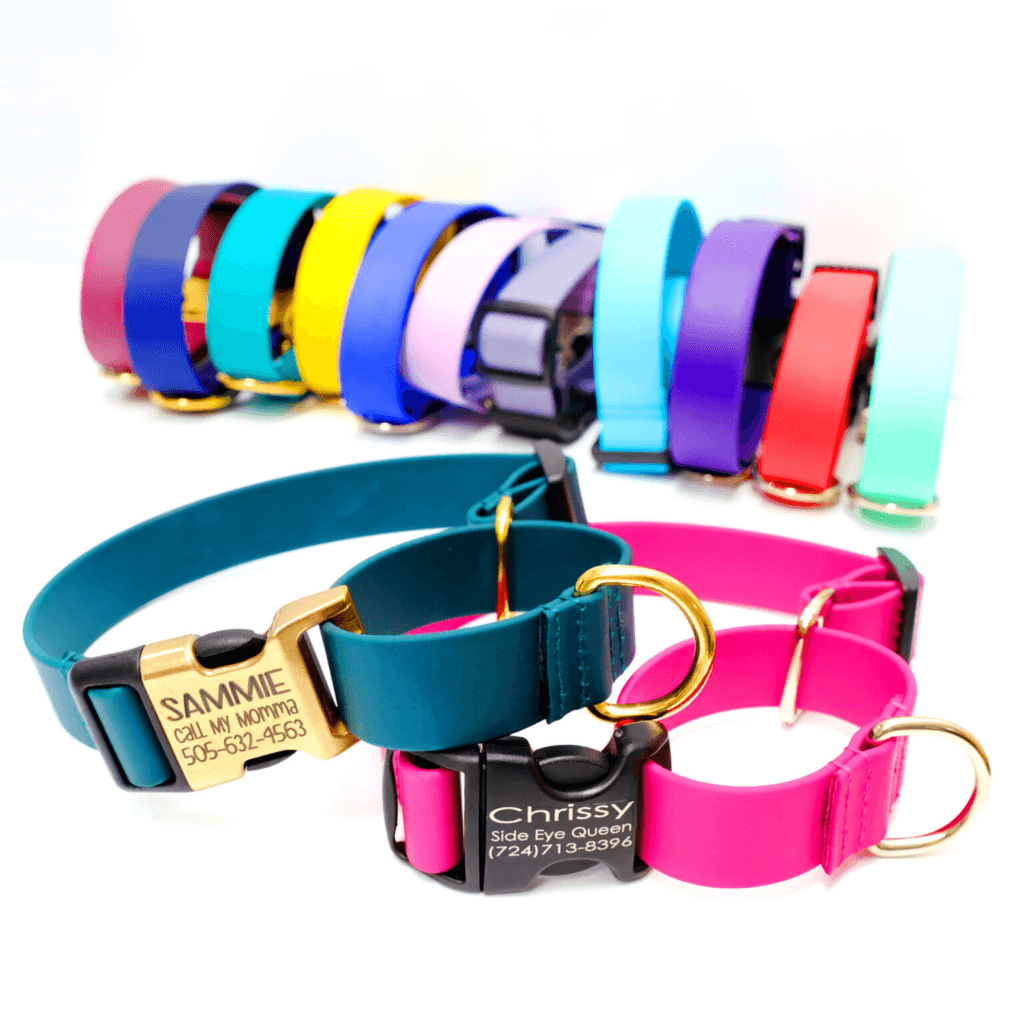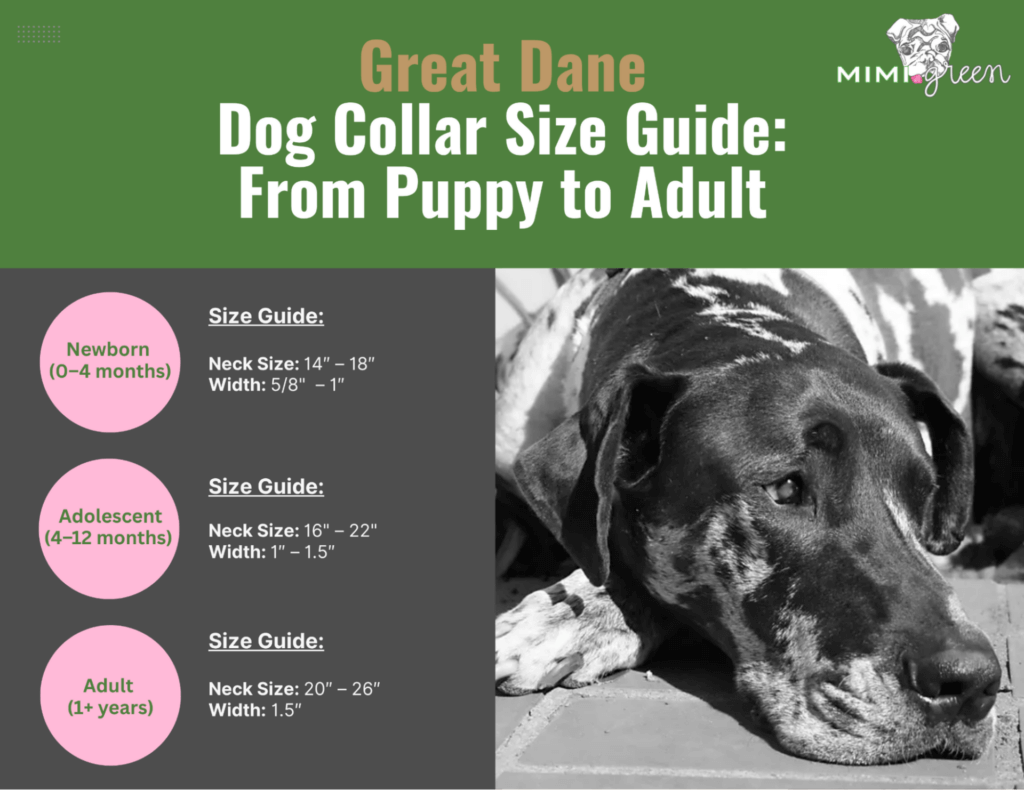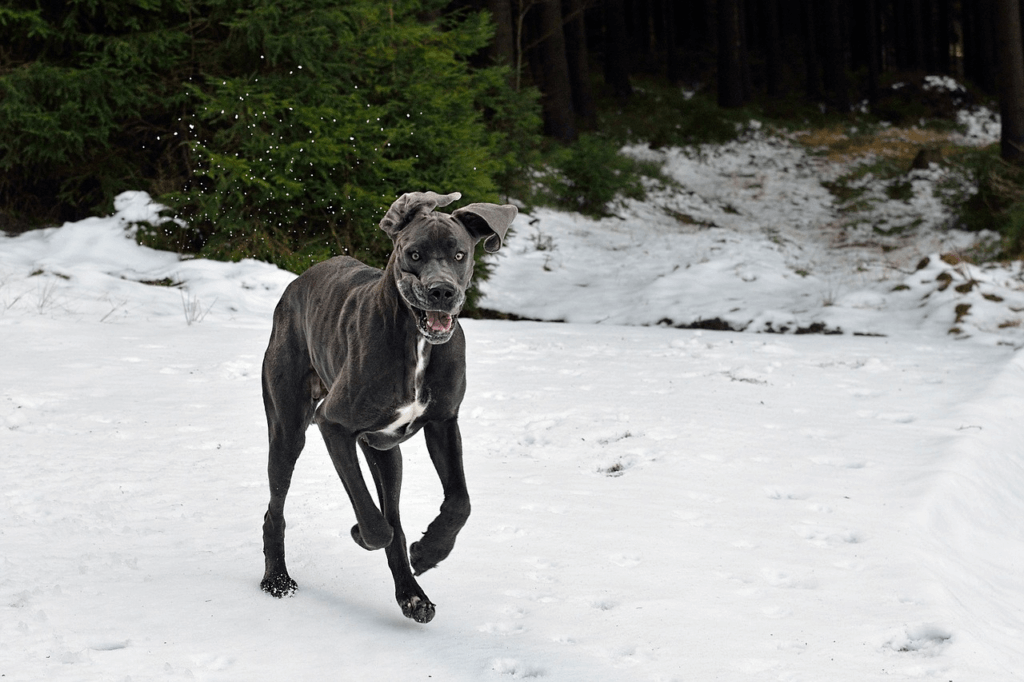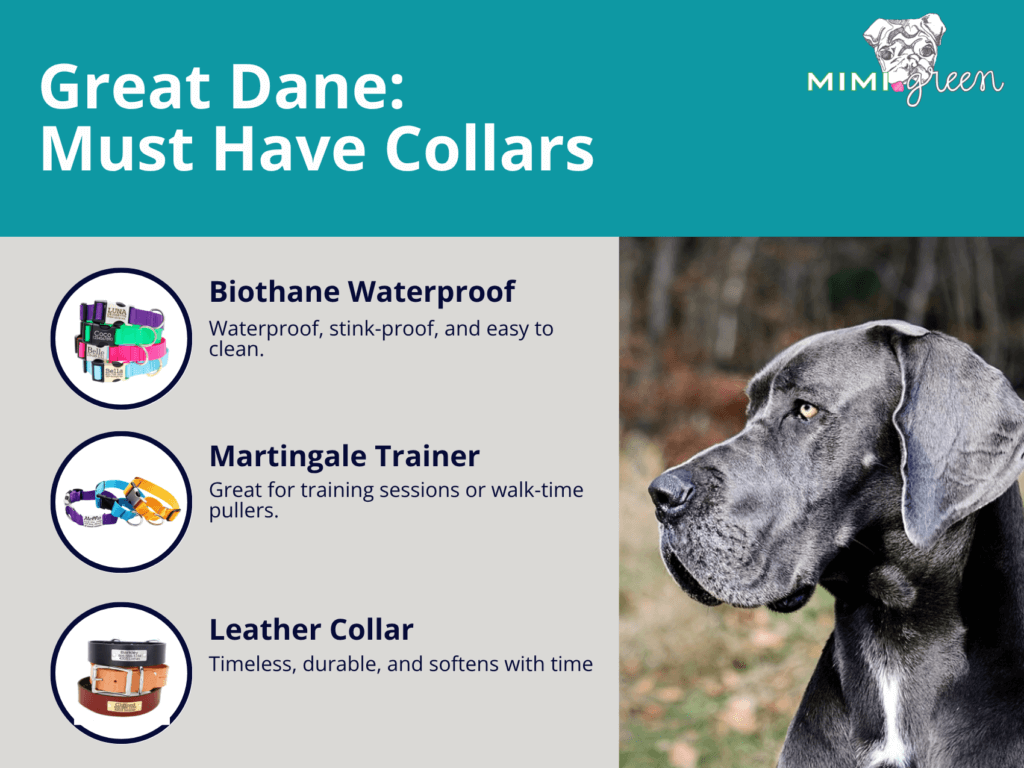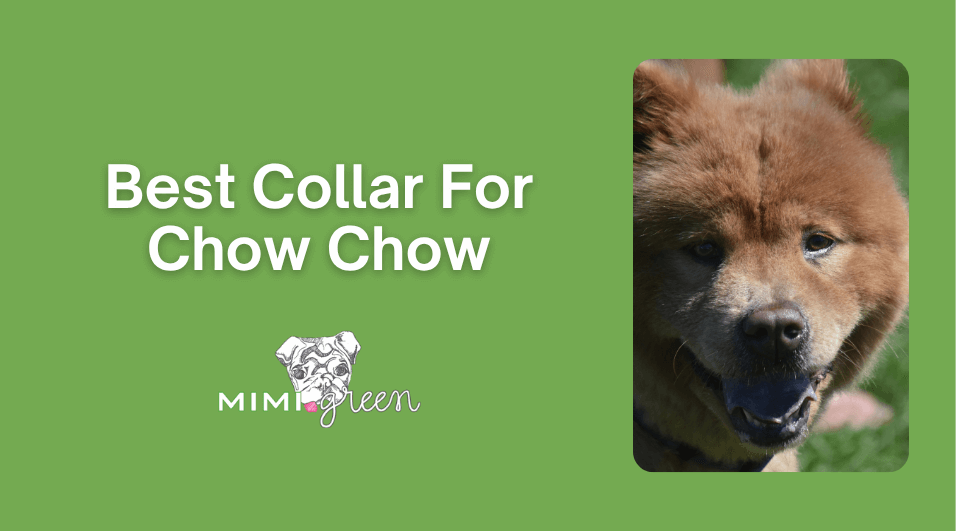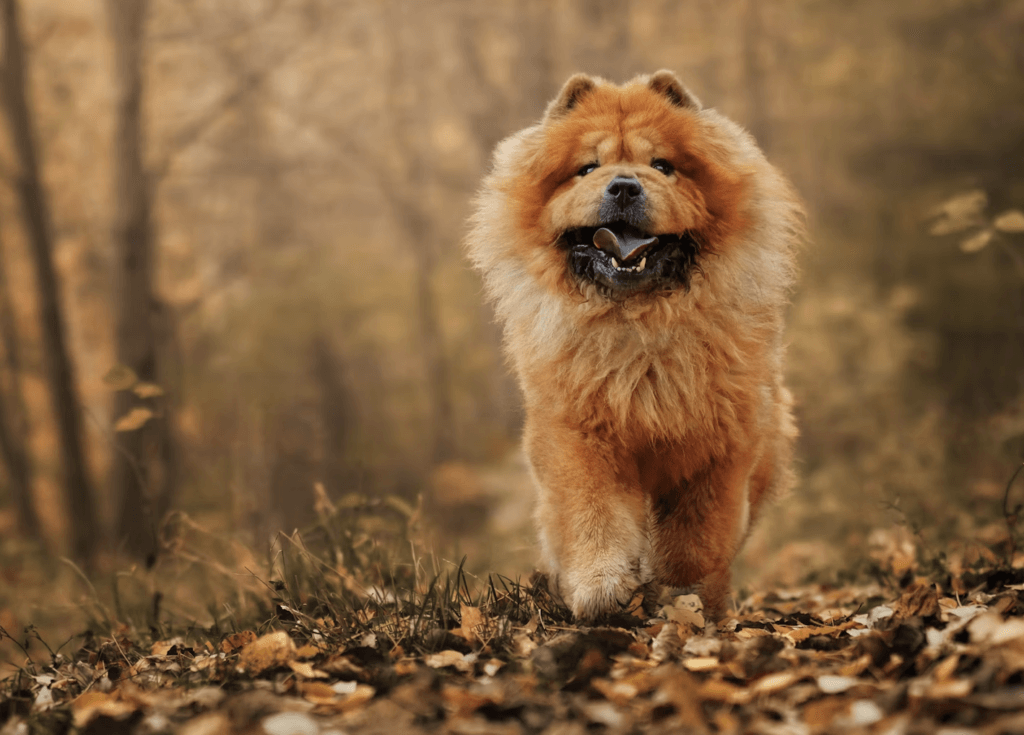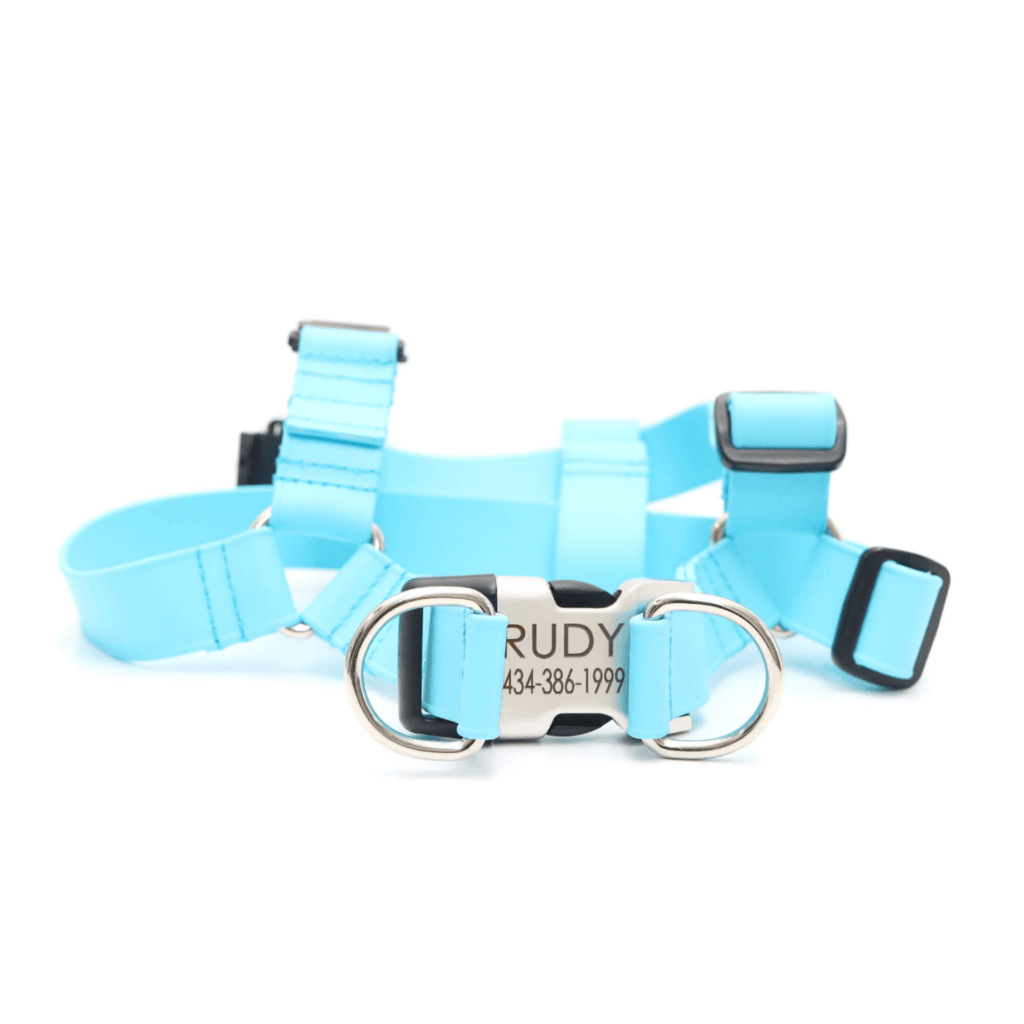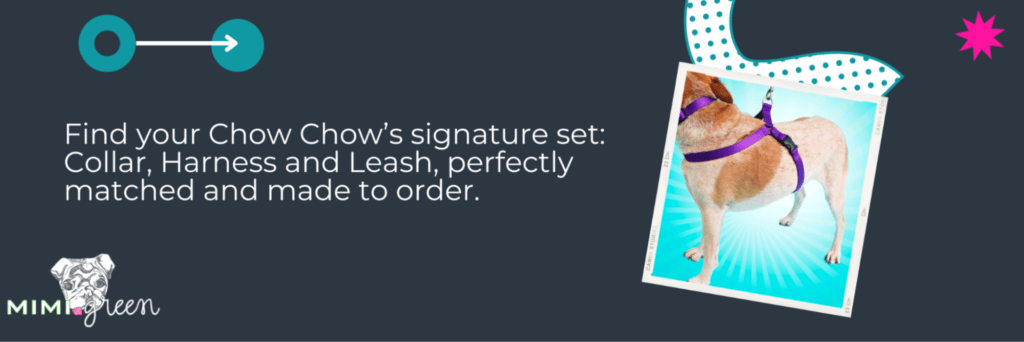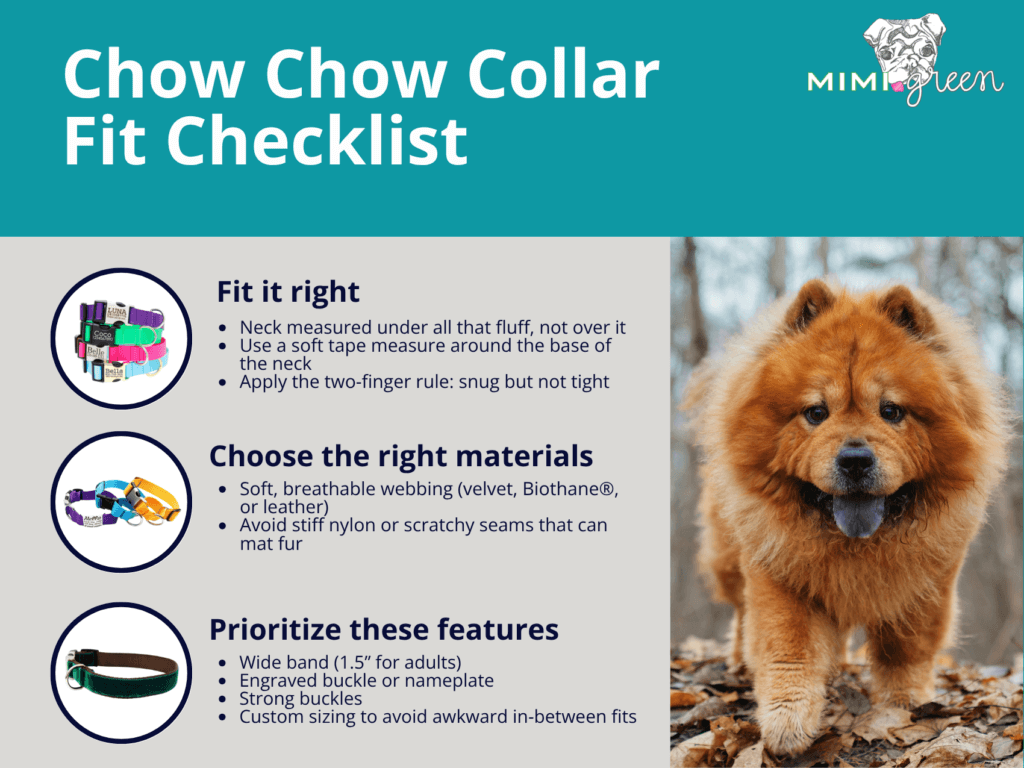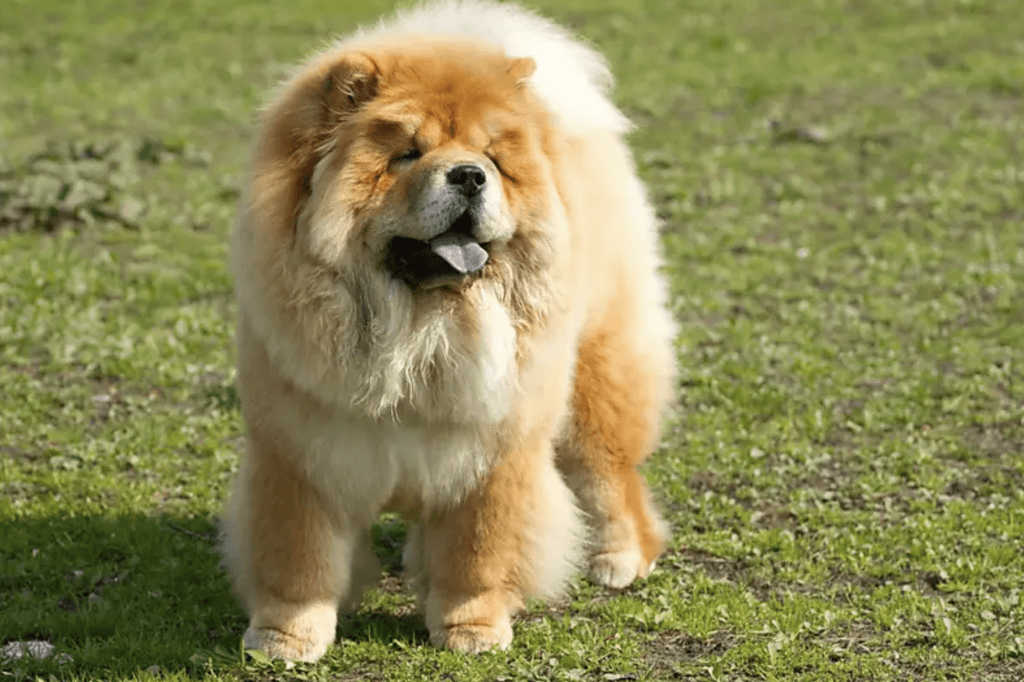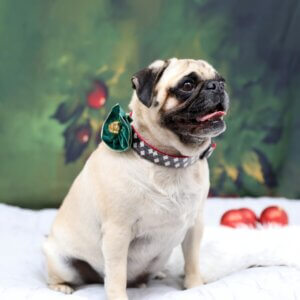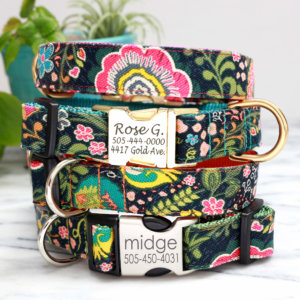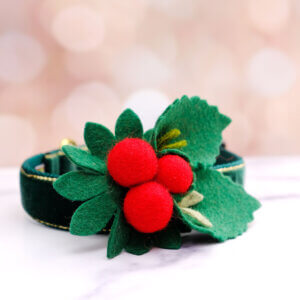The best collar for a Boston Terrier is a soft material like flannel or canvas, or an adjustable martingale that prevents escape without straining their neck. Harnesses work well for pulling, but collars are better for ID and everyday use. Choose breathable, skin-safe materials.
Boston Terriers benefit from collars that are lightweight, breathable, and made with materials that won’t irritate their skin. What matters most is fit, comfort, and choosing a design built for their body, not a generic, one-size-fits-all solution.
TL;DR – Best Collar for Boston Terriers
- Go Soft: Materials like velvet, canvas, or flannel are gentle on sensitive Boston skin
- Choose a Martingale: If your Boston is active, a martingale prevents slipping without choking
- Consider Waterproof: Biothane resists odor, moisture, and dirt, great for outdoor pups
- Ditch Dangling Tags: Opt for engraved buckle collars for quiet, secure ID
- Custom Fit Matters: Mimi Green collars are made to order for a safe, comfortable fit every time
At Mimi Green we make custom-fit, made-to-order collars, and handcrafted in the USA with your Boston’s needs in mind.
Want a full breakdown of collar types, training tips, material pros and cons, and how to measure your Boston correctly? Keep reading. We’ll walk you through every detail so you can choose the paw-fect fit with total confidence.
What Makes Boston Terriers Tricky to Fit?
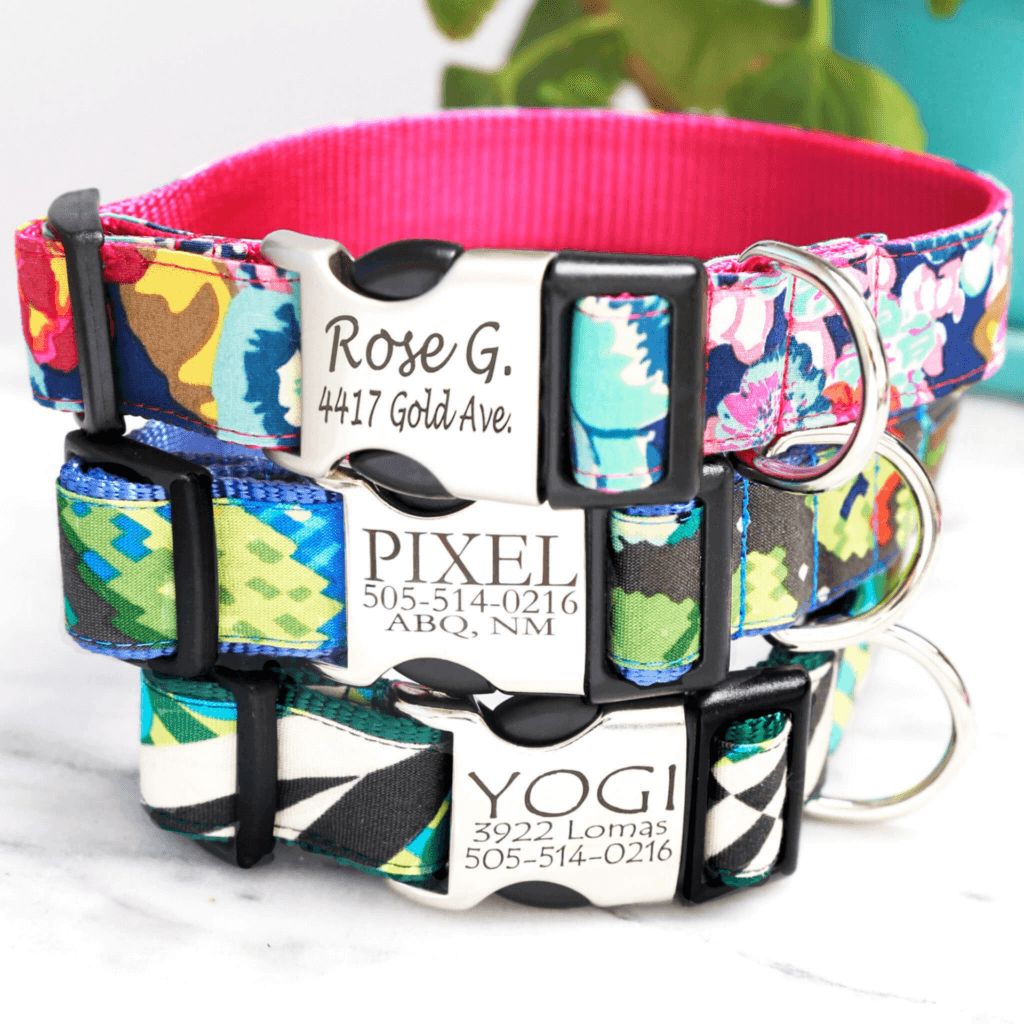
Featured Product: Personalized Dog Collar w Laser Engraved Metal Buckle
Boston Terriers might be small, but don’t let their size fool you, they’re compact athletes with big personalities. That combo makes collar fit more than a fashion choice.
- Their short, stout necks and flat faces make them prone to trachea pressure. That means collars that pull too tight or sit too low can cause breathing discomfort.
- Their sensitive skin reacts quickly to rough webbing, stiff seams, or abrasive materials, resulting in rashes or bald spots.
- And then there’s the strength. Boston Terriers love to pull, dart, and zigzag. A collar that’s too loose? They’ll slip it. Too snug? They’ll scratch at it.
That’s why Boston parents need collars with a tailored fit, smooth finish, and materials that won’t rub raw.
Collar vs Harness for Boston Terriers, Which is Better?
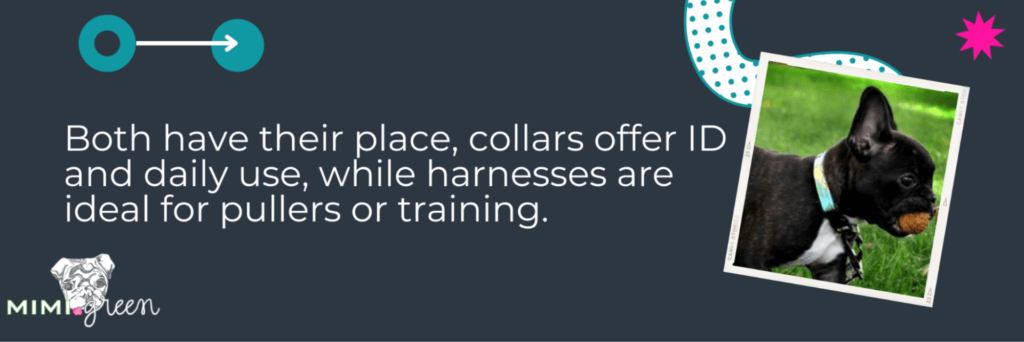
Here’s when to use each tool:
- Harness: Ideal for training, longer walks, or Boston Terriers that tend to pull.
- Collar: Perfect for everyday wear, ID tags, and short strolls. If your pup is leash-trained or only lightly pulls, a well-fitted collar is a reliable option.
Some vets recommend harnesses for leash training, to prevent neck strain. But for day-to-day wear and quick outings, a collar is easier and more comfortable for many dogs.
The 5 Best Types of Collars for Boston Terriers

With dozens of styles out there, these five collar types consistently rise to the top for Boston Terriers:
- Martingale Collars: Prevents slipping without choking, ideal for Bostons who back out of regular collars.
- Flannel Collars: Soft on sensitive skin, stylish for everyday wear.
- Biothane Waterproof Collars: Great for puddle-prone pups or beach outings. Our waterproof Biothane® collars resist odor, are easy to clean, and come in vibrant colors Boston Terriers wear well. I would recommend the Lightweight.
- Custom Engraved Buckle Collars: Collars like the Mimi Green engraved buckle styles keep your contact info secured and readable, right on the collar.
- Reflective Dog Collars: These styles help keep your Boston visible.
- Fi-Compatible Dog Collars: Designed with comfort and style, and compatible with the Fi GPS tracker.
How to Measure Your Boston Terrier for a Perfect Fit
Getting the right collar size is the difference between peace of mind and constant adjustments.
Step-by-Step Measuring Guide:
- Use a soft tape measure and wrap it around the base of your Boston’s neck, where the collar naturally rests.
- Apply the two-finger rule: You should be able to slip two fingers between the tape and your dog’s neck. That’s your target size.
- Round up slightly for adjustability, especially if your Boston is still growing.
Puppy vs. Adult Fit
- Puppies grow fast, check fit every 2–3 weeks.
- Adults still fluctuate with weight, fur, and activity, monthly checks keep things safe and comfy.
At Mimi Green, every collar is made to order. That means we skip the generic sizing and build collars based on real dog measurements.
Because a perfect fit is the only way to make sure your Boston is secure and comfortable on every walk.
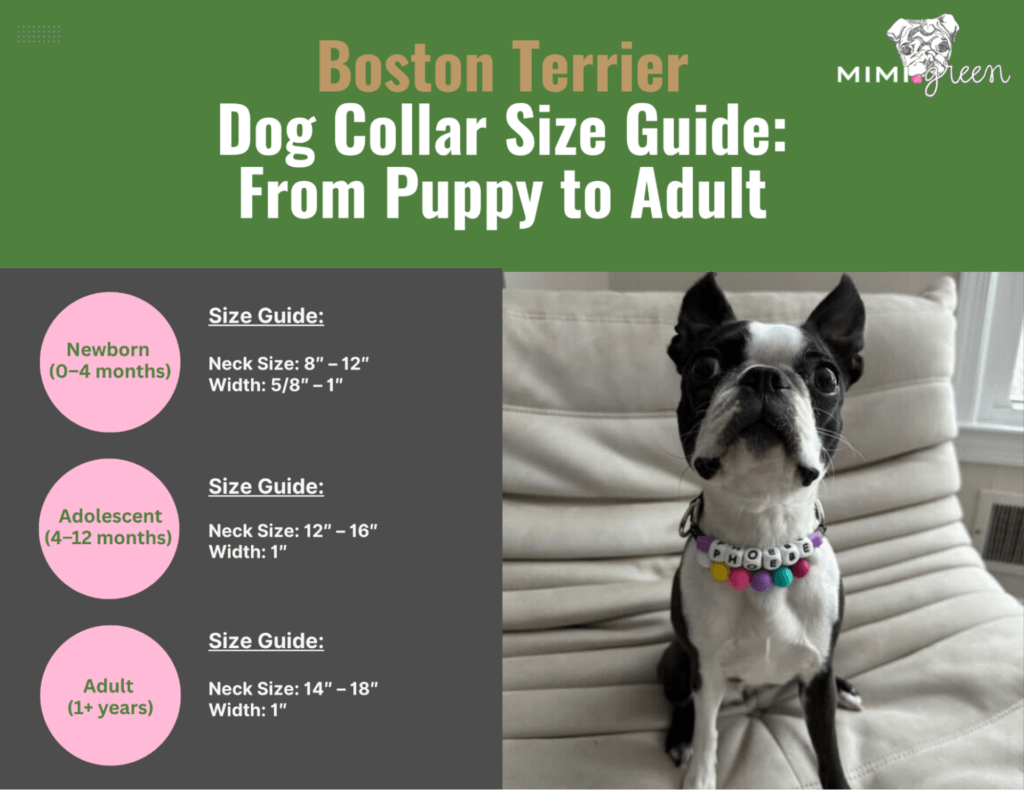
Collars That Stop Boston Terriers From Pulling
Boston Terriers may be compact, but they’re strong-willed walkers. If your pup loves to surge ahead or zigzag across the sidewalk, you’re not alone, and you’re not out of options.
- Why they pull: Boston Terriers are alert, energetic, and curious. That means squirrels, leaves, or even a new sidewalk scent can trigger a tug.
- Martingale collars offer gentle correction without choking. When your dog pulls, the collar tightens just enough to redirect, not restrict.
- Easy-On Harness moves the pressure to their chest and helps reduce pulling instantly. Great for leash training and walks where your Boston gets extra excited.
Training helps too. Short, reward-based sessions build leash manners over time. A treat for calm walking? Worth its weight in gold.
For a custom setup, Mimi Green offers martingales built for comfort and style.
Pair one with a matching harness and you’ve got a duo designed to keep pulling in check, and make your Boston look like the best-dressed pup on the block.
What Materials Do Boston Terriers Like Best?
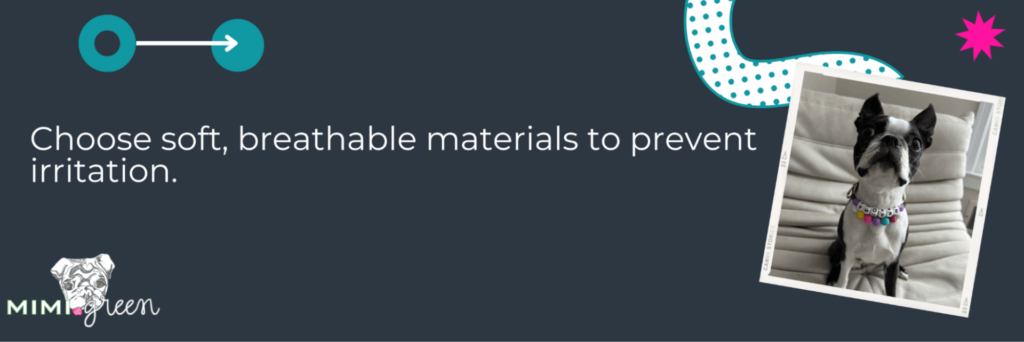
With sensitive skin and a love of movement, Boston Terriers need collars that feel as good as they look. Here’s what works best:
- Canvas and flannel: Soft, breathable, and gentle on short coats.
- Biothane®: Waterproof, stink-proof, and wipe-clean, perfect for beach days or muddy park romps.
- Nylon and leather: Lightweight and reliable when smooth-finished, but avoid anything stiff or scratchy.
Mimi Green’s collars are crafted with Boston Terriers in mind: soft edges, skin-safe materials, and designs that stay comfortable through zoomies, nap time, and everything in between.
Signs Your Boston Terrier’s Collar Needs Replacing

A collar isn’t forever, especially not for an active, growing pup. Watch for these signs it’s time to swap:
- Stretched webbing or fraying edges
- Cracked buckles or loose stitching
- Skin marks, fur loss, or resistance to wearing the collar
- Frequent readjustments due to growth or weight changes
For puppies, check the fit every 2–3 weeks. Even adult Boston Terriers benefit from monthly checks, especially after grooming, seasonal weight changes, or growth spurts.
Still, a quick visual check every few weeks keeps your dog safe, comfy, and looking their best.
Collar + Leash Combos Boston Terriers (and Owners) Love
When your Boston Terrier looks great and walks even better, you’ve got the right combo. A coordinated collar and leash set adds ease, safety, and style to every outing.
- Matching sets make daily walks feel seamless and pulled-together.
- Mimi Green offers coordinating leashes, bow ties, and flowers, so your Boston’s gear reflects their personality (and yours).
- For best results, choose a leash that’s 4–6 feet long, enough room for curiosity, not chaos.
You can also mix and match styles: a waterproof Biothane® leash with a velvet martingale, or a custom engraved buckle collar with a floral leash for spring.
Whatever your walk style, Mimi Green helps you build a complete look that works just as well in the park as it does in your camera roll.
FAQs: Boston Terrier Collar Concerns, Solved
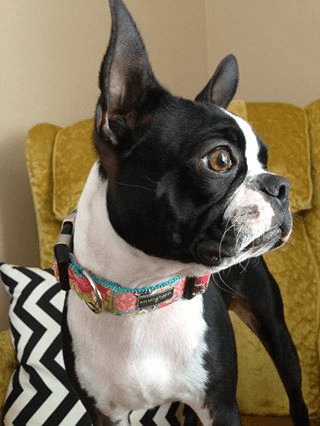
- Can I leave my Boston Terrier’s collar on all day? Yes, for light, well-fitted collars. But remove collars during crate time or unsupervised play to avoid snagging risks.
- What if my Boston doesn’t like wearing a collar? Try short sessions and positive reinforcement. Reward calm behavior, and choose a lightweight, soft material to reduce discomfort.
- Should I use a harness or collar for leash training? Harnesses are ideal for leash training. Use a collar for ID only during training phases.
- What are signs a collar no longer fits? Red marks, fur loss, or your pup slipping out are big clues. Always follow the two-finger rule and re-measure monthly for puppies.
- Are breakaway collars safe for Boston Terriers? Yes, ours have a two d-ring system for walks to prevent release
- What’s the best material for sensitive Boston Terrier skin? Nylon, velvet, and soft leather are all gentle.
Checklist – What Your Boston Terrier Really Needs

Want to keep things simple? Start with this checklist to make sure your Boston’s setup is complete:
✅ A well-fitted Martingale or engraved ID collar
✅ Easy-On harness for training and walks
✅ Matching leash (4–6 ft) for controlled adventures
✅ Soft-touch materials for comfort
✅ ID that won’t fall off (engraved buckle or embroidered name)
✅ Fit check every few weeks, more often for growing puppies
✅ Cleaning supplies (mild soap, cloth, or air-dry routine)
This setup keeps your Boston Terrier safe, comfy, and stylish, without the guesswork.
Final Tips from Team Mimi Green
At Mimi Green, we know one size doesn’t fit all, especially not for Boston Terriers. Their short necks, energetic personalities, and sensitive skin deserve gear that’s made just for them.
That’s why we:
- Handcraft every collar with your dog’s actual measurements, not a generic size chart
- Use materials like velvet, BioThane®, and hypoallergenic cotton for comfort and durability
- Design with safety in mind, whether it’s reflective stitching, or engraved ID buckles that won’t jingle loose
Our team makes every collar to order in the USA, in a small studio where quality, care, and personality matter. It’s not just a collar. It’s a daily connection between you and your dog.
The Right Collar, Made Just for Your Boston
You want a collar that fits right, feels good, and keeps your Boston Terrier secure, without giving up on style or function. That’s exactly what we do.
Explore Mimi Green’s solutions for Boston Terriers:
- Custom Martingale Collars – Escape-resistant, gently corrective, and soft enough for daily wear
- Waterproof Biothane® Collars – Built for mud, rain, and zoomies with zero odor retention
- Engraved ID Buckle Collars – Safety and convenience, without the dangling tag
Every collar is sewn by our small team, made to order, and tailored to your pup’s personality. No generic sizes. No factory-made shortcuts.
Your Boston Terrier is one of a kind. Their collar should be too.
👉 Find your perfect fit at Mimi Green

